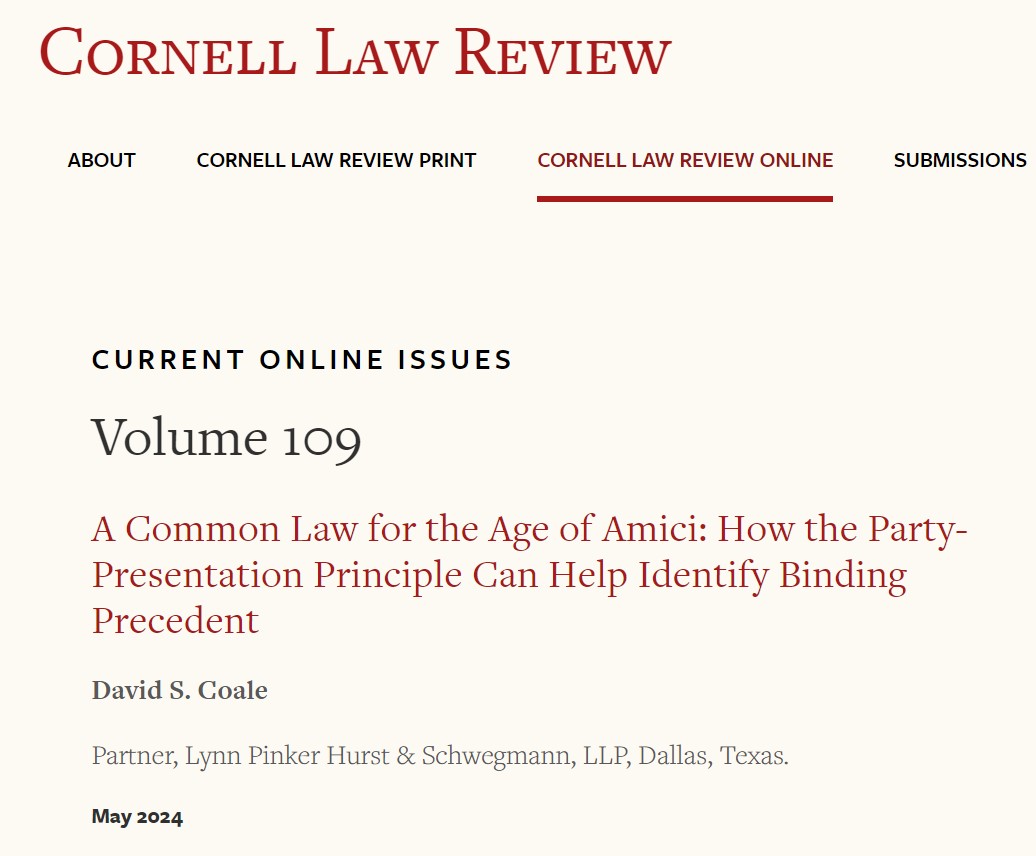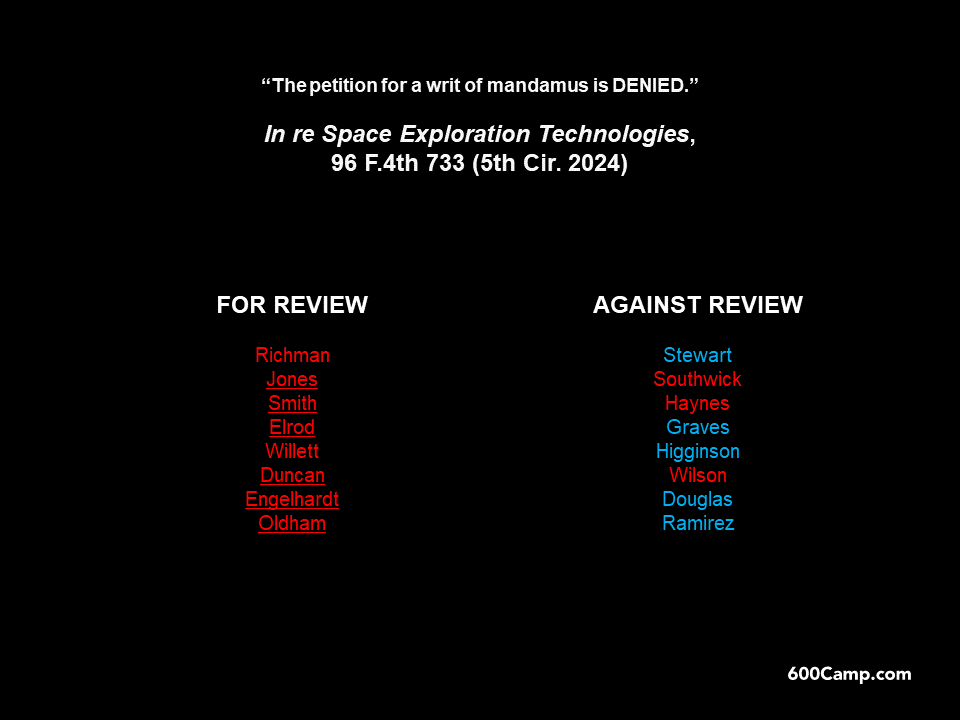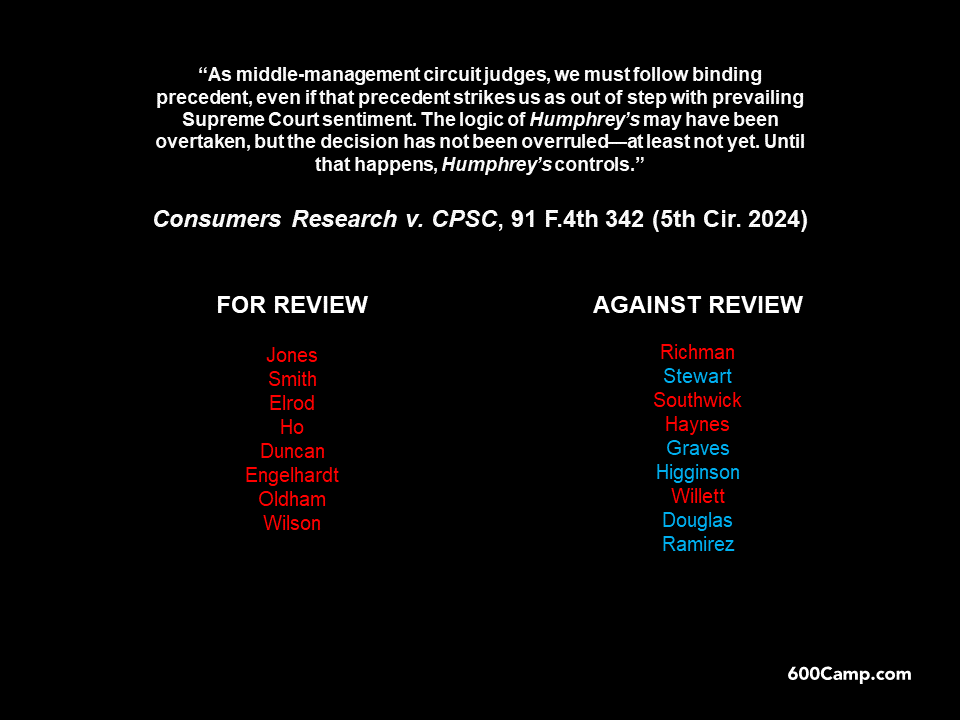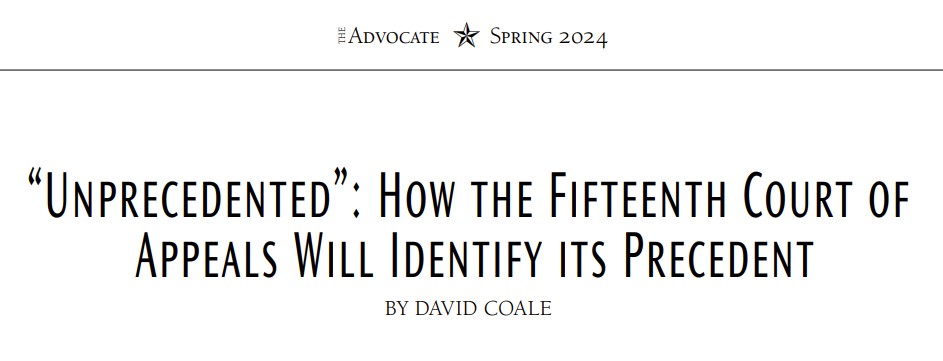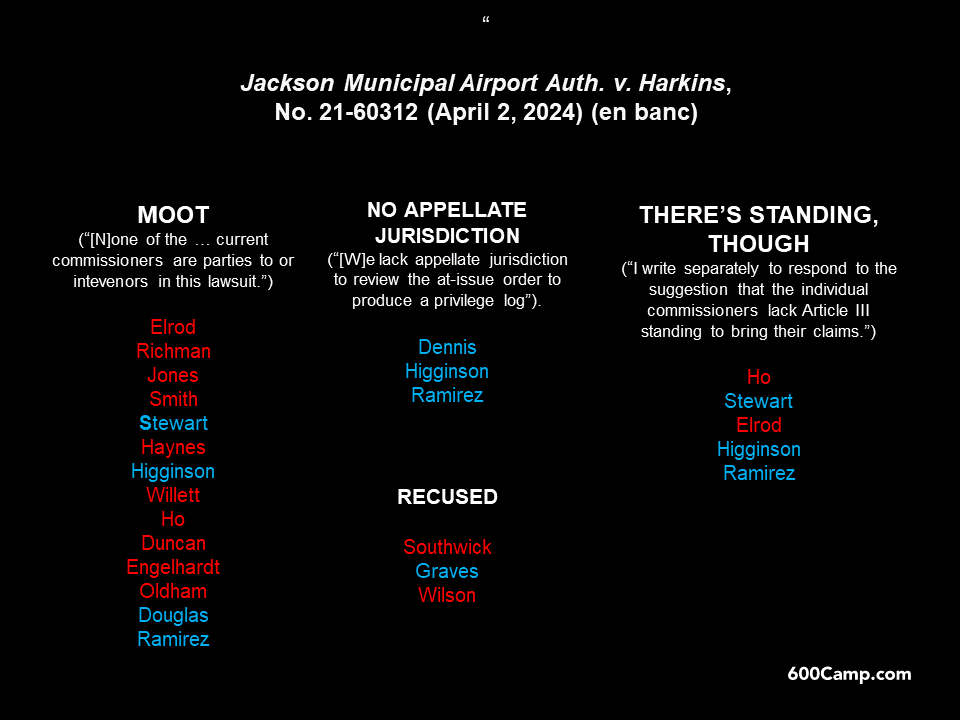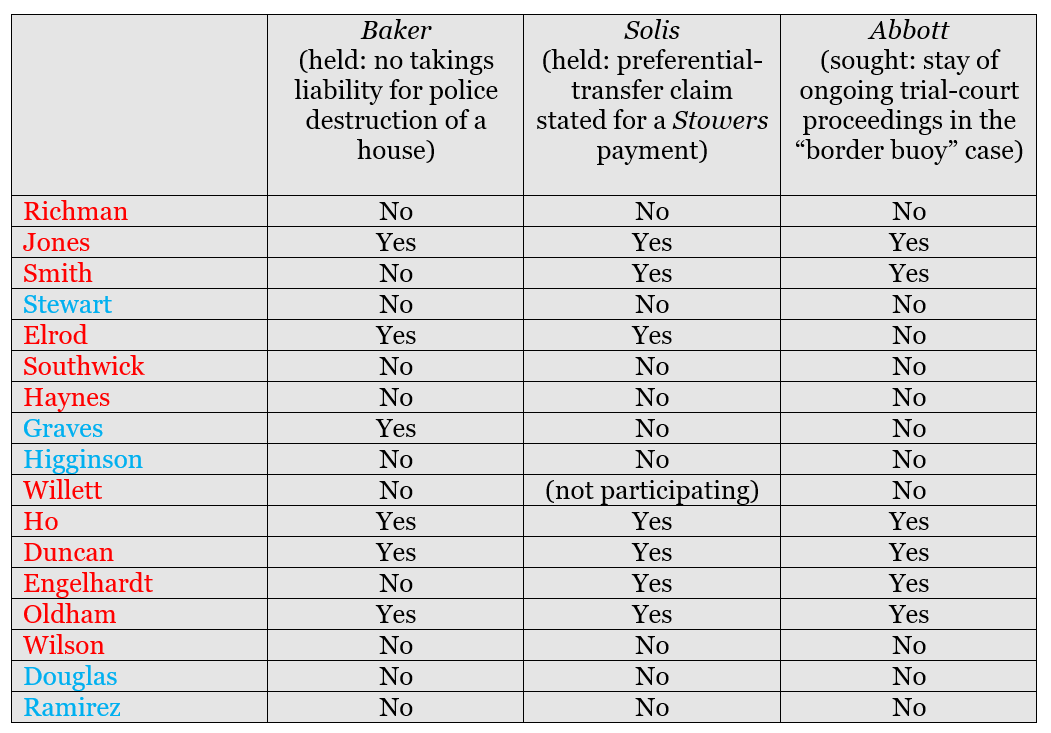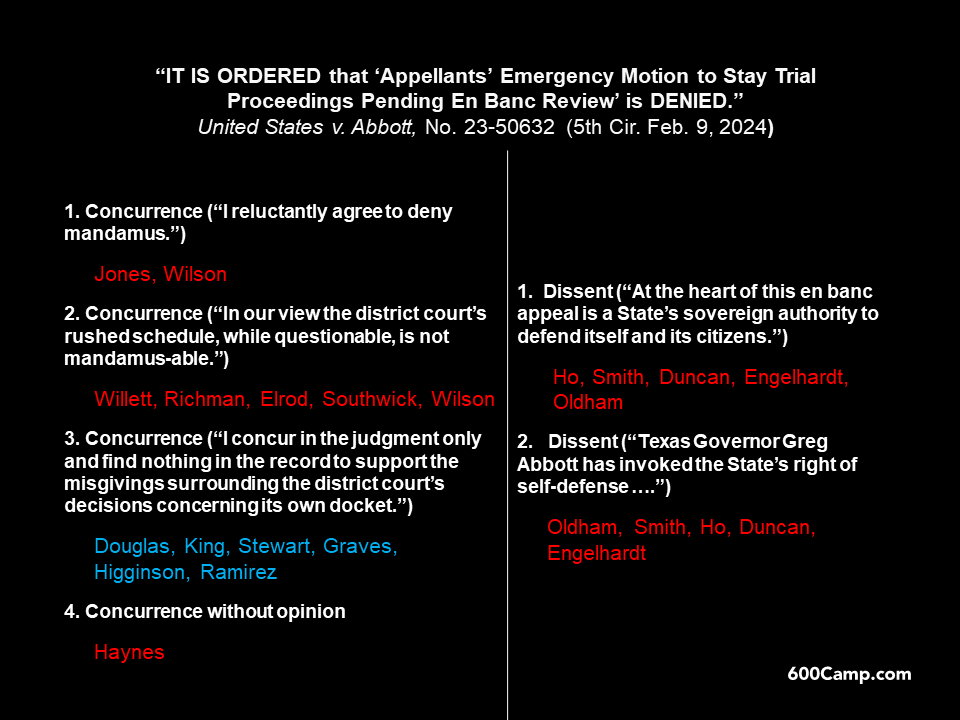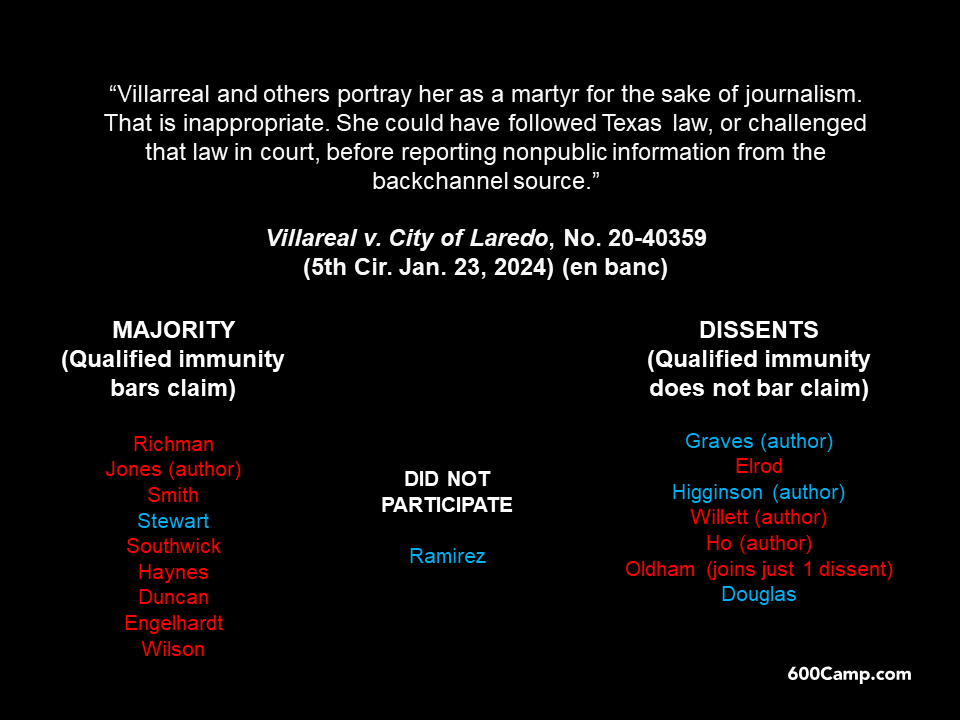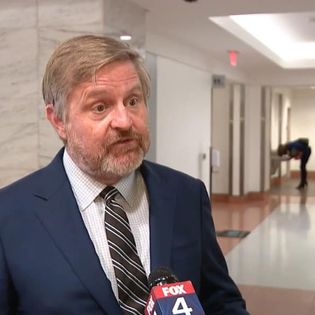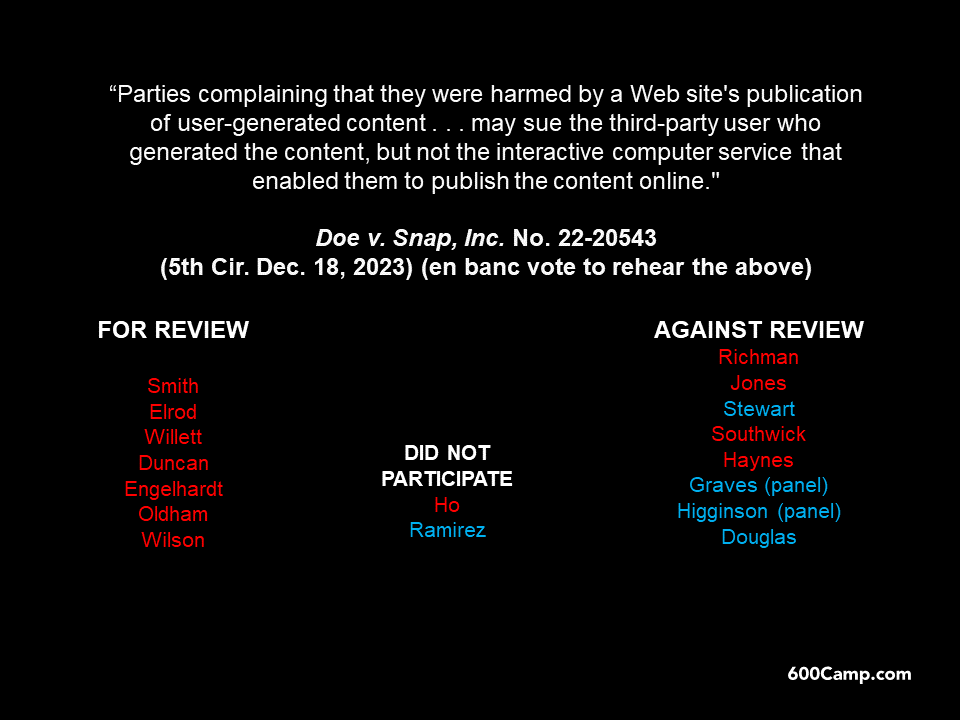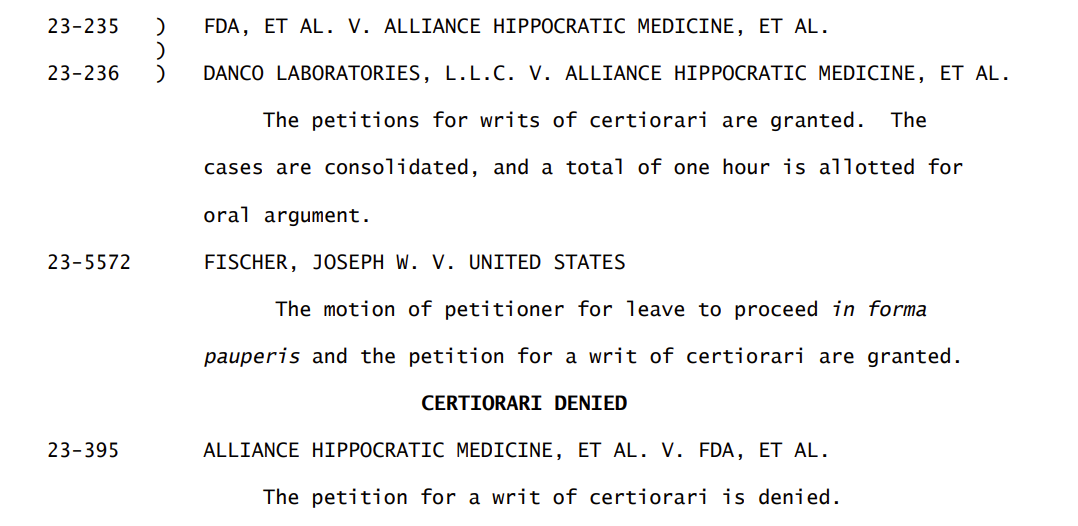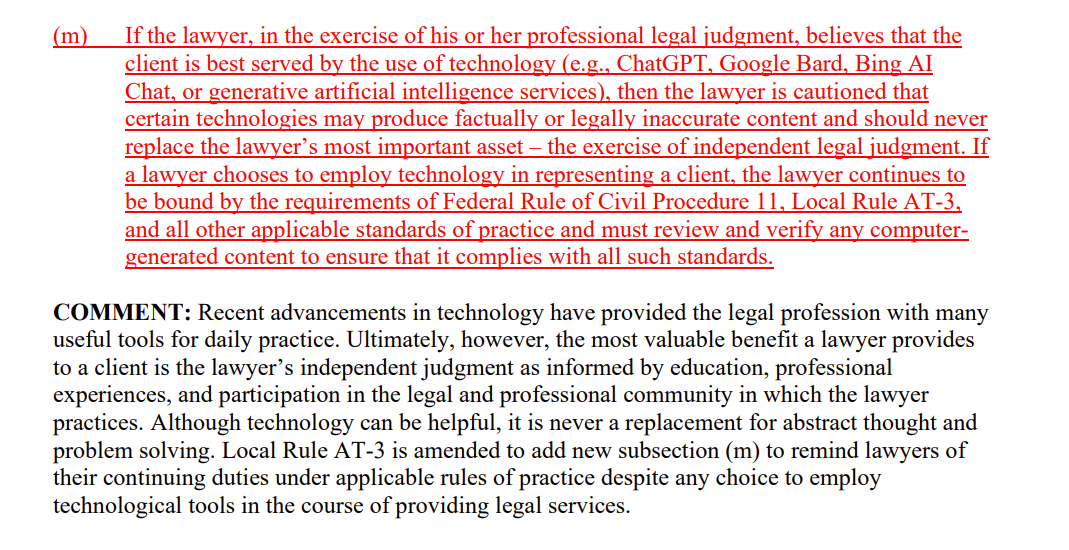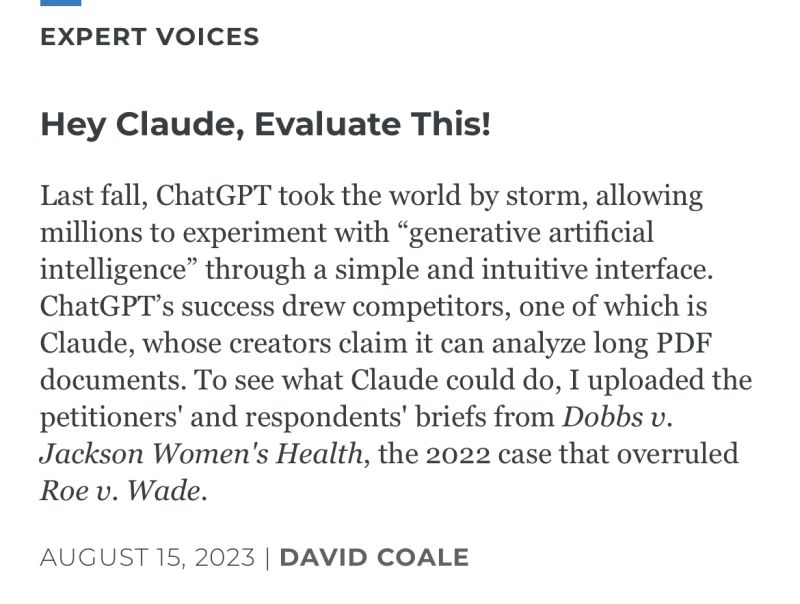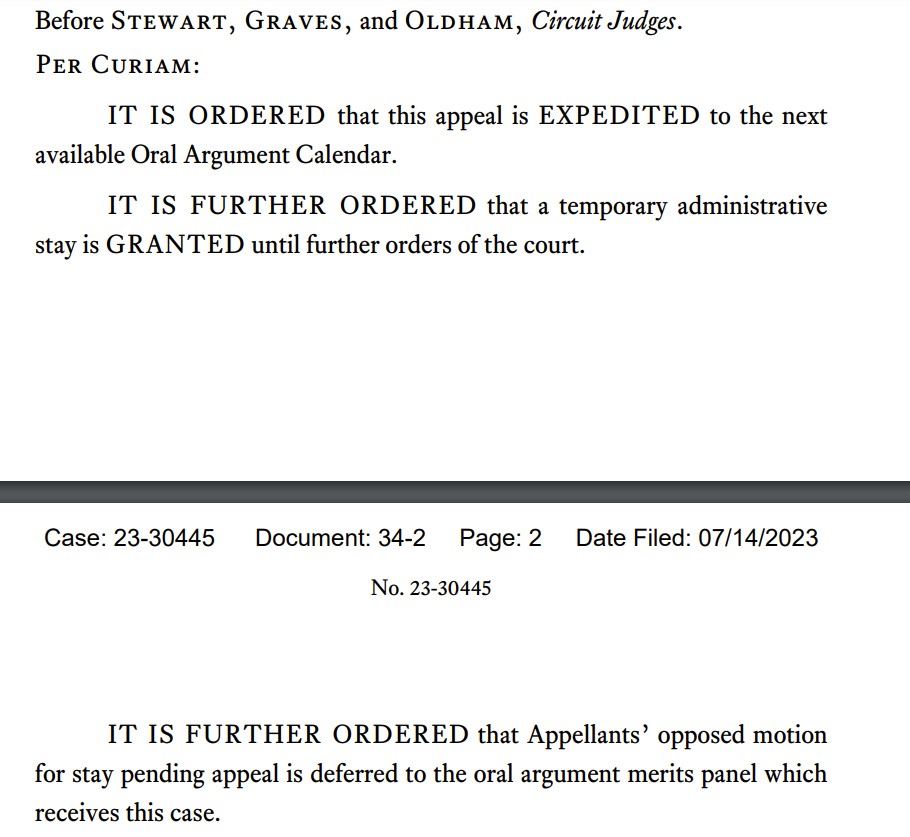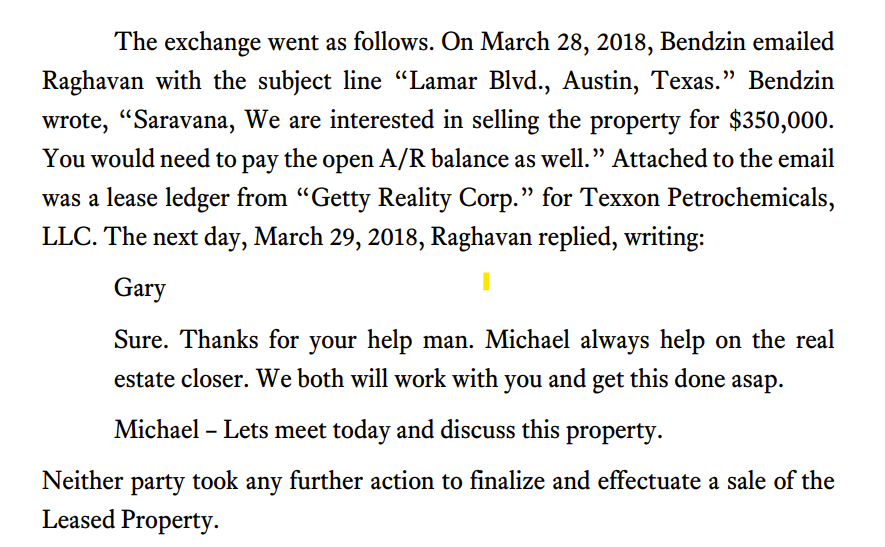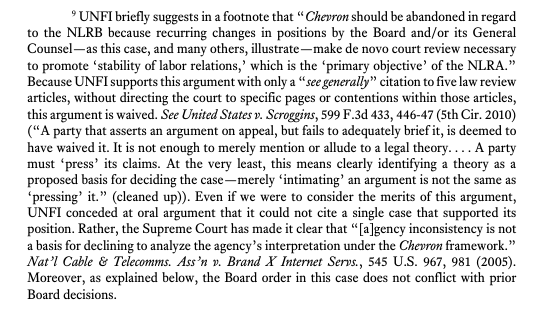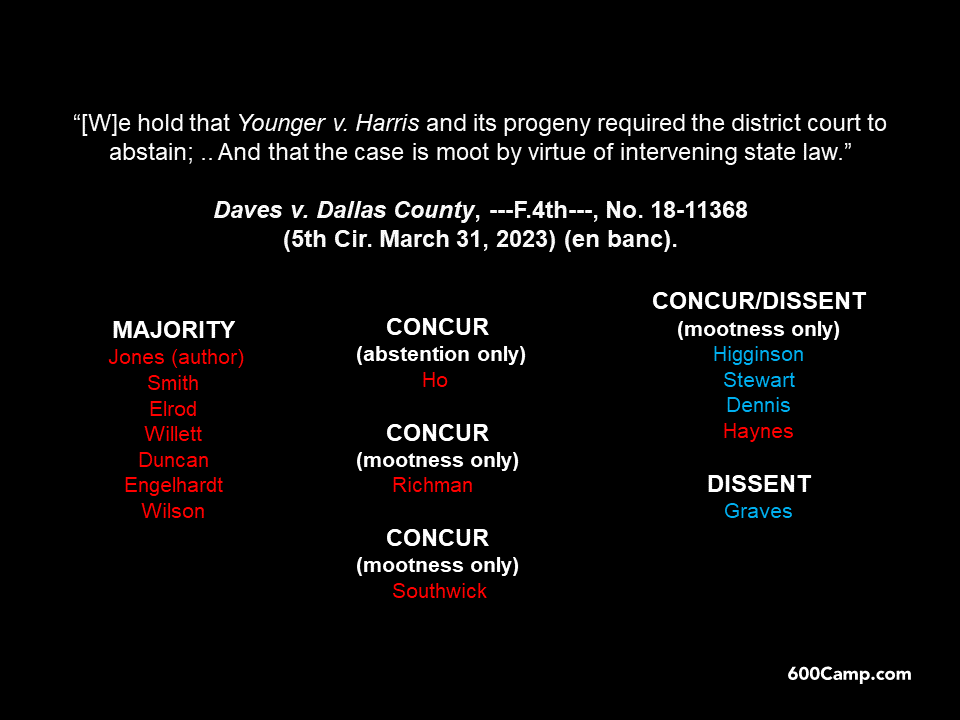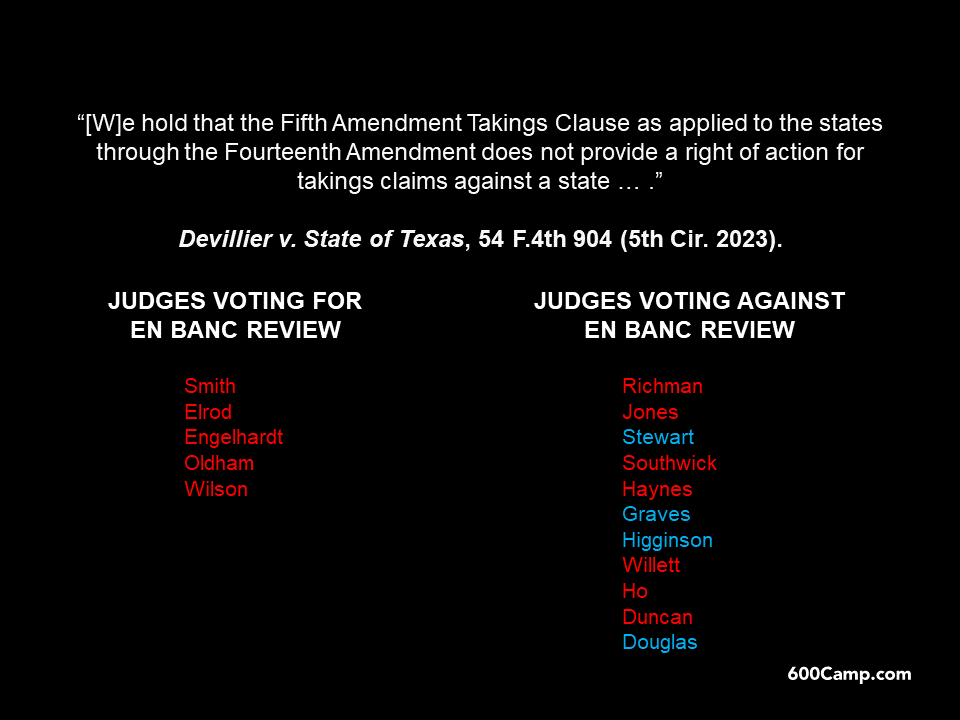If you have ever wondered “can the party-presentation principle help distinguish holding from dicta?’ then you will enjoy my new article in the Cornell Law Review Online, which hopefully offers some new perspective on some longstanding concepts.
 Phillips v. ERCOT addresses a dispute between ERCOT and the liquidating trust of Entrust Energy, a supplier of electriciity to end users, who went into bankruptcy after receiving a large bill in the wake of Winter Storm Uri. In resolving this dispute, the Fifth Circuit held:
Phillips v. ERCOT addresses a dispute between ERCOT and the liquidating trust of Entrust Energy, a supplier of electriciity to end users, who went into bankruptcy after receiving a large bill in the wake of Winter Storm Uri. In resolving this dispute, the Fifth Circuit held:
- No immunity for ERCOT. The six relevant factors were “an even split,” but because ‘our court has indicated repeatedly that factor 2 [the source of the entity’s funding] is the most important, ERCOT is not an arm of Texas and not entitled to immunity in federal court.”
- Abstention. Burford abstention was required because, inter alia: “federal adjudication of the [programs at issue] risks dramatic intrusion into Texas’s specialized system of electric utility regulation and would disrupt Texas’s efforts to establish a coherent and uniform policy for electric utilities. Under the specific circumstances of this case, the fact that the takings claim arises under federal law and that Texas does not provide any sort of specialized system for review does not support hearing the claim.” (footnote omittted).
No. 22-20603 (April 29, 2024).
![]() To the right is a painting of Julius Caesar crossing the Rubicon. A river-crossing issue also arose in Good River Farms, L.P. v. TXI Operations, L.P. A severe flood on the Colorado River breached a water reservoir on a commercial property, which in turn led to the flooding of a neighboring farm.
To the right is a painting of Julius Caesar crossing the Rubicon. A river-crossing issue also arose in Good River Farms, L.P. v. TXI Operations, L.P. A severe flood on the Colorado River breached a water reservoir on a commercial property, which in turn led to the flooding of a neighboring farm.
Liability under the Texas Water Code turned on whether “surface waters” (the water in the reservoir) caused the problem at the farm, or whether it was water from the Colorado River (not considered “surface water” under the Code, because the river is a “bed or channel in which water is accustomed to flow”).
The Fifth Circuit found sufficient evidence to support a judgment for the farm, reasoning that “[t]he jury apparently concluded that the water was not overflow fromthe river, but surface water accumulated in such quantity that it ran contrary to the riverine flow.” No. 23-50330 (April 25, 2024).
The Fifth Circuit reversed because of a new trial-court reply-brief argument in Georgia Firefighters’ Pension Fund v. Anadarko Petroleum Corp., reasoning:
A class of stock purchasers allege that Anadarko Petroleum Corporation fraudulently misrepresented the potential value of its Shenandoah oil field project in the Gulf of Mexico, in violation of federal securities law. During the class certification proceedings below, Plaintiffs presented new evidence for the first time in a reply brief. As a result, Anadarko did not have fair opportunity to address that new evidence at an earlier stage in the briefing. So the district court should have permitted Anadarko to file a sur-reply responding to that new evidence contained in Plaintiffs’ reply.
No. 23-20424 (April 24, 2024).
As noted previously, the Fifth Circuit denied en banc review by an 8-8 vote in a contentious forum dispute. The breakdown of the votes is follows (the entire panel majority opinion appears in the chart, and the panel dissent is reproduced as an exhibit to the dissent from the denial of en banc review):
The Fifth Circuit’s recent en banc vote in Consumers’ Research v. CPSC, an unsuccessful constitutional structure to the Consumer Product Safety Commission in light of recent Supreme Court precedent, is summarized in the below chart. The vote was accompanied by a concurrence and two dissenting opinions.
The Fifth Circuit’s recent en banc vote in Book People, Inc. v. Wong, a successful constitutional challenge to a prior-restraintish law involving the content of books in school libraries, is summarized in the below chart:
 The Fifth Circuit reversed the dismissal of securities-fraud claims in Oklahoma Firefighters Pension & Retirement System v. Six Flags Entertainment Corp., holding that the district court had misread a prior appellate opinion. The Court stated, inter alia:
The Fifth Circuit reversed the dismissal of securities-fraud claims in Oklahoma Firefighters Pension & Retirement System v. Six Flags Entertainment Corp., holding that the district court had misread a prior appellate opinion. The Court stated, inter alia:
Any fair reading shows why our prior opinion very clearly did not hold the alleged fraud was fully disclosed by October 2019. The most obvious sign is the absence of any statement expressly concluding that all purported fraud was fully disclosed by October 2019 and that therefore, the class period was truncated. Given that such a conclusion would all but end the case as to Oklahoma Firefighters, it stands to reason that if that was actually our decision, we would have said so explicitly. To borrow a familiar phrase from statutory interpretation principles, we do not “hide elephants in mouseholes.”
No. 23-10696 (April 18, 2024) (citation omitted).
 Recent dialogue about the benefits and drawbacks of single-judge judicial district has led to further public remarks, which have in turn drawn interesting rebuttal from commentators in Above the Law and Balls and Strikes.
Recent dialogue about the benefits and drawbacks of single-judge judicial district has led to further public remarks, which have in turn drawn interesting rebuttal from commentators in Above the Law and Balls and Strikes.
(It bears mention in this discussion that the Alliance for Hippocratic Medicine – the lead plaintiff in the mifepristone litigation that touched off the present debate – was created three months before that litigation by several out-of-state anti-abortion groups, as explained in an informative Intercept article that discusses the broader history of such groups.)
Resolving another of the simmering venue disputes that have drawn considerable attention in recent weeks, the full Fifth Circuit denied en banc review (an 8-8 tie vote) of the denial of mandamus relief in In re SpaceX – a challenge to the district court’s order that transferred a dispute between SpaceX and the NLRB to the Central District of California.
 The surprisingly slippery question whether Texas law allows a takings claim to proceed against the state came to an anticlimactic end with the Supreme Court’s opinion in DeVillier v. Texas:
The surprisingly slippery question whether Texas law allows a takings claim to proceed against the state came to an anticlimactic end with the Supreme Court’s opinion in DeVillier v. Texas:
As Texas explained at oral argument, its state-law inverse-condemnation cause of action provides a vehicle for takings claims based on both the Texas Constitution and the Takings Clause. … And, although Texas asserted that proceeding under the state-law cause of action would require an amendment to the complaint, it also assured the Court that it would not oppose any attempt by DeVillier and the other petitioners to seek one.
No. 22-913 (U.S. April 16, 2024).
 Members of the Lipan-Apache Native American Church sued the City of San Antonio about its plans for a large city park that contains an area of particular religious significance to this church. One aspect of the case involved physical access to that area. After the City complied with the trial-court’s order on that issue, the Fifth Circuit held that part of the case was moot, and did not apply the “voluntary cessation” (i.e., “a defendant could … pick up where he left off”) exception to mootness:
Members of the Lipan-Apache Native American Church sued the City of San Antonio about its plans for a large city park that contains an area of particular religious significance to this church. One aspect of the case involved physical access to that area. After the City complied with the trial-court’s order on that issue, the Fifth Circuit held that part of the case was moot, and did not apply the “voluntary cessation” (i.e., “a defendant could … pick up where he left off”) exception to mootness:
[T]he City affirmed that it undertook several additional efforts “going beyond what the district court ordered.” The City conceded that removing the limb allowed it to reconfigure the construction fencing and it subsequently granted public access to the entire area. Likewise, the City granted Appellants access to conduct a religious ceremony at the Sacred Area from midnight to 4 a.m. on November 18, 2023, during hours when the Park is normally closed. Furthermore, on November 21, 2023, the City moved to dismiss its crossappeal in this action, deciding to no longer pursue the issue of access to the Sacred Area. Based on these subsequent developments, “[i]t is therefore clear that [the City officials] harbor no animosity toward [Appellants].” Appellants now have “no reasonable expectation that the wrong challenged by [them] would be repeated.” Thus, the voluntary cessation exception does not apply.
Perez v. City of San Antonio, No. 23-50746 (April 11, 2024) (citations omitted).
 After a Fifth Circuit panel granted mandamus relief about a transfer of a case involving the CFPB to the District of Columbia, the district court there entered this Minute Order on April 10:
After a Fifth Circuit panel granted mandamus relief about a transfer of a case involving the CFPB to the District of Columbia, the district court there entered this Minute Order on April 10:
This case was received from the U.S. District Court in the Northern District of Texas on March 29, 2024. On April 8, 2024, the Court received a copy of the Order Reopening Case and Providing Notice to the United States District Court of the District of Columbia … issued by the Texas district court in accordance with In re Fort Worth Chamber of Commerce, No. 24-10266 (5th Cir. Apr. 5, 2024) (attached to Notice and Order). The Fifth Circuit found that the district court lacked jurisdiction to transfer the case while an appeal was pending before the Court of Appeals, and it ordered the district court to “reopen the case and to give notice to D.D.C. that its transfer was without jurisdiction and should be disregarded.” While the Court is not inclined to “disregard” a case on its docket, and it has considerable discretion to supervise its own cases, a review of the Notice and Order, as well as the docket in the Northern District of Texas, reflects that the case is now proceeding there under the supervision of another district court. Therefore, the case will be terminated on this court’s docket at this time without prejudice. This order should not be read to express any view on the transfer question, which has not been presented to this Court to decide. The Clerk of Court is directed to terminate this case on the docket of the District Court for the District of Columbia.
Meanwhile, back in New Orleans, the Fifth Circuit has asked for supplemental briefing about “whether or not an ownership interest in a nonparty large credit card issuer would be substantially affected by the outcome of this litigation,” for purposes of evaluation potential judicial recusal. On May 3, the panel released a revised opinion.
I hope you find this cross-post from 600 Commerce to be informative!
The most recent Advocate (the quarterly publication of the State Bar of Texas Litigation Section) has several articles about how the new Fifteenth Court of Appeals will get off the ground. I have a short piece on where the new court is likely to look for precedent, since it will have none of its own to start. I hope you find it useful in thinking about this important new appellate forum.
 In D&T Partners LLC v. Baymark Partners Mgmnt., LLC, “[a] group of individuals allegedly sought to steal the assets and trade secrets of an e-commerce company,” and “did so with shell entities, corrupt lending practices, and a fraudulent bankruptcy.” The plainitffs’ complaint did not state a RICO claim, however:
In D&T Partners LLC v. Baymark Partners Mgmnt., LLC, “[a] group of individuals allegedly sought to steal the assets and trade secrets of an e-commerce company,” and “did so with shell entities, corrupt lending practices, and a fraudulent bankruptcy.” The plainitffs’ complaint did not state a RICO claim, however:
“While the complaint alleges coordinated theft, the alleged victims are limited in number, and the scope and nature of the scheme was finite and focused on a singular objective. … [T]his does not constitute a “pattern” of racketeering conduct sufficient to state a RICO claim ….”
No. 22-11148 (Apr. 4, 2024).
In a muscular display of appellate review, in Career Colleges & Schools of Texas v. U.S. Dep’t of Educ., the Fifth Circuit:
- Disagreed with the district court’s conclusion that an association of career schools lacked standing due to a lack of immediate irreparable injury, identifying three types of injury suffered as a result of new DOE regulations about certain defenses to student-loan repayment;
- Concluded that, as a matter of law, the association had satisfied the requirements for a preliminary injunction;
- Gave the resulting injunction nationwide effect; and
- Ordered: “The stay pending appeal remains in effect until the district court enters the preliminary injunction.”
No. 23-50491 (April 4, 2024).
Long-running litigation about control of the Jackson airport led to the en banc court holding on April 2 that the appeal was moot. A breakdown of the viewpoints appears below:
 Several disputes about inter-circuit venue transfers are ongoing (I was recently interviewed by Bloomberg about this phenomenon):
Several disputes about inter-circuit venue transfers are ongoing (I was recently interviewed by Bloomberg about this phenomenon):
- SpaceX. In a dispute between SpaceX and the NLRB, the Fifth Circuit is considering whether to review a transfer order en banc. The NLRB recently filed its response to an unusual order from the panel asking the NLRB to explain several actions taken earlier in the proceedings. The gist of the NLRB’s response was:
Only one court may have jurisdiction at a time. The transferee court was notobliged to follow the February 26 order, and zealous advocacy required the NLRB to present its legal arguments as to why it should not be followed to the Central District of California. Thus, the NLRB urged that court, not to ignore this Court’sorder, but to acknowledge it and respectfully decline retransfer.
- CFTC. In a dispute involving the Commodities Futures Trading Commission, the District of the District of Columbia has received the district court’s request to return the case, along with briefing and argument from the parties about the appropriate next step, and as of April 6 continued to have that request under consideration.
- CFPB. In a dispute involving the CFPB and a new rule about credit-card late fees, a 2-1 panel decision granted mandamus relief on April 5–after a case had been transferred to the District of the District of Columbia, concluding:
Because the Chamber had a short window of time to either (1) comply with the Final Rule, or (2) seek a preliminary injunction, the district court’s inaction amounted to an effective denial of the Chamber’s motion for a preliminary injunction. That effective denial is properly before us on appeal. The district court lacked jurisdiction to transfer the case after this appeal was docketed because doing so would alter its status. … The district court is ORDERED to reopen the case and to give notice to D.D.C. that its transfer was without jurisdiction and should be disregarded.
- CFPB dissent. The dissent in the CFPB case concluded: “For the foregoing reasons, I believe that the new proposition of law created by the majority is incompatible with district court discretion over docket management and prudent policing of forum shopping. Finally, I am confident the District Court for the District of Columbia will give the suggestion that it should disregard a case docketed by it its closest attention.”
- HHS. The Court has expedited argument (to May 1) of National Infusion Center v. Becerra , a challenge to the dismissal of a case about 2022 drug-reimbursement regulations on venue grounds (after the dismissal of a party for jurisdictional reasons).
Several matters involving inter-circuit venue transfers are ongoing:
- In a dispute between SpaceX and the NLRB, the Fifth Circuit is considering whether to review a transfer order en banc. The panel recently issued this unusual order asking the NLRB’s counsel to explain several actions taken earlier in the proceedings.
- In a dispute involving the CFTC, the District of the District of Columbia has received the district court’s request to return the case, and is receiving briefing and argument from the parties about the appropriate next step.
- In another dispute involving the CFPB, the Fifth Circuit has administratively stayed a transfer order and referred the matter to the next available argument panel.
 A recent policy statement from the Judicial Conference of the United States recommended changes to judge-assignment practices in district courts. The statement has drawn considerable attention both pro and con; this Volokh Conspiracy post is a good summary of the “con” side. A recent letter from the Chief Judge of the Northern District of Texas says that its judges have declined to materially change that district’s judge-assignment policies.
A recent policy statement from the Judicial Conference of the United States recommended changes to judge-assignment practices in district courts. The statement has drawn considerable attention both pro and con; this Volokh Conspiracy post is a good summary of the “con” side. A recent letter from the Chief Judge of the Northern District of Texas says that its judges have declined to materially change that district’s judge-assignment policies.
Applying the international convention about arbitration, the Fifth Circuit found an abuse of discretion in not compelling arbitration because of equitable estoppel, reasoning:
While Bufkin was certainly free to name and then dismiss the foreign insurers, the district court was not free to disregard them in considering the domestic insurers’ motion to compel arbitration. Yet in focusing on Bufkin’s dismissal of the foreign insurers, the district court neglected to consider the foreign insurers’ part in the seamless coverage agreement struck by the parties, and Bufkin’s interactions with the insurers. Honing in, that coverage arrangement included the arbitration clause that afforded the insurers–foreign and domestic—“predictability in resolving disputes dealing with the substantial risks presented by a surplus lines insurance policy.” … The upshot is that indulging Bufkin’s pleading-and-then-dismissing gamesmanship by denying arbitration turns on its head the axiom that “[t]he linchpin for equitable estoppel is equity—fairness.”
Bufkin Enterprises, LLC v. Indian Harbor Ins. Co., No. 23-30171 (March 4, 2024) (emphasis added).
After an earler (unexplained) grant of an administrative stay touched off weeks of fast-paced appellate litigation about Texas’s “SB4” immigration law, a majority of the Fifth Circuit’s merits panel denied any further stay of the trial court’s injunction against enforcement of that law. USA v. Texas, No. 24-50149 (March 26, 2024). Argument is scheduled next week; barring Supreme Court intervention, merits opinions similar to these are likely.
 The Fifth Circuit made/ an interesting observation about the comparative weight of Erie precedent in SXSW LLC v. Fed. Ins. Co.:
The Fifth Circuit made/ an interesting observation about the comparative weight of Erie precedent in SXSW LLC v. Fed. Ins. Co.:
Federal cites two federal district courts to support its broader interpretation. … But these authorities are worth relatively little in this case. Our focus is on Texas law as interpreted by the Texas state courts.
No. 22-50933 (March 21, 2024) (unpublished).
This morning’s Supreme Court arguments in the mifepristone cases (which will be available here when ready) lead to a couple of observations about legal issues of the day:
- Standing. As the Washington Post effectively summarized: “A majority of justices from across the ideological spectrum expressed skepticism that the antiabortion doctors challenging the government’s loosening of regulations have sufficient legal grounds — or standing — to bring the lawsuit.” (Last year, I wrote about the “conservative” approach to standing in high-profile constitutional cases in a Slate article, and the application of basic standing principles in the mifepristone cases in this Dallas Morning News editorial.)
- Comstock. Justice Holmes famously observed: “The common law is not a brooding omnipresence in the sky.” But the Comstock Act is, and Congress should do something about the law before its 1870s-era moralism is inflicted on modern society. Mark Stern’s X feed on the mifepristone arguments summarizes some of the present state of play.
A propane grill exploded; the injured plaintiff won a judgment against the supplier of the propane tank, and the Fifth Circuit reversed in Johnston v. Ferrellgas, Inc.:
[T]he circumstantial evidence on which the Johnstons rely does not cure the want of proof that the tank was defective when it left Ferrellgas’s possession. This is not a res ipsa case. Indeed, the Johnstons did not advance that theory of liability before the district court or before us. In sum, the Plaintiff’s expert admitted that he could not say the tank was defective at the time it left Ferrellgas, making his prior comments about the tank’s condition at that time pure speculation; the tank functioned properly before Johnston used it; the tank and seal are not sealed containers; and both parties agree Ferrellgas successfully refilled the tank with gas under highpressure months before the accident. There is no reasonable basis on which the jury could find the Johnstons met their burden.
No. 23-10019 (March 21, 2024). A dissent saw matters differently.
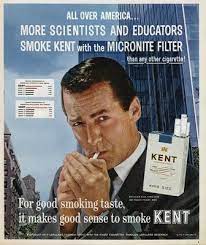 In the 1950s, Big Tobacco advertised the safety of “Kent with the Micronite Filter,” which was unfortunately made with an exceptionally dangerous form of asbestos. After decades of advertising bans and mandatory disclosures, the battle over cigarette ads continues, leading most recently to R.J. Reynolds Tobacco Co. v. FDA – a First Amendment challenge to new, more graphic disclosures about the potential harms of smoking.
In the 1950s, Big Tobacco advertised the safety of “Kent with the Micronite Filter,” which was unfortunately made with an exceptionally dangerous form of asbestos. After decades of advertising bans and mandatory disclosures, the battle over cigarette ads continues, leading most recently to R.J. Reynolds Tobacco Co. v. FDA – a First Amendment challenge to new, more graphic disclosures about the potential harms of smoking.
The Fifth Circuit rejected the challenge (reversing a contrary district-court opinion) and remanded for consideration of claims involving the Administrative Procedure Act. As to the First Amendment issues, the Court summarized:
When determining whether Zauderer applies, (1) images can be factual; (2) ideological or emotion-inducing statements are not per se controversial or non-factual; (3) “uncontroversial” means not subject to good-faith dispute about the accuracy of the factual statement; and (4) legitimate state interests other than the prevention of consumer deception are cognizable under Zauderer. For the reasons detailed above, the district court erred by finding Zauderer inapplicable to the FDA’s newest Warnings. Applying Zauderer, the Warnings survive constitutional muster against the First Amendment challenge.
No. 23-40076 (March 21, 2024).
 In Wilmington Savings Fund Society, FSB v. Myers, the appellant argued that its notice of appeal was timely, when filed within 30 days of a second judgment, and when the first judgment “was mislabeled because even though it purported to dispose of all claims and parties in the case, the title of the order did not signal that it was a final judgment.”
In Wilmington Savings Fund Society, FSB v. Myers, the appellant argued that its notice of appeal was timely, when filed within 30 days of a second judgment, and when the first judgment “was mislabeled because even though it purported to dispose of all claims and parties in the case, the title of the order did not signal that it was a final judgment.”
The Fifth Circuit agreed. Noting that “[o]rdinarily, such minor changes to an order do not ‘disturb or revise legal rights and obligations’ of the parties” (cleaned up), it concluded that “there was in this case a clear discrepancy between the label and the body of the district court’s order” that was sufficient to treat it as a substantive revision for purposes of calculating the appeal deadline. No. 24-20018 (March 18, 2024) (applying FTC v. Minneapolis-Honeywell Regulator Co., 344 U.S. 206, 211 (1952)).
(The graphic was provided by DALL-E, and explained by it as follows: “The images above illustrate the concept of a substantive change versus a change solely of form, through the comparison of a caterpillar’s transformation into a butterfly (substantive change) and a chameleon’s color change (change of form).”
All eyes will be on New Orleans this morning, for the (videoconferenced) arguments in United States v. Texas, where last night’s order suggests a 2-1 decision will be forthcoming that continues to bar enforcement of Texas’s SB4 during the pendency of its appeal. The Supreme Court will likely be asked about the resulting order, whatever it may be.
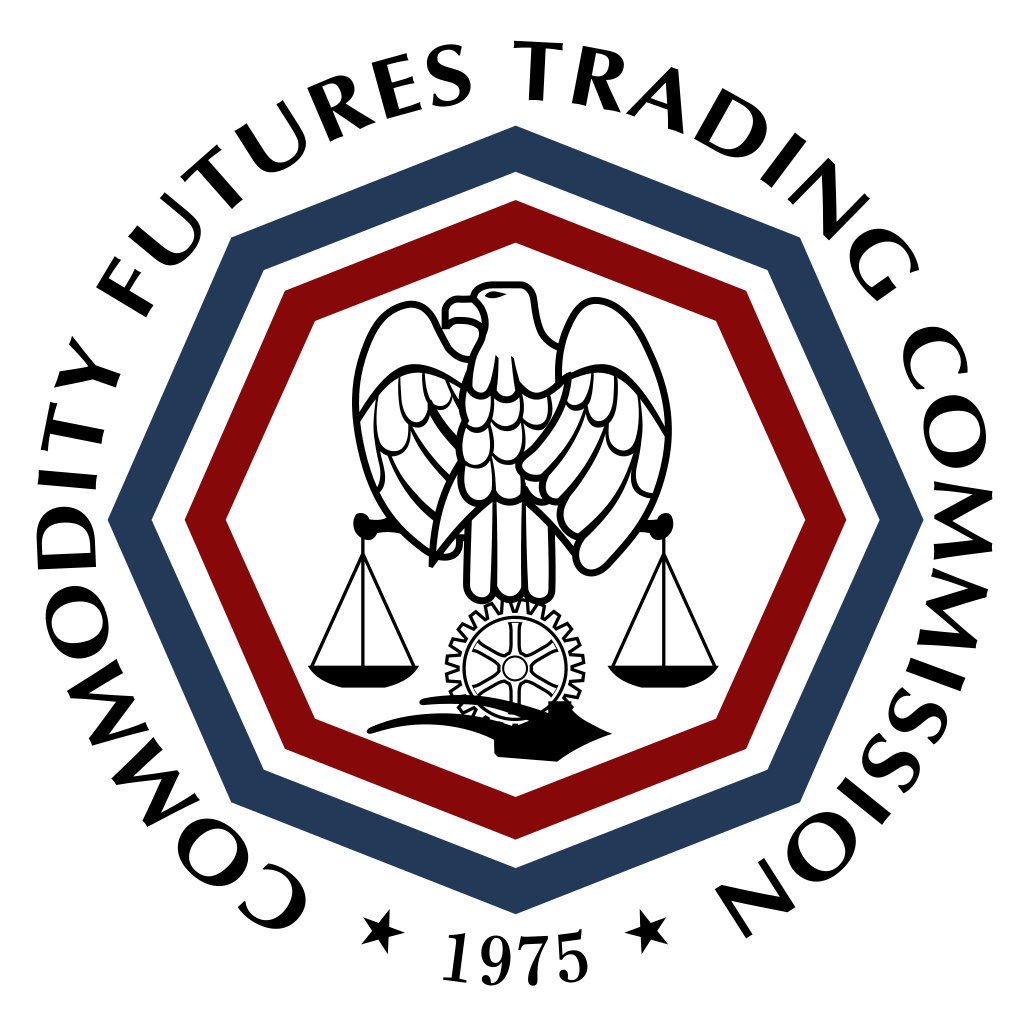 Earlier this month, the Fifth Circuit granted mandamus relief, including the issuance of a writ of mandamus to the Western District of Texas, requiring that the district court request the return of a case from the District of the District of Columbia. That request was made on March 7. As of March 19, that court had not ruled on the request, and the CFTC continues to urge that the court delay action until it has received further briefing on the venue issue.
Earlier this month, the Fifth Circuit granted mandamus relief, including the issuance of a writ of mandamus to the Western District of Texas, requiring that the district court request the return of a case from the District of the District of Columbia. That request was made on March 7. As of March 19, that court had not ruled on the request, and the CFTC continues to urge that the court delay action until it has received further briefing on the venue issue.
In Calogero v. Shows, Cali & Walsh, LLP, (discussed earlier this week for stylistic reasons), a panel majority found that two recipients of certain Hurricane Katrina relief stated a viable Fair Debt Collection Act claim when:
- The longest possible limitations period (10 years) had run by the time the demand letters requested payment; and
- The demand letters threatened a claim for attorneys fees, when the relevant documents only created a specific right to potential fee recovery that did not include the alleged debt at issue.
The third judge, without opinion, concurred in the result only. No. 22-30487 (March 15, 2024).
 Michael Cloud, a former NFL running back, sued the NFL’s retirement fund for additional disability benefits. The Fifth Circuit reversed a trial-court ruling in his favor, noting the one-sided nature of the plan’s operations, but concluding:
Michael Cloud, a former NFL running back, sued the NFL’s retirement fund for additional disability benefits. The Fifth Circuit reversed a trial-court ruling in his favor, noting the one-sided nature of the plan’s operations, but concluding:
Cloud’s claim fails because he did not and cannot show any changed circumstances entitling him to reclassification to the highest tier of benefits. He could have appealed the 2014 denial of reclassification to Active Football status—but he did not do so. Instead, Cloud filed another claim for reclassification in 2016, which subjected him to a changed-circumstances requirement that he cannot meet—and did not try to meet. He therefore forfeited the issue at the administrative level and at any rate has not pointed to any clear and convincing evidence supporting his claim.
The district court’s findings about the NFL Plan’s disregard of players’ rights under ERISA and the Plan are disturbing. Again, this is a Plan jointly managed by the league and the players’ union. And we commend the trial court judge for her diligent work chronicling a lopsided system aggressively stacked against disabled players. But we also must enforce the Plan’s terms in accordance with the law.
Cloud v. Bell-Rozelle NFL Player Retirement Plan, No. 22-10710 (revised March 17, 2024).
 You can tell your argument isn’t working when the Fifth Circuit summarizes it as follows:
You can tell your argument isn’t working when the Fifth Circuit summarizes it as follows:
“SCW’s last remaining counterargument is that it should be able to pick and choose different clauses from the LSAA and the Grant Agreement and then mush them together to demand money from debtors.”
and when the Court begins its opinion:
“Widowed octogenarians Iris Calogero and Margie Nell Randolph received dunning letters from a Louisiana law firm … .”
Calogero v. Shows, Cali & Walsh, LLP, No. 22-30487 (March 15, 2024). More substantive review to follow in the week ahead!
The Judicial Conference has voted to strenghen its policy about random case assignment, as set forth here.
Deanda v. Becerra presents a conflict between Title X (a federal law about the availability of contraception), and a Texas parental-consent statute. The Fifth Circuit found no conflict, and thus no preemption. On the threshold question of standing, the Court rejected the argument that any parent could sue about this issue, observing, inter alia: “This case does not concern all ‘parents or potential parents.’ It concerns only a parent with particular religious beliefs about raising his children.” No. 23-10159 (March 12, 2024).
 The Fifth Court ordered a rare reversal for a new trial because of improper closing argument in Clapper v. American Realty Investors. The Court summarized the improper statements as “employ[ing] nearly every type of improper argument identified by our court, including highly improper and personal attacks against opposing counsel, remarks about Clapper’s wealth, a discussion of matters not in the record, insinuations that Clapper had lower moral standards because he was from Michigan, and suggestions of Clapper’s bad motives through counsels’ opinion.”
The Fifth Court ordered a rare reversal for a new trial because of improper closing argument in Clapper v. American Realty Investors. The Court summarized the improper statements as “employ[ing] nearly every type of improper argument identified by our court, including highly improper and personal attacks against opposing counsel, remarks about Clapper’s wealth, a discussion of matters not in the record, insinuations that Clapper had lower moral standards because he was from Michigan, and suggestions of Clapper’s bad motives through counsels’ opinion.”
The Court concluded: “We remind all practitioners in our court that zealous advocacy must not be obtained at the expense of incivility. As Judge Reavley aptly explained, ‘Although earnest, forceful, and devoted representation is both zealous and proper, Rambo and kamikaze lawyers lead themselves and their clients to zealous extinction.'” No. 21-10805 (March 8, 2024).
Notably, footnote two dismisses several arguments about preservation, concluding that “[t]he serious nature of the argument in this trial … indicates that substantial justice requires a new trial ….”
In the ongoing proceedings about the transfer of venue in a dispute between SpaceX and the NLRB, a Fifth Circuit judge has held the mandate – a step often seen in difficult cases where en banc review is possible. Interestingly, in Texas state practice, a mandate does not issue in a mandamus proceeding, because a mandamus petition is an original proceeding in the court of appeals and there is no jurisdiction to return to a trial court.
I apologize for the peculiar look of many of the site’s posts. A WordPress “plug in” has malfunctioned and until it is replaced, the site’s graphics will just look a little funny.
Last week, the Central District of California returned a case to Texas district court, after the Fifth Circuit pointed out that it had issued a stay order (in a mandamus proceeding brought to challenge the venue transfer) before the California court had docketed the transferred matter.
Then, after the return of the case to Texas, the Court denied mandamus relief. The majority did not write an opinion. A dissent would have granted the writ. In re SpaceX, No. 24-40103 (March 5, 2024). It remains to be seen what court will act next.
In Cheapside Minerals, Ltd. v. Devon Energy Prod Co., L.P., the Fifth Circuit concluded that CAFA’s “local controversy” exception did not apply, and thus reversed a remand to state court in an oil-and-gas royalties dispute:
[T]he “principal injury” each Plaintiff sustained is obvious because there was only one type of injury: a financial harm resulting from Devon’s alleged underpayment of their royalties. While most Plaintiffs sustained that injury in Texas, others did not. Therefore, the principal injuries prong is not satisfied in this case, and Plaintiffs have failed to demonstrate that the local controversy exception applies.
No. 24-40026 (March 1, 2024).
After a case was transfered to the District of Columbia, the Fifth Circuit granted mandamus relief about that transfer in In re Clarke, focusing on the district court’s analysis of the “local interest” factor
[E]vents giving rise to the suit can be separated into two categories: The first concerns individual traders who purchased contracts on the marketplace. Five of them are based in Austin, bought their contracts from Austin, and have been harmed in Austin. The second category deals with marketplace service providers—Aristotle and PredictIt. Based in D.C., they “expended significant resources to assist Victoria University in developing and operating the PredictIt Market” and “will be forced to incur massive administrative, labor, time, and other costs if forced to liquidate pending contracts prematurely.”
Given those events, there is an obvious connection between the facts giving rise to this case and the Western District of Texas. And, if we assume that Aristotle’s and PredictIt’s development and operations activities occurred in D.C., there is also a factual connection with D.D.C.
Additionally, the effect of this suit is completely diffuse. Should plaintiffs prevail on their APA challenge, this court must “set aside” CFTC’s ultra vires recission action, with nationwide effect. That affects persons in all judicial districts equally.
No. 24-50079 (March 1, 2024) (footnote omitted). As with last week’s decision in a similar posture involving SpaceX, it remains to be seen whether the transferee district court will return the case.
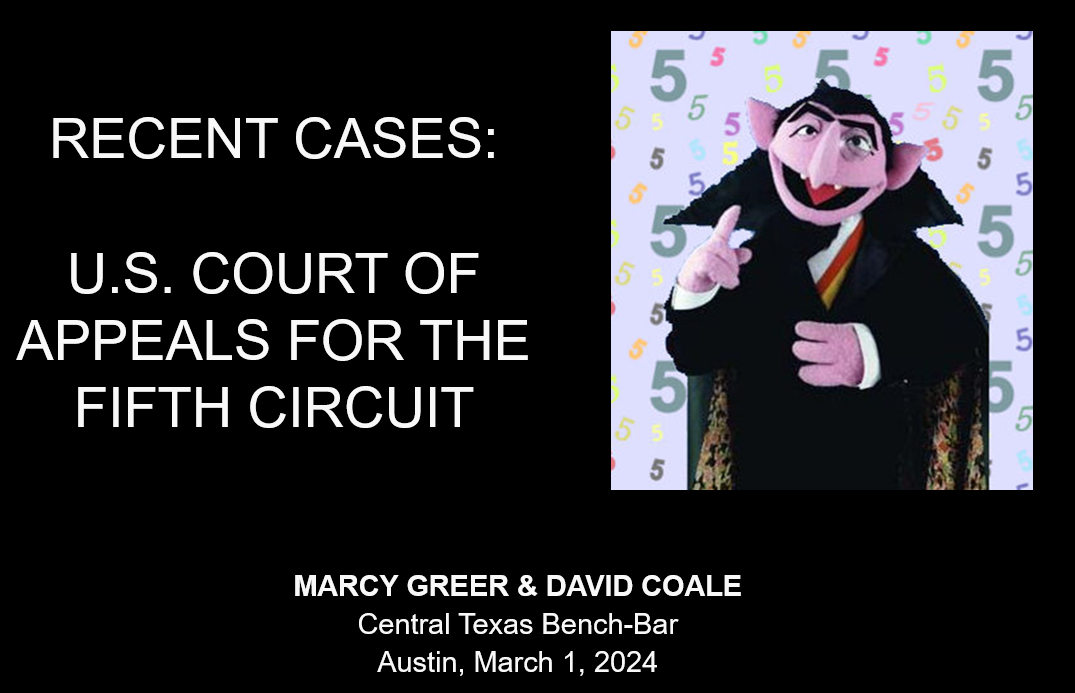 Together with Marcy Greer, I recently gave an update about recent Fifth Circuit cases at the first-ever Central Texas Bench-Bar meeting. This is our PowerPoint from the March 1 presentation.
Together with Marcy Greer, I recently gave an update about recent Fifth Circuit cases at the first-ever Central Texas Bench-Bar meeting. This is our PowerPoint from the March 1 presentation.
 In 2022, a venue skirmish in a contentious firerarms-manufacturing case led to a Pennsylvania district court declining to return a transferred case to the Fifth Circuit. Echoes of that skirmish can be heard in In re Space Exploration Technologies Corp., a dispute between SpaceX and the NLRB, where the following occurred:
In 2022, a venue skirmish in a contentious firerarms-manufacturing case led to a Pennsylvania district court declining to return a transferred case to the Fifth Circuit. Echoes of that skirmish can be heard in In re Space Exploration Technologies Corp., a dispute between SpaceX and the NLRB, where the following occurred:
SpaceX petitioned this court for a writ of mandamus on February 16, 2024, requesting that we direct the district court to vacate its transfer order. Our court stayed the Southern District of Texas’s transfer order on February 19, 2024. Nevertheless, the Central District of California docketed the case four days later, on February 23, 2024, as case number 2:24-cv-1352-CBM-AGR.
Accordingly, the Fifth Circuit directed the district court to ask the California court to return the case. The Fifth Circuit’s order points out that the California court lacks jurisdiction, since the docketing did not occur until after the stay issued. And unlike the 2022 gun case, the transferee court agreed with the Fifth Circuit, and has indicated that it will return the case to Texas when it receives the official request from the Texas trial court. No. 24-40103 (Feb. 26, 2024) (unpublished order).
 The plaintiffs’ takings claim failed in Treme v. St. John the Baptist Parish Council, when the relevant mineral lease was “for a period of Three (3) years from the date Lessee procures approval to commence operations frm local, state and federal authorities, as needed ….” The requirement of government approvals created a “suspensive condition” to the lease’s effectiveness, and “[b]ecuase they have not been obtained, the district court was correct in determining that the lease had not yet become effective.” No. 23-30084 (Feb. 16, 2024).
The plaintiffs’ takings claim failed in Treme v. St. John the Baptist Parish Council, when the relevant mineral lease was “for a period of Three (3) years from the date Lessee procures approval to commence operations frm local, state and federal authorities, as needed ….” The requirement of government approvals created a “suspensive condition” to the lease’s effectiveness, and “[b]ecuase they have not been obtained, the district court was correct in determining that the lease had not yet become effective.” No. 23-30084 (Feb. 16, 2024).
February 2024 has been a busy month for en banc votes. The recent vote by the full court about a stay in U.S. v. Abbott, as well as votes to deny en banc review of Baker (a takings case about police destruction of a home) and Solis (holding that a preferential-transfer claim was stated as to a Stowers-related payment) provided an unusual snapshot of the full court’s views on multiple issues at the same time.
Those votes are now supplemented by an 8-9 vote to deny review in McNeal v. LeBlanc, a panel opinion that denied qualified immunity in an “overdetention” case. The below chart summarizes those votes (a “yes” vote is for en banc review or issuance of a stay, as appropriate):
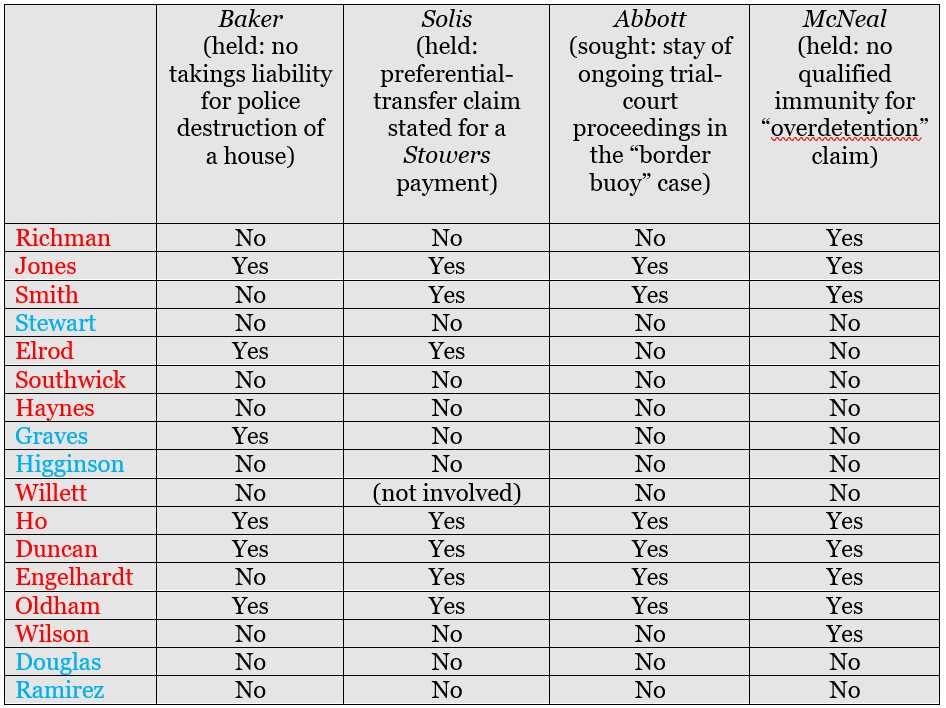 Judges Jones, Ho, and Oldham voted “yes” for review of each of these four cases. Judges Southwick, Haynes, Higginson, Douglas, and Ramirez voted “no” for review of each of these four cases.
Judges Jones, Ho, and Oldham voted “yes” for review of each of these four cases. Judges Southwick, Haynes, Higginson, Douglas, and Ramirez voted “no” for review of each of these four cases.
 The contract between Catalyst (a consulting firm) and CBS (an equipment-rental company), required payment of a substantial fee if CBS satisfied the contract’s requirements as to a “Transaction.” The Fifth Circuit held that the contract supplanted the “procuring cause doctrine” recognized by Texas law as a default rule for such business situations, and further held that under the contract, Catalyst had made the required showing to recover its fee. Catalyst Strategic Advisors LLC v. Three Diamond Capital SBC LLC, No. 23-20030 (Feb. 22, 2024).
The contract between Catalyst (a consulting firm) and CBS (an equipment-rental company), required payment of a substantial fee if CBS satisfied the contract’s requirements as to a “Transaction.” The Fifth Circuit held that the contract supplanted the “procuring cause doctrine” recognized by Texas law as a default rule for such business situations, and further held that under the contract, Catalyst had made the required showing to recover its fee. Catalyst Strategic Advisors LLC v. Three Diamond Capital SBC LLC, No. 23-20030 (Feb. 22, 2024).
 Aggrieved creditors argued that a recent Supreme Court opinion, which held that section 363(b) of the Bankruptcy Code was not jurisdictional (and could thus be waived), also impacted the scope of that statute when it applied. The Fifth Circuit rejected that argument in Swiss Re v. Fieldwood Energy, stating: “We perceive no narrowing of the effect of Section 363(b) other than to clarify that a party can lose the benefit of its terms.” No. 23-20104 (Feb. 20, 2024). From there, the Court found that the creditors’ appeal was moot because a stay had not been obtained, and the issues presented did not relate to anything left open by the bankruptcy plan.
Aggrieved creditors argued that a recent Supreme Court opinion, which held that section 363(b) of the Bankruptcy Code was not jurisdictional (and could thus be waived), also impacted the scope of that statute when it applied. The Fifth Circuit rejected that argument in Swiss Re v. Fieldwood Energy, stating: “We perceive no narrowing of the effect of Section 363(b) other than to clarify that a party can lose the benefit of its terms.” No. 23-20104 (Feb. 20, 2024). From there, the Court found that the creditors’ appeal was moot because a stay had not been obtained, and the issues presented did not relate to anything left open by the bankruptcy plan.
(The illustration is from DALL-E, I asked it to illustrate the bankruptcy concept of statutory mootness, and it came up with that image, for no reason that I can ascertain. I offer it to you as a good example of generative AI doing something that is both very sophisticated and very weird.)
 After the Texas Supreme Court answered a certified question about an arcane Texas limitations-tolling statute, the Fifth Court applied that answer in a later case presenting the same issue, Bullock v. UT-Arlington:
After the Texas Supreme Court answered a certified question about an arcane Texas limitations-tolling statute, the Fifth Court applied that answer in a later case presenting the same issue, Bullock v. UT-Arlington:
“The state trial court dismissed her case on June 8, 2020, for lack of jurisdiction. The dismissal was affirmed by the state appellate court on May 20, 2021. The appellate court’s plenary power expired on July 19, 2021. Under the Texas Supreme Court’s interpretation of Section 16.064(a)(2), Plaintiff had sixty days from July 19, 2021, in which she could refile her action in a court of proper jurisdiction. Plaintiff filed this instant lawsuit on July 16, 2021, before the state appellate court’s plenary power expired and well within the sixty-day grace period.”
No. 22-10013 (Feb. 15, 2024) (citations omitted).
 Shaw v. Restoration Hardware, Inc. carefully describes the unique heritage of Louisiana law, and then reached a holding well known to the common law:
Shaw v. Restoration Hardware, Inc. carefully describes the unique heritage of Louisiana law, and then reached a holding well known to the common law:
“By Shaw’s own allegations, the alleged contract was conditioned on RH wanting to use the at-issue artisans to produce nonlicensed designs and the outcome of the parties’ future negotiations regarding compensation. Because the at-issue agreement left the terms of potential compensation “wide open” to future negotiation, RH and Shaw never entered into an enforceable contract.”
No. 22-30277 (Feb. 15, 2024).
The recent vote by the full court about a stay in U.S. v. Abbott, as well as votes to deny en banc review of Baker (a takings case about police destruction of a home) and Solis (holding that a preferential-transfer claim was stated as to a Stowers-related payment) provide an unusual snapshot of the full court’s views on multiple issues at the same time. The below chart summarizes those votes (a “yes” vote is for en banc review or issuance of a stay, as appropriate):
In an opinion reversing the denial of a TCPA motion to dismiss, the Texas Supreme Court made a helpful observation for the legal blogging community:
[A]nyone who appreciates lawyerly precision has probably read plenty of news stories about legal affairs that gloss over lawyerly distinctions or contain inadvertent mischaracterizations of legal or procedural concepts. These journalistic imprecisions are not to be applauded, and they certainly can mislead the average reader in some cases. But errors of law by those reporting on the law are not automatically actionable as defamation.
Polk County Publ. Co. v. Coleman, No. 22-0103 (Tex. Feb. 16, 2024).
In United States v. Abbott, Texas contends that the Rio Grande is not navigable, which allows it to place a floating barrier in the river to deter navigation. After a Fifth Circuit panel affirmed the district court’s injunction against the barrier, the Court voted to take the case en banc, after which the district court placed the underlying case on a rapid schedule. Texas sought a stay, which the en banc Court denied for a variety of reasons:
 A litigation trust, created as part of a bankruptcy plan confirmation, sued Raymond James. The trust asserted claims that had been assigned to the trust by aggrieved bondholders for the bankrupt entity, who contended that they had been misled about the bonds by Raymond James. (Remarkably, $300 million in bonds were sold in connection with a facility in rural Lousiana that would have refined raw wood into specialized fuel pellets.)
A litigation trust, created as part of a bankruptcy plan confirmation, sued Raymond James. The trust asserted claims that had been assigned to the trust by aggrieved bondholders for the bankrupt entity, who contended that they had been misled about the bonds by Raymond James. (Remarkably, $300 million in bonds were sold in connection with a facility in rural Lousiana that would have refined raw wood into specialized fuel pellets.)
In defense, Raymond James cited an indemnity agreement that it made with the debtor pre-bankruptcy. The Fifth Circuit affirmed the lower courts’ conclusion that the plan barred Raymond James from defending with that agreement. The Court said:
- Notice. “Even though [Debtor] failed to list Raymond James as a creditor when it filed for bankruptcy, Raymond James is nevertheless subject to the confirmation plan because of its actual knowledge of the underlying proceedings.”
- Plan. “Even if Raymond James was not subject to the plan, [Debtor] no longer exists, and neither the bondholders nor post-confirmation entity are its successors-in-interest.”
Raymond James & Assoc. v. Jalbert, No. 23-30040 (Jan. 30, 2024).
 An explosion on the M/V FLAMINIA (right) led to a $200 million arbitration award, which in turn led to an action to confirm that award in New Orleans federal court. The Fifth Circuit reversed for a lack of personal jurisdiction, concluding:
An explosion on the M/V FLAMINIA (right) led to a $200 million arbitration award, which in turn led to an action to confirm that award in New Orleans federal court. The Fifth Circuit reversed for a lack of personal jurisdiction, concluding:
- Forum. “When assessing personal jurisdiction in a confirmation action under the New York Convention, a Convention, a federal court should consider contacts related to the parties’ underlying dispute and not only contacts related to the arbitration proceeding itself. That holding aligns our court with every other circuit to address this issue.”
- Waiver. Unlike the facts of an earlier case involving a “letter of understanding,” the defendant’s LOU in tihs case said that it was “given without prejudice to any and all rights or defenses MSC, its agents or affiliates have or may have in the Proceedings.”
- Contacts. “[T]he dispute’s sole contact with the forum—the DVB’s shipping from the Port of New Orleans—did not occur as a result of MSC’s ‘own choice.’ … [The fact that the DVB was loaded onto the FLAMINIA in New Orleans was the result of “the unilateral activity” of other parties, not MSC.” (citations omitted).
No. 22-30808 (Jan. 29, 2024).
 The trademark-infringement issue in Rolex Watch USA, Inc. v Beckertime, LLC turned on whether the customary “digits-of-confusion” analysis should have been augmented by additional considerations involving the refurbishment of trademarked products. The Fifh Circuit agreed with the district court’s treatment of the issue:
The trademark-infringement issue in Rolex Watch USA, Inc. v Beckertime, LLC turned on whether the customary “digits-of-confusion” analysis should have been augmented by additional considerations involving the refurbishment of trademarked products. The Fifh Circuit agreed with the district court’s treatment of the issue:
Champion instructs that a reseller may utilize the trademark of another, so long as it involves nothing more than a restoration to the original condition, and not a new design. In that case, “[f]ull disclosure gives themanufacturer all the protection to which he is entitled.” Here, BeckerTime does more than recondition or repair vintage Rolex watches. As the district court found, BeckerTime produced “modified watches,” with “added diamonds,” “aftermarket bezels,” and aftermarket bracelets or straps. It found that the watches sold by BeckerTime were “materially different than those sold by Rolex.” In fact, the district court found that Rolex has never sold watches matching the descriptions provided by BeckerTime. Unlike the plugs in Champion that “are nevertheless Champion plugs and not those of another make,” BeckerTime’s watches are of another make and cannot properly be called genuine Rolex watches. … Champion’s misnomer exception properly applied to the facts of this case and the district court did not err by conducting a traditional digits of confusion analysis.
No. 22-10866 (Jan. 27, 2024) (citations omitted).
This Instagram video with fonts talking to each other is really funny. Thanks to my law partner Mary Nix for sending it my way.
 Rolex Watch USA, Inc. v Beckertime, LLC affirmed a finding of infringement, while also affirming the trial court’s finding that laches precluded a disgorgement award:
Rolex Watch USA, Inc. v Beckertime, LLC affirmed a finding of infringement, while also affirming the trial court’s finding that laches precluded a disgorgement award:
The district court concluded that at a minimum, Rolex’s agent “should have known about BeckerTime in 2010, ten years prior to the filing of the lawsuit, and no later than 2013 when [a Rolex employee] wrote that BeckerTime watches were junk.” … On appeal, Rolex offers no justification for the delay, instead arguing that BeckerTime failed to show prejudice. But the record supports that the ten years of permitted sales enabled BeckerTime to build up a successful business that it would not otherwise have invested in absent Rolex’s delay in filing suit. This is clear prejudice.
No. 22-10866 (Jan. 26, 2024).
 After a massive computer failure, Southwest sued one of its cyber risk insures about five categories of damages (vouchers, frequent-flier miles, etc. used to mitigate the effects of the outage). The district court ruled against Southwest, describing the losses as arising from “purely discretionary” decisions.
After a massive computer failure, Southwest sued one of its cyber risk insures about five categories of damages (vouchers, frequent-flier miles, etc. used to mitigate the effects of the outage). The district court ruled against Southwest, describing the losses as arising from “purely discretionary” decisions.
The Fifth Circuit reversed. Acknowledging that the policy covered “all Loss … that in Insured incurs … solely as a result of a System Failure,” the Court reasoned:
Here, Liberty argues that the system failure cannot be the sole cause of Southwest’s claimed costs because the “independent” and “more direct” cause of those losses was Southwest’s decision to incur them. But those decisions can only be independent, sole causes of the costs if they were the precipitating causes of the costs. The decisions, like the infection in Wright or the medical complications in Wells, were not precipitating causes that competed with the system failure, but links in a causal chain that led back to the system failure.
Accordingly, the Court reversed and remanded. Southwest Airlines Co. v. Liberty Ins. Underwriters, Inc., No. 22-10942 (Jan. 16, 2024). The Court noted that “[t]he parties concede that there are no cases directly on point in the context of business interruption insurance.”
A challenge to the sale of a preference claim was rejected by the Fifth Circuit in Briar Capital v. Remmert: “[P]reference actions may be sold pursuant to 11 U.S.C. § 363(b)(1) because they are property of the estate under 11 U.S.C. §§ 541(a)(1) and (7). ” No. 22-20536 (Jan. 22, 2024).
By a 9-7 margin, the full Fifth Circuit held that qualified immunity barred the wrongful-arrest claims of a Laredo “citizen-journalist.” Villarreal v. City of Laredo, No. 20-40359 (Jan. 23, 2024). The breakdown of votes appears below:
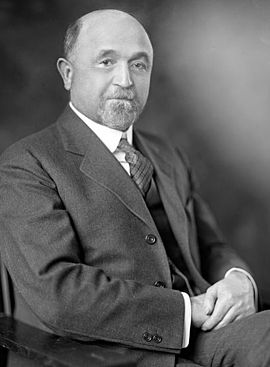 To the right appears William Humphrey, who like William Marbury, is known to history as the subject matter of a famous opinion. President Roosevelt’s efforts to remove Humphrey from the Federal Trade Commission led to the 1935 Supreme Court case of Humphrey’s Executor v. United States, about constitutional limits on the structure of administrative agencies. (Humphrey died during the litigation so his executor continued with the matter). In Consumers’ Research v. CPSC, the Fifth Circuit summarized the current state of the issue addressed by Humphrey’s Executor as follows:
To the right appears William Humphrey, who like William Marbury, is known to history as the subject matter of a famous opinion. President Roosevelt’s efforts to remove Humphrey from the Federal Trade Commission led to the 1935 Supreme Court case of Humphrey’s Executor v. United States, about constitutional limits on the structure of administrative agencies. (Humphrey died during the litigation so his executor continued with the matter). In Consumers’ Research v. CPSC, the Fifth Circuit summarized the current state of the issue addressed by Humphrey’s Executor as follows:
The Humphrey’s exception traditionally “has applied only to multimember bodies of experts.” Sitting en banc, we recently described the exception like this: Congress’s decision “limiting the President to ‘for cause’ removal is not sufficient to trigger a separation-of-powers violation.” Instead, for-cause removal creates a separation-of-powers problem only if it “combine[s]” with “other independence-promoting mechanisms” that “work[] together” to “excessively insulate” an independent agency from presidential control.
The plaintiffs in this case argue that the Supreme Court recently upended this framework in Seila Law. In their view, that 2020 decision held that for-cause removal always creates a separation-of-powers violation—at least if the agency at issue exercises substantial executive power (which nearly all agencies do). This is so, the plaintiffs argue, even if for-cause removal is the only structural feature insulating an agency from total presidential control. We do not read Seila Law so broadly. On the contrary, and as in Free Enterprise Fund, the Supreme Court in Seila Law left the Humphrey’s Executor exception “in place.”
No. 22-40328 (Jan. 17, 2024) (citations and footnote omitted).
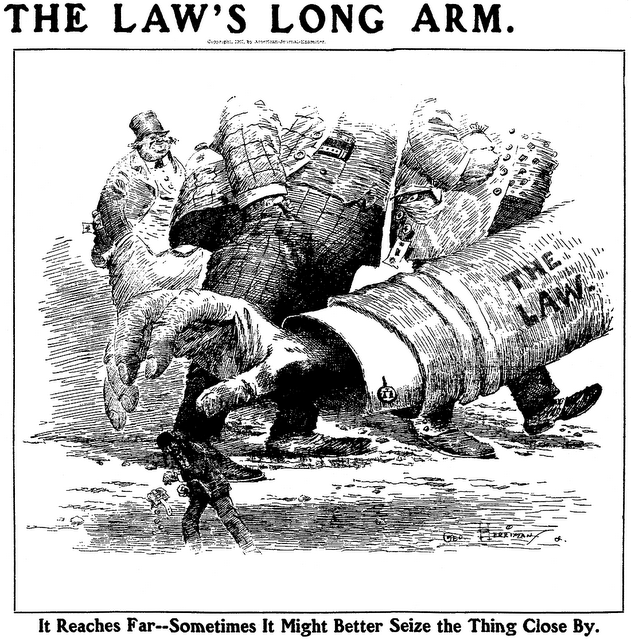 After carefully reviewing what arguments were properly before it, the Fifth Circuit went on to hold in Shambaugh & Son, LP v. Steadfast Ins. Co. that the plaintiff had not established jurisdiction over an out-of-state insurer: “Steadfast could not have reasonably anticipated being haled into court in Texas simply because Shambaugh’s records were kept in an office (in Austin) maintained by a division (Northstar) of a subsidiary (Shambaugh).” No. 23-50004 (Jan. 18, 2024). The Court noted the insurer’s involvement with other Texas litigation but found those contacts irrelevant and inadequate to establishe jurisdiction.
After carefully reviewing what arguments were properly before it, the Fifth Circuit went on to hold in Shambaugh & Son, LP v. Steadfast Ins. Co. that the plaintiff had not established jurisdiction over an out-of-state insurer: “Steadfast could not have reasonably anticipated being haled into court in Texas simply because Shambaugh’s records were kept in an office (in Austin) maintained by a division (Northstar) of a subsidiary (Shambaugh).” No. 23-50004 (Jan. 18, 2024). The Court noted the insurer’s involvement with other Texas litigation but found those contacts irrelevant and inadequate to establishe jurisdiction.
 Shambaugh & Son, LP v. Steadfast Ins. Co. presents a dispute about personal jurisdiction in an insurance-coverage case. The Fifth Circuit began by identifying the arguments properly before it, noting the distinction between waiver and forfeiture:
Shambaugh & Son, LP v. Steadfast Ins. Co. presents a dispute about personal jurisdiction in an insurance-coverage case. The Fifth Circuit began by identifying the arguments properly before it, noting the distinction between waiver and forfeiture:
“The terms waiver and forfeiture—though often used interchangeably by jurists and litigants—are not synonymous.” “Whereas forfeiture is the failure to make the timely assertion of a right, waiver is the ‘intentional relinquishment or abandonment of a known right.’”
Applying those standards, the Court observed, inter alia:
- “… if complaint allegations alone prevented subsequent forfeiture, then
it is difficult to imagine when any claim or argument could ever be forfeited”; - “… if including a claim in a complaint fails to preserve that claim … then a fortiori attaching an exhibit to a pleading does not insulate arguments derived from that exhibit“;
- A statement about choice of law did not avoid forfeiture when that “statement is nested within a broader discussion about forum shopping”;
- An argument about a specific statute was forfeited, and was not saved by a broader discussion about minimum contacts, when the lower-court briefing did not cite that statute and the statutory argument “is narrower and conceptually distinct from [appellant’s] other minimum contacts arguments.”
No. 23-50004 (Jan. 18, 2024).
In Book People, Inc. v. Wong, the Fifth Circuit reviewed the constitutionality of the Texas “READER” law, which “requires school book vendors who want to do business with Texas public schools to issue sexual-content ratings for all library materials they have ever sold (or will sell), flagging any materials deemed to be ‘sexually explicit’ or ‘sexually relevant’ based on the materials’ depictions of or references to sex.”
The Court held that the law violated the First Amendment, in that the ratings required by the law were not government speech, and fell within no exception to the rule against “compelled speech”:
- They did not come within the “government operations” exception because they “go[] beyond a mere disclosure of demographic or similar factual information.”
- Similarly, they were not a permissible commercial-speech regulation because “[b]alancing a myriad of factors that depend on community standards is anything but the mere disclosure of factual information.
No. 23-50668 (Jan. 17, 2024).
Please join the Dallas Bar Association Appellate Section at noon on Thursday, January 18, for a lunch presentation by me. I’ll be speaking on trends and cases to know from the past year in the U.S. Court of Appeals for the Fifth Circuit and the Fifth District Court of Appeals. I’ve done a similar presentation around this time of year for a few years now.
Here’s my PowerPoint. This CLE will be in-person at the Arts District Mansion, 2101 Ross in downtown Dallas.
 State of Louisiana v. U.S. Dep’t of Energy is an instructive analysis of basic administrative rulemaking concepts, in the unlikely setting of the regulation of washing machines and dishwashers. The substance will be discussed in future posts.
State of Louisiana v. U.S. Dep’t of Energy is an instructive analysis of basic administrative rulemaking concepts, in the unlikely setting of the regulation of washing machines and dishwashers. The substance will be discussed in future posts.
For today, in the “who knew?” department, the plaintiffs were several states, and their standing was based on the substantial purchases that those states made of those appliances. An affidavit quoted in the opinion, for example, describes the purchasing habits of the Montana Highway Patrol as to appliances for its bunkhouses. No. 22-60146 (Jan. 8, 2023).
The issue in Stewart v. Gruber was the exclusion of an untimely expert report; among other points made in affirming, the Fifth Circuit noted:
Plaintiffs fail to identify any precedent barring courts from considering whether the proponent of an untimely expert report declined an opportunity to cure such untimeliness by refusing to join a motion to continue that would have extended deadlines for both parties and therefore lessened any prejudice to the opposing party. Put another way, Plaintiffs were only willing to have extra time for them, not a similar extension for the Defendants who would need to, of course, have an expert that addressed the Plaintiffs’ expert. Such a notion on the part of the Plaintiffs was totally improper.
No. 23-30129 (Dec. 14, 2023, unpublished).
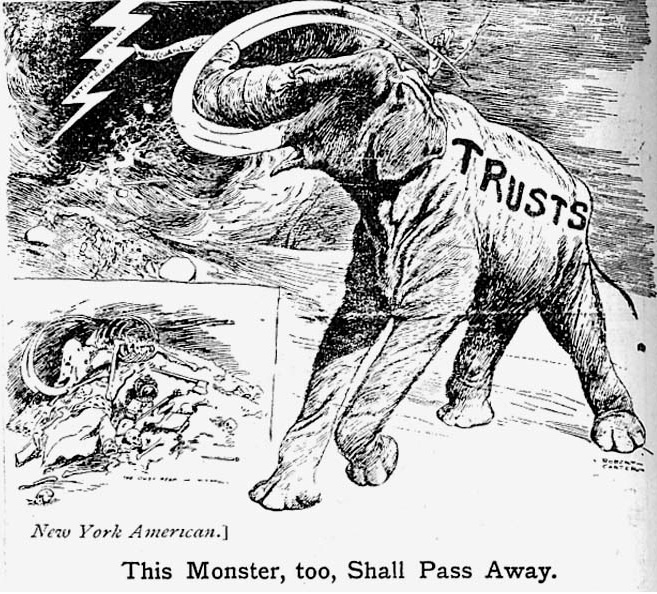 Illumina, Inc. v. FTC provides a comprehensive review of every aspect of an FTC antitrust decision about a merger:
Illumina, Inc. v. FTC provides a comprehensive review of every aspect of an FTC antitrust decision about a merger:
To sum up, Illumina’s constitutional challenges to the FTC’s authority are foreclosed by binding Supreme Court precedent, and substantial evidence supported the Commission’s conclusions that (1) the relevant market is the market for the research, development, and commercialization of MCED tests in the United States; (2) Complaint Counsel carried its initial burden of showing that the Illumina-Grail merger is likely to substantially lessen competition in that market under either the ability-and-incentive test or looking to the Brown Shoe factors; and (3) Illumina had not identified cognizable efficiencies to rebut the anticompetitive effects of the merger. However, in considering the Open Offer, the Commission used a standard that was incompatible with the plain language of the Clayton Act.
No. 23-60167 (Dec. 15, 2023). The “Open Offer” issue involved a dispute about precisely where an agreement, entered to stave off competition-based challenges to this merger, should be considered in the context of the relevant burdens of proof.
 The concurrent causation doctrine precluded recovery under an insurance policy for alleged hurricane damage in Shree Rama, LLC v. Mt. Hawley Ins. Co.:
The concurrent causation doctrine precluded recovery under an insurance policy for alleged hurricane damage in Shree Rama, LLC v. Mt. Hawley Ins. Co.:
Shree Rama did not carry its burden under the concurrent causation doctrine. The policy issued by Mt. Hawley explicitly covers damage from wind and explicitly excludes damage from wear and tear. Viewing the facts in the light most favorable to Shree Rama, it is possible that some damage to the hotel roof came from Hurricane Hanna and some from wear and tear. But the concurrent causation doctrine requires Shree Rama to provide the jury with “a reasonable basis” for allocating the damage between wind and wear and tear. . Shree Rama provided no reasonable basis. To the contrary, Shree Rama admitted at the district court level that its causation expert “could not definitively attribute [specific damages to the roof] to Hurricane Hanna when deposed.” Without a basis for allocating damages between covered and non- covered causes, Mt. Hawley was entitled to summary judgment.
No. 23-40123 (Dec. 14, 2023) (citations omitted).
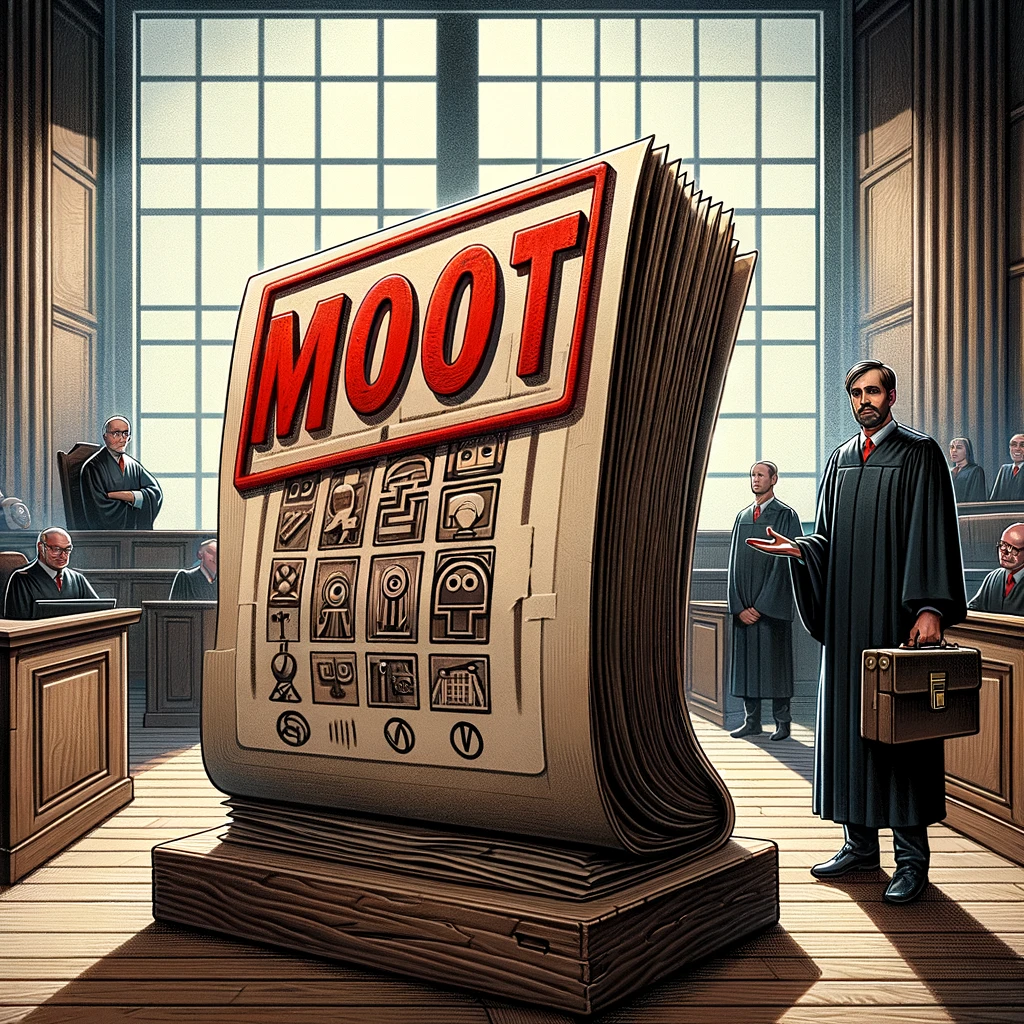 Smith v. Edwards examined whether a preliminary injunction should be vacated when the dispute became moot on appeal:
Smith v. Edwards examined whether a preliminary injunction should be vacated when the dispute became moot on appeal:
“[H]istorically, the established rule was to vacate the judgment if the case became moot on appeal.” However, in U.S. Bancorp Mortgage Co. v. Bonner Mall Partnership, “[t]he Supreme Court made clear and emphasized that vacatur is an ‘extraordinary’ and equitable remedy . . . to be determined on a case-by-case basis.” One principal consideration “is whether the party seeking relief from the judgment . . . caused the mootness by voluntary action.” “Thus, for example, ‘vacatur must be granted where mootness results from the unilateral action of the party who prevailed in the [district] court.’”
The equitable principles espoused in U.S. Bancorp and recognized by Staley apply in this case. Though Defendants complied with the preliminary injunction by removing the youths from BCCY-WF, they did not cause mootness by voluntary action. And though the injunction automatically expired under the PLRA, Plaintiffs could have sought an extension to extend its duration. . Having been “frustrated by the vagaries of circumstance, [Defendants] ought not in fairness be forced to acquiesce in the judgment.
No. 23-30634 (Dec. 19, 2023).
Start the New Year out right with “Get the Last Word in an Effective Reply Brief,” which I recently co-wrote for the Bar Association of the Fifth Federal Circuit with my skillful colleague Campbell Sode – available here along with many other valuable practice pointers by members of that great bar association. 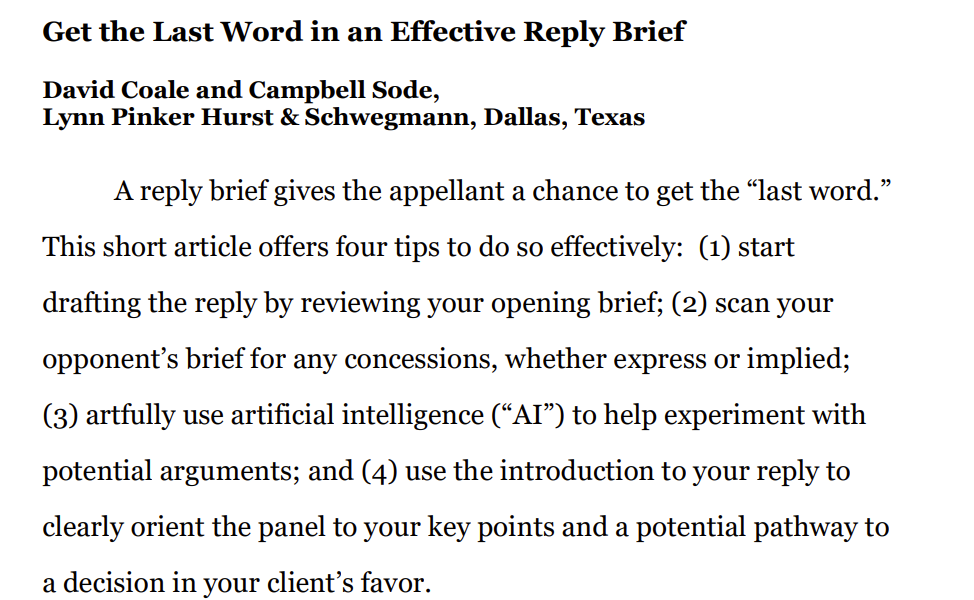
 Reiterating a recent holding in a near-identical lawsuit, in Bourque v. State Farm the Fifth Circuit rejected the certification of a class of insureds who were dissatisfied with the amount paid by State Farm for their wrecked cars:
Reiterating a recent holding in a near-identical lawsuit, in Bourque v. State Farm the Fifth Circuit rejected the certification of a class of insureds who were dissatisfied with the amount paid by State Farm for their wrecked cars:
Plaintiffs contended that they had met this standard because any class member who was paid less than the [National Automobile Dealers’ Association] value of their vehicle necessarily received less than [Actual Cash Value] and therefore suffered an injury. But we rejected that premise, explaining that NADA value was just one of many statutorily acceptable methods for calculating ACV, and therefore pinning ACV to NADA value constituted an impermissibly arbitrary choice of a liability model.
No. 22-30126 (Dec. 22, 2023).
 The Bar Association of the Fifth Federal Circuit is the bar association to belong to if you’re interested in the work of the U.S. Court of Appeals for the Fifth Circuit. More information about member benefits is detailed on the BAFFC’s website. One of those benefits is a terrific set of short (c. 500 word) articles about appellate practice (here’s an example that I did about a year ago on oral-argument preparation).
The Bar Association of the Fifth Federal Circuit is the bar association to belong to if you’re interested in the work of the U.S. Court of Appeals for the Fifth Circuit. More information about member benefits is detailed on the BAFFC’s website. One of those benefits is a terrific set of short (c. 500 word) articles about appellate practice (here’s an example that I did about a year ago on oral-argument preparation).
Please consider writing one yourself! A link will be emailed out several times to the BAFFC’s thousands of members, as part of its daily updates about recent decisions, and it’ll be available to the membership online as part of the full collection of these pieces. Contact BAFFC administrator Mary Douglas at mary@baffc.org!
 The National Court Reporters Association recently published a fascinating “white paper” about “ethical and legal issues related to the use of artificial intelligence … and digital audio recording of legal proceedings.” It’s succinct, thoughtful, and raises questions relevant to just about any area of law practice or court administration that’s touched by the influence of generative AI and related technologies.
The National Court Reporters Association recently published a fascinating “white paper” about “ethical and legal issues related to the use of artificial intelligence … and digital audio recording of legal proceedings.” It’s succinct, thoughtful, and raises questions relevant to just about any area of law practice or court administration that’s touched by the influence of generative AI and related technologies.
A Fifth Circuit panel applied circuit precedent to reject a liablity claim involving Snapchat in Doe v. Snap, Inc., No. 22-20543 (June 26, 2023), stating: “Parties complaining that they were harmed by a Web site’s publication of user-generated content . . . may sue the third-party user who generated the content, but not the interactive computer service that enabled them to publish the content online.” By a one-vote margin, the full court denied en banc review, as follows (notably, Edith Jones voted with the court’s Democrats to not review the panel opinion):
The mifepristone litigation – recently selected by Law360 as the most notable case of 2023 from the Fifth Circuit – will be heard by the Supreme Court. While it did not grant the petition about the original approval of mifepristone, a wide range of significant issues–including important standing questions, and the modern viability of the Comstock Act–are ripe for decision as part of the granted petitions:
Whatever your views of the remarkable civil-rights issue presented by Wilson v. Midland County (the intersection between some highly technical immunity rules and the bizarre injustice of a county employee working simultaneously for the prosecution and the courts), one can admire the deft prose of Jude Willett’s opinion: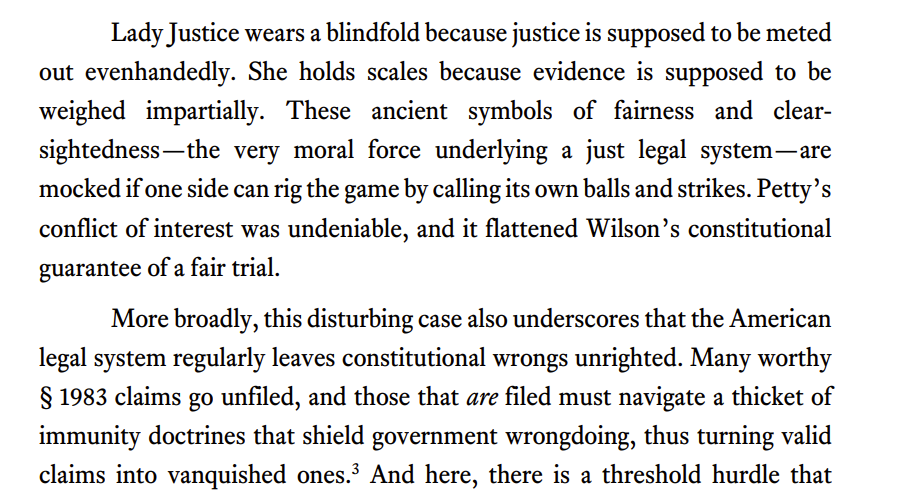
The Fifth Circuit reminded about the basics of issue statements in Smith v. Delta Charter Group, Inc.:
Delta also forfeited its argument that the district court should have instead applied Rule 54(b). Delta didn’t include this argument in its “Statement of the Issue” or in the body of its opening brief—rather, Delta relegated it to a footnote. We have repeatedly cautioned that arguments appearing only in footnotes are “insufficiently addressed in the body of the brief” and are thus forfeited. Delta’s Rule 54(b) argument meets this predictable fate.
No. 23-30063 (Dec. 13, 2023). Note that this is NOT a criticism of the “citational footnote”–and in fact, the concept of the citational footnote rejects this sort of stealthy, footnote-only legal argument.
“Here, ‘all parties have agreed from the beginning of this case that Houston’s voter registration provisions governing circulators’ are unconstitutional. The City also agreed that it ‘would and could not enforce the provisions.’ The City has repeatedly and consistently emphasized its agreement with the plaintiffs throughout this suit. Such faux disputes do not belong in federal court.”
Pool v. City of Houston, No. 22-20491 (Dec. 11, 2023) (citations omitted).
 The defendant in a boat-collision case challenged the admission of an accident reconstruction; the plaintiff argued that this point was not preserved. The Fifth Circuit concluded that the defendant had preserved some grounds for objection in a pretrial motion to exclude, a proposed pretrial order, and another pretrial filing about evidence. Thus: “[Defendant’s] pretrial objections preserved the arguments contained in Balkan’s motion in limine concerning authrntication and expert testimony. But neither he nor Balkan argued below that the reconstruction was inadmissible summary judgment evidence. That argument thus was not preserved for appeal.” Marquette Transp. Co. v. Navigation Maritime Bulgare JSC, No. 22-30261 (Dec. 4, 2023).
The defendant in a boat-collision case challenged the admission of an accident reconstruction; the plaintiff argued that this point was not preserved. The Fifth Circuit concluded that the defendant had preserved some grounds for objection in a pretrial motion to exclude, a proposed pretrial order, and another pretrial filing about evidence. Thus: “[Defendant’s] pretrial objections preserved the arguments contained in Balkan’s motion in limine concerning authrntication and expert testimony. But neither he nor Balkan argued below that the reconstruction was inadmissible summary judgment evidence. That argument thus was not preserved for appeal.” Marquette Transp. Co. v. Navigation Maritime Bulgare JSC, No. 22-30261 (Dec. 4, 2023).
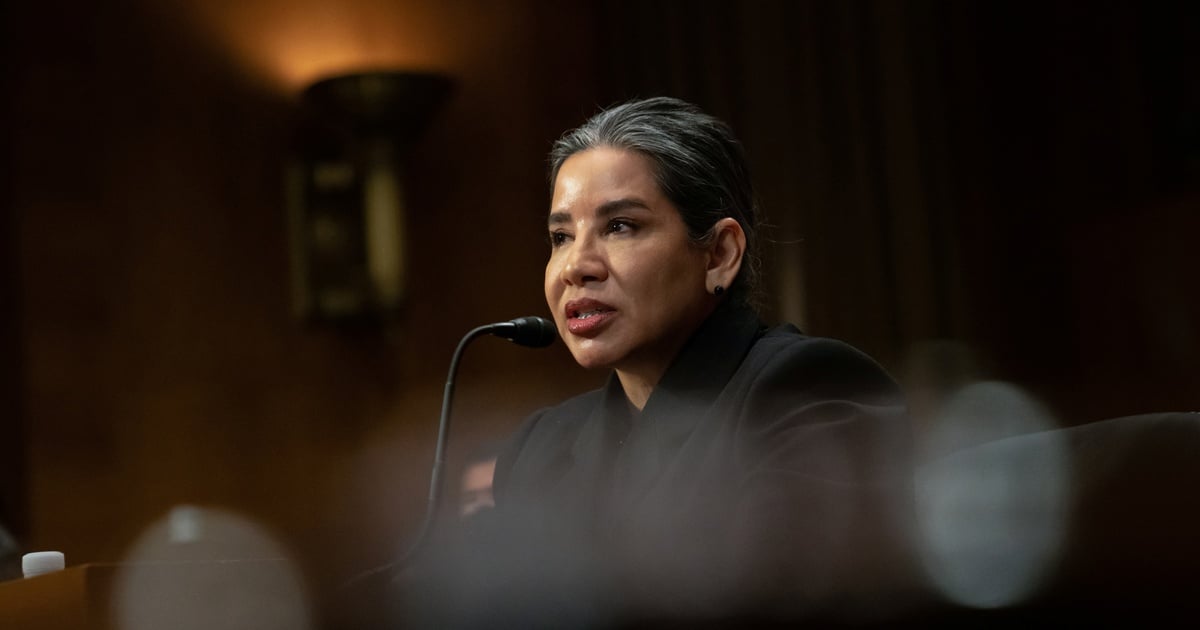 The Senate recently confirmed Hon. Irma Ramirez of Dallas as a judge on the Fifth Circuit. When she takes office the Court will again be at a full complement of active judges.
The Senate recently confirmed Hon. Irma Ramirez of Dallas as a judge on the Fifth Circuit. When she takes office the Court will again be at a full complement of active judges.
 Eschewing exotic constitutional issues about a state’s rights to engage in military activity, the Fifth Circuit affirmed a preliminary injunction requiring Texas to remove an obstacle from the Rio Grande, citing the federal government’s exclusive authority as to navigable waters. United States v. Abbott, No. 23-50632 (Dec. 1, 2023). A dissent had a different view; some serious consideration of en banc review is likely.
Eschewing exotic constitutional issues about a state’s rights to engage in military activity, the Fifth Circuit affirmed a preliminary injunction requiring Texas to remove an obstacle from the Rio Grande, citing the federal government’s exclusive authority as to navigable waters. United States v. Abbott, No. 23-50632 (Dec. 1, 2023). A dissent had a different view; some serious consideration of en banc review is likely.
 After resolving threshold matters about justiciability, the Fifth Circuit rejected facial First Amendment challenges to Texas laws about the use of drones in Nat’l Press Photographers Ass’n v. McCraw, as follows:
After resolving threshold matters about justiciability, the Fifth Circuit rejected facial First Amendment challenges to Texas laws about the use of drones in Nat’l Press Photographers Ass’n v. McCraw, as follows:
- “No-Fly” provisions. “Plaintiffs’ First Amendment challenge to the No-Fly provisions falters because ‘only conduct that is “inherently expressive” is entitled to First Amendment protection.’ The operation of a drone is not inherently expressive—nor is it expressive to fly a drone 400 feet over a prison, sports venue, or critical infrastructure facility. And nothing in the No-Fly provisions has anything to do with speech or expression. These are flight restrictions, not speech restrictions.” (footnotes omitted, emphasis in original).
- “Surveillance” provisions (which prohibit the use of a drone to capture images “with the intent to conduct surveillance ….”). “Though most drone operators harbor no harmful intent, drones have singular potential to help individuals invade the privacy rights of others because they are small, silent, and able to capture images from angles and altitudes no ordinary photographer, snoop, or voyeur would be able to reach. … The law is also tailored to bar only surveillance
that could not be achieved through ordinary means …. We therefore conclude that the law survives intermediate scrutiny.”
No. 22-50337 (Oct. 23, 2023). The opinion was later revised.
An antitrust case in Tennessee recently produced a remarkably contentious dispute about the definition of “double spacing,” as deftly summarized in this “Above the Law” article titled “Heated Litigation Fight Over Double Spacing Ends in Judge Telling Everyone to Shut Up.” While the dispute was picayune, the discussion of just what exactly “double spacing” means is interesting background for a modern word-processing feature that we seldom stop and think about. Thanks to my law partner Chris Schwegmann for flagging this for me.
 A series of cases about the EPA’s regulation of small refineries led to a disagreement about Circuit venue over this kind of administrative-agency challenge. A majority appled a two-part test focused on whether the agency action was “nationally applicable”; the dissent rejected the majority’s analysis as inconsistent with statutory text, purpose, and structure. No. 22-60266 etc. (Nov. 22, 2023).
A series of cases about the EPA’s regulation of small refineries led to a disagreement about Circuit venue over this kind of administrative-agency challenge. A majority appled a two-part test focused on whether the agency action was “nationally applicable”; the dissent rejected the majority’s analysis as inconsistent with statutory text, purpose, and structure. No. 22-60266 etc. (Nov. 22, 2023).
 The “Lyme Wars” are an ongoing medical controversy about the diagnosis and treatment of Lyme disease. Absent Supreme Court review, one front in those “wars” ended in Torrey v. Infectious Diseases Society of America, in which the Fifth Circuit affirmed the dismissal of defamation claims related to statements in a medical journal: “[T[he district court did not err in holding that IDSA’s Guidelines statements about chronic Lyme disease constitute nonactionable medical opinions.” No. 22-40728 (Nov. 16, 2023).
The “Lyme Wars” are an ongoing medical controversy about the diagnosis and treatment of Lyme disease. Absent Supreme Court review, one front in those “wars” ended in Torrey v. Infectious Diseases Society of America, in which the Fifth Circuit affirmed the dismissal of defamation claims related to statements in a medical journal: “[T[he district court did not err in holding that IDSA’s Guidelines statements about chronic Lyme disease constitute nonactionable medical opinions.” No. 22-40728 (Nov. 16, 2023).
 The latest installment in the “Bar Wars” litigation about speech by compulsory bar associations is Boudreaux v. Louisiana State Bar Ass’n, holding:
The latest installment in the “Bar Wars” litigation about speech by compulsory bar associations is Boudreaux v. Louisiana State Bar Ass’n, holding:
[T]he majority of speech Boudreaux objects to is germane. Speech can be germane even if it is “controversial and ideological.” But the LSBA crossed the line when it promoted purely informational articles absent any tailoring to the legal profession. That includes the LSBA’s tweet about student-loan reform and its promotion of the History.com article through a pride flag icon. Advancing generic political and social messages in those ways violates the First Amendment rights of the LSBA’s dissenting members.
No. 22-30564 (Nov. 13, 2023).
 The question in Elmen Holdings, LLC v. Martin Marietta Mat’ls, Inc. was whether a gravell-mining lease had terminated. The district court included that it had been terminated, and the appellant’s first issue was that the court’s analysis went too far under the “party-presentation” principle — a concept given new life and relevance by United States v. Sineneng-Smith, 140 S. Ct. 1575 (2020).
The question in Elmen Holdings, LLC v. Martin Marietta Mat’ls, Inc. was whether a gravell-mining lease had terminated. The district court included that it had been terminated, and the appellant’s first issue was that the court’s analysis went too far under the “party-presentation” principle — a concept given new life and relevance by United States v. Sineneng-Smith, 140 S. Ct. 1575 (2020).
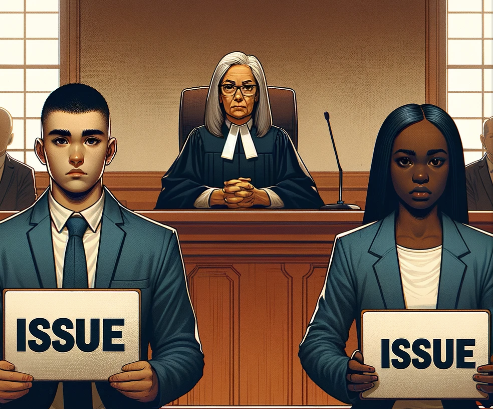 The Fifth Circuit concluded that while the appellant’s argument “had some merit,” the trial court did not go too far:
The Fifth Circuit concluded that while the appellant’s argument “had some merit,” the trial court did not go too far:
“[T]he magistrate judge recommended granting Elmen’s motion for summary judgment because Martin Marietta had been late on several royalty payments. The magistrate judge did not ‘radical[ly] transform[]’ this case to such an extent as to constitute an abuse of discretion; she merely took a different route than Martin Marietta and Elmen had suggested to ;decide . . . questions presented by the parties.’ Therefore, the magistrate judge did not violate the party presentation principle by interpreting the Gravel Lease to terminate automatically upon a missed royalty payment, even if that interpretation was contrary to the parties’ reading of their contract.”
No. 23-20023 (Nov. 15, 2023); cf. United Natural Foods v. NLRB, 66 F.4th 536 (5th Cir. 2023) (majority and dissent disagree about whether a particular line of argument is allowed by the party-presentation principle).
 Anytime Fitness LLC v. Thornhill Bros. Fitness LLC, acknowledging that a bankruptcy debtor may assign or assume an executory contract, provided an important reminder about the extent of that power: “We reiterate our prior holdings: a debtor assuming an executory contract cannot separate the wheat from the chaff. And we make clear that, when a trustee relies on § 365(f) to assign an executory contract in bankruptcy, it must assign the contract in whole, not in part.” No. 22-30757 (Oct. 27, 2023).
Anytime Fitness LLC v. Thornhill Bros. Fitness LLC, acknowledging that a bankruptcy debtor may assign or assume an executory contract, provided an important reminder about the extent of that power: “We reiterate our prior holdings: a debtor assuming an executory contract cannot separate the wheat from the chaff. And we make clear that, when a trustee relies on § 365(f) to assign an executory contract in bankruptcy, it must assign the contract in whole, not in part.” No. 22-30757 (Oct. 27, 2023).
 The Oil Pollution Act provides remedies for the wrongful release of oil into the environment. CERCLA does the same for a number of other pollutants. The issue in Munoz v. Intercontinental Terminals Co., LLC was whether OPA liability extended to a spill that combined oil with other hazardous substances regulated by CERCLA. Based on statutory language and structure, the Fifth Circuit concluded that the OPA did not apply to such a chemical release. No. 22-20456 (Oct. 27, 2023).
The Oil Pollution Act provides remedies for the wrongful release of oil into the environment. CERCLA does the same for a number of other pollutants. The issue in Munoz v. Intercontinental Terminals Co., LLC was whether OPA liability extended to a spill that combined oil with other hazardous substances regulated by CERCLA. Based on statutory language and structure, the Fifth Circuit concluded that the OPA did not apply to such a chemical release. No. 22-20456 (Oct. 27, 2023).
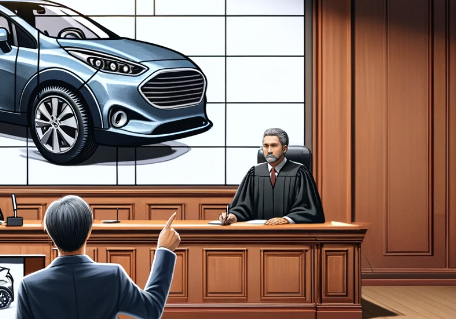 In an instructive review of a products-liability judgment based on expert testimony and a hotly disputed jury instruction, the Fifth Circuit affirmed in Kim v. American Honda Motor Co.:
In an instructive review of a products-liability judgment based on expert testimony and a hotly disputed jury instruction, the Fifth Circuit affirmed in Kim v. American Honda Motor Co.:
Honda attempts to escape this jury verdict by arguing the district court erred in three ways: by admitting Plaintiffs’ experts, denying its JMOL motion, and denying its proposed instruction about the nonliability presumption. But it is incorrect on all fronts. The Plaintiffs’ experts based their opinions on reliable methodologies and provided relevant, helpful testimony. As such, there was sufficient evidence for the jury to find Honda liable for the Kims’ injuries. The district court’s application of the Texas statutory presumption of nonliability was also faithful to the statutory text, the precedent of Texas, and the precedent of this Court.
No. 22-40790 (Nov. 7, 2023).
 Antero Resoiures Corp. v. C&R Downhole Drilling Inc., an appeal about an $11 million judgment for alleged overbilling in energy production, rejected a second challenge to the plaintiff’s damages calculation in addition to the one discussed yesterday.
Antero Resoiures Corp. v. C&R Downhole Drilling Inc., an appeal about an $11 million judgment for alleged overbilling in energy production, rejected a second challenge to the plaintiff’s damages calculation in addition to the one discussed yesterday.
Specifically, the appellant argued that the expert’s testimony “was deficient because it did not consider what rates competing drillout providers might have paid. Even if the Robertson companies took longer, so the argument goes, if they charged significantly less than other companies, Antero might have ended up paying less than if it had hired someone else.”
The Fifth Circuit rejected this argument for two related resons:
- Legal materiality. “[E]vidence of a competitor’s rate is not necessary to prove out-of pocket damages. To show damages, Antero need only prove that the Robertson companies charged it more than the ‘value [Antero] received.’ By billing Antero more than the services it rendered, Kawcak caused Antero to incur out-ofpocket expenses. That is, Antero paid $150,000,000 in exchange for a certain number of days of work. But because the Robertson companies did not actually work on all of the days they billed, the value of the work Antero received was only $138,877,860. The difference in value is the amount overbilled. No reference to competitors’ rates is needed for that statement to be true.”
- Factual materialty. “[T]he jury was not required to accept Kawcak’s testimony regarding Fortis Energy’s rates. As Antero points out, there are multiple reasons why the jury might not have credited Kawcak’s assertion that Fortis Energy was the only other available drillout provider, and that it would have charged more than the Robertson companies. Kawcak gave the rates strictly from memory, and his credibility was already in question because of his inconsistent answers to previous questions.”
No. 22-10918 (Oct. 31, 2023) (citations omitted).
 Antero Resoiures Corp. v. C&R Downhole Drilling Inc. presented a dispue about the calculation of damages in a case about alleged overbilling in energy production. The Fifth Circuit affirmed against a challenge that the plainitff’s expert was not sufficiently precise, holding:
Antero Resoiures Corp. v. C&R Downhole Drilling Inc. presented a dispue about the calculation of damages in a case about alleged overbilling in energy production. The Fifth Circuit affirmed against a challenge that the plainitff’s expert was not sufficiently precise, holding:
[T]the amount of damages need only be proven “with a reasonable degree of certainty.” Taylor’s testimony calculated Antero’s out-of-pocket damages to a reasonable degree of certainty, especially when viewing the evidence in favor of the verdict. Taylor followed sound analytical methods to determine how long the Robertson companies should have taken to complete the drillout services. He reviewed the hundreds of completion reports and tens of thousands of invoices, accounting for uncontrollable delays and site-specific conditions. Taylor then compared the time spent to the time taken by previous drillout providers and concluded that the Robertson companies took some percentage longer than those companies. Applied to the rates charged by the Robertson companies, Taylor calculated damages in the amount of $11,122,140. That is a perfectly rational way of approximating overbilling.
No. 22-10918 (Oct. 31, 2023) (citation omitted).
 In Chamber of Commerce v. U.S. Sec. & Exch. Comm’n, the Fifth Circuit found that the SEC acted too quickly in enacting a challenged rule, but then allowed it a “do-over” within a specified time:
In Chamber of Commerce v. U.S. Sec. & Exch. Comm’n, the Fifth Circuit found that the SEC acted too quickly in enacting a challenged rule, but then allowed it a “do-over” within a specified time:
The SEC acted arbitrarily and capriciously, in violation of the APA, when it failed to respond to petitioners’ comments and failed to conduct a proper cost-benefit analysis. We recognize that “there is at least a serious possibility that the agency will be able to substantiate its decision given an opportunity to do so.” Short of vacating the rule, we therefore afford the agency limited time to remedy the deficiencies in the rule. Because, for the reasons explained, the SEC’s adoption of the Share Repurchase Disclosure Modernization Rule is arbitrary and capricious, the petition for review is GRANTED, and this matter is REMANDED with direction to the SEC to correct the defects in the rule within 30 days of this opinion. This is a limited remand. This panel retains jurisdiction to consider the decision that is made on remand.
No. 23-60255 (Oct. 31, 2023); but cf. Alliance for Hippocratic Medicine v. U.S. Food & Drug Admin., No. 23-10362 (Aug. 16, 2023).
 In re TikTok, Inc. returns to the ground plowed by In re Volkswagen in 2008 and In re Radmax in 2014: a mandamus petition about the erroneous denial of a motion to transfer venue under 28 USC § 1404(a). In this case (an intellectual-property case brought against TikTok by another Chinese business), The Fifth Circuit noted several missteps by the district court that justified mandamus relief, inter alia:
In re TikTok, Inc. returns to the ground plowed by In re Volkswagen in 2008 and In re Radmax in 2014: a mandamus petition about the erroneous denial of a motion to transfer venue under 28 USC § 1404(a). In this case (an intellectual-property case brought against TikTok by another Chinese business), The Fifth Circuit noted several missteps by the district court that justified mandamus relief, inter alia:
- Relative ease of access to sources of proof–source code. “The district court concluded that the source code was accessible as easily in Texas as in California because one member of the California engineering team with the needed security clearance worked remotely in Irving, Texas. But the court erred by comparing Texas with California when it should have been comparing the Western District of Texas with the Northern District of California.”
- Relative ease of access to sources of proof–people. “Neither the district court nor Meishe identifies any record evidence showing that any employee in the Western District of Texas possesses proof relevant to this case. The district court relied on deposition testimony and witness declarations from several of petitioners’ employees. That evidence, however, only establishes that a high-ranking company executive and other employees worked in Austin as members of a “Global Business Solutions Group.” It does not tie those individuals to this case, or show that they do any work related to the video-editing functionality or its implementation, or support the proposition that any of them would have physical proof relevant to the adjudication of Meishe’s claims. … [I]t is pure speculation whether any of petitioners’ Austin-based employees possesses or has access to proof relevant to this case.”
- Court-created delay. “Petitioners filed their § 1404(a) motion timely, yet the district court took no action on the motion for months, with the record showing no adequate reason for the delay. Moreover, the court failed to grant a stay, so the case proceeded through discovery for almost a year. When the court finally ruled, it used the case progress its delay engendered as a reason for denying transfer. If we were to hold that this is a proper exercise of discretion, a district court would have absolute control over whether these two factors weighed in favor of transfer.”
Joining other courts that have made similar additions to their local rules, the Eastern District of Texas now has new local rules dealing with the use of generative AI:
 Anytime Fitness LLC v. Thornhill Bros. Fitness LLC, an opinion about a bankruptcy debtor’s power to partially assign a contract, quotes the useful but infrequently heard principle of “Nemo dat quod non habet” (“No one can give what they do not have.”). The principle is quoted in a suprising variety of situations and has inspired academic commentary about its interplay with related ideas.
Anytime Fitness LLC v. Thornhill Bros. Fitness LLC, an opinion about a bankruptcy debtor’s power to partially assign a contract, quotes the useful but infrequently heard principle of “Nemo dat quod non habet” (“No one can give what they do not have.”). The principle is quoted in a suprising variety of situations and has inspired academic commentary about its interplay with related ideas.
During an Erie analysis of a Louisiana-law issue, the Fifth Circuit observed: “We are ‘a strict stare decisis court,’ meaning that a prior panel’s interpretation of state law is ‘no less binding on subsequent panels than are prior interpretations of federal law.'” QBE Syndicate 1036 v. Compass Minerals Louisiana, Inc., No. 23-30076 (Oct. 12, 2023). What distinguishes a “strict stare decisis court” from a less-strict one is not entirely clear, but the application of the “rule of orderliness” to state-law issues is well settled.
 United States v. Johnson, a criminal case, identifies an erroneous statistics-based argument called “the prosecutor’s fallacy,” and the structure of that argument is of general interest to all litigators:
United States v. Johnson, a criminal case, identifies an erroneous statistics-based argument called “the prosecutor’s fallacy,” and the structure of that argument is of general interest to all litigators:
At Johnson’s second trial, the government introduced expert testimony about a partial DNA sample obtained from a bandana found in the vehicle used in the robbery. Testing yielded inclusionary match statistics capturing the probability that the sample was Johnson’s as compared to a coincidental match of an unrelated person, and the lowest inclusionary match statistic had an error rate of one in 4,100. That is, the expert explained, only one in 4,100 people would match the sample as strongly as Johnson did. But, in the government’s first closing argument, the prosecutor said that Johnson “left very little DNA, but he left just enough to prove that it was him in the front seat when you combine the 1 in 4,100 chance that it’s not him.” Johnson did not object.
The prosecutor’s fallacy occurs when “a juror is told the probability a member of the general population would share the same DNA is 1 in 10,000 (random match probability), and he takes that to mean there is only a 1 in 10,000 chance that someone other than the defendant is the source of the DNA found at the crime scene (source probability).” Conflating these two probabilities, as the prosecutor did here, yields “an erroneous statement that, based on a random match probability of 1 in 10,000, there is a 0.01% chance the defendant is innocent or a 99.99% chance the defendant is guilty.”
No. 22-30421 (Oct. 26, 2023) (citation omitted). Note that the Court did not reverse on this issue in this case. The above graphic was supplied by DALL-E, a feature of the newest iteration of ChatGPT.
 In Louisiana Creole cooking, gumbo is a flavorful, roux-based soup made with the ingredients available to the chef. Similarly, Alliance for Fair Board Recruitment v. SEC addresses a host of constitutional issues of the day, including the questions whether a board-membership disclosure requirement by Nasdaq can be “state action”; whether the SEC’s approval of such a rule exceeded its statutory authority (including the subsidiary questions whether that action infringed on state sovereignty or involved a “major question”); and whether the SEC properly assessed the relevant record in reaching its conclusion. Unusual for the Fifth Circuit, the panel consisted of three judges appointed by Democratic presidents. It remains to be seen what the view of the full court will be on these matters. No. 21-60626 (Oct. 18, 2023).
In Louisiana Creole cooking, gumbo is a flavorful, roux-based soup made with the ingredients available to the chef. Similarly, Alliance for Fair Board Recruitment v. SEC addresses a host of constitutional issues of the day, including the questions whether a board-membership disclosure requirement by Nasdaq can be “state action”; whether the SEC’s approval of such a rule exceeded its statutory authority (including the subsidiary questions whether that action infringed on state sovereignty or involved a “major question”); and whether the SEC properly assessed the relevant record in reaching its conclusion. Unusual for the Fifth Circuit, the panel consisted of three judges appointed by Democratic presidents. It remains to be seen what the view of the full court will be on these matters. No. 21-60626 (Oct. 18, 2023).
Thanks to a persuasive letter from a typographically sophisticated attorney, the Maryland Supreme Court recently recently modernized its list of acceptable fonts, as follows (omitting Palatino and Equity, however). Thanks to my law partner Greg Brassfield for drawing this to my attention!
Also of general interest, the letter links to an informative series of Tweets about the typography used in the federal courts of appeal.
The question in Armadillo Hotel Group v. Harris was whether Armadillo’s federal-court trade-secrets claim constituted “claim splitting,” given earlier, related litigation between the same defendants and an entity related to Armadillo. The Fifth Circuit agreed with the district court’s conclusion as to the claims, but remanded for further development of the record about the parties:
- Claims: “It is irrelevant that Harris and McDaniel brought suit against AHG Management on the basis of fraudulent inducement related to their employment. Although Harris and McDaniel have a different cause of action than Armadillo, our focus is the relevant claims that arise out of a common nucleus of operative facts.”
- Parties: “The Defendants rely on the similarities in Armadillo’s and AHG Management’s descriptions of themselves, in the shorthand names they use in their respective cases, in their services and customers, and in their descriptions of the confidential information at issue. … Perhaps an inference is reasonable that Armadillo and AHG Management are in privity based on the similarities the Defendants highlight. At the motion to dismiss stage, however, such inferences are inappropriate.”
No. 22-50945 (Oct. 20, 2023) (emphasis in original).
Two recent opinions touch on the important but infrequently addressed topic of judicial recusal. In one, the Fifth Circuit’s Chief Judge identified a complaint against a prominent bankruptcy judge based on an allegedly inappropriate personal relationship. In the other, a panel rejected a request to recuse a district judge from several Deepwater Horizon cases based on a past law-firm partnership.
The remand of Collins v. Yellen, 141 S. Ct. 1761 (2020) did not end well for the plaintiffs, as the district court concluded that they “had not plausibly alleged that the removal restriction” on FHFA’s director caused them harm. The plaintiffs made a valiant effort to bring the case within the scope of a recent Fifth Circuit holding about the Appropriations Clause, but the Fifth Circuit found that its holding in that case did not create a change in the relevant law that was sufficient to overcome the mandate rule. Collins v. Dep’t of the Treasury, No. 22-20632 (Oct. 12, 2023).
 The Fifth Circuit reversed the district court and allowed the City of Dallas’s ordinance requiring sexually oriented businesses to shut down by 2 AM, summarizing: “”Under longstanding Supreme Court precedent, the Ordinance is likely constitutional. The City’s evidence reasonably showed a link between SOBs’ late-night operations and an increase in “noxious side effects,” such as crime. The Ordinance also left the SOBs ample opportunity to purvey their speech at other times of the day and night.” Assoc. of Club Executives v. City of Dallas, No. 22-10556 (Oct. 12, 2023).
The Fifth Circuit reversed the district court and allowed the City of Dallas’s ordinance requiring sexually oriented businesses to shut down by 2 AM, summarizing: “”Under longstanding Supreme Court precedent, the Ordinance is likely constitutional. The City’s evidence reasonably showed a link between SOBs’ late-night operations and an increase in “noxious side effects,” such as crime. The Ordinance also left the SOBs ample opportunity to purvey their speech at other times of the day and night.” Assoc. of Club Executives v. City of Dallas, No. 22-10556 (Oct. 12, 2023).
A case about allegedly stolen computer code concluded with a case-ending sanction against the defendant. The Fifth Circuit affirmed; in sum:
Dabral admittedly deleted evidence, delayed discovery on several occasions, and ignored court orders. And, when he was offered one last “chance” to “come clean” and submit an unmodified source code control system, he didn’t. Instead, he deleted more evidence and produced a copy of the system that had numerous other files missing. Per his own expert, those deletions were seemingly “intentional” and done after the filing of Calsep’s suit and even after the district court’s disclosure order. So, the district court concluded that Dabral acted willfully and in bad faith. The court didn’t reach that conclusion easily. Instead, it came after months of violations and a long evidentiary hearing. Only then did it make its informed decision.
Calsep A/S v. Dabral, No. 22-20440 (Oct. 11, 2023).
 In a revised opinion, the Fifth Circuit again affirmed the convictions of executives associated with a “Ponzi-like scheme” involving United Development Funding. The Court reviewed a number of sufficiency challenges to various securities fraud charges; an example of its reasoning is as follows:
In a revised opinion, the Fifth Circuit again affirmed the convictions of executives associated with a “Ponzi-like scheme” involving United Development Funding. The Court reviewed a number of sufficiency challenges to various securities fraud charges; an example of its reasoning is as follows:
It does not matter that UDF IV and UDF V had collateral on the loans that it transferred to UDF III. Nor does it matter that they did not intend to cause investors financial loss. (citation omitted) (“[T]he [fraud] statute, while insisting upon ‘a scheme to defraud,’ demands neither a showing of ultimate financial loss nor a showing of intent to cause financial loss.”). Appellants exposed investors to risks and losses that, if publicly disclosed, would have decreased its value and investment power. That is enough to support a fraud conviction.
United States v. Greenlaw, No. 22-10511 (Oct. 11, 2023).
SXSW, LLC v. Federal Ins. Co., an insurance-coverage case arising out of the 2020 cancellation of South by Southwest because of COVID-19, presented some “evergreen” issues about LLCs and diversity jurisdiction that led to a remand for further development of the record. The Fifth Circuit noted “at least three potential jurisdictional
defects” on the record presented–
- “First, there is a potentially important difference between LLC membership and LLC ownership. State law governs LLC formation and organization. Several states permit LLC membership without ownership. … SXSW has not shown the relevant LLCs were formed in States that equate membership and ownership.”
- “Second, SXSW stated that Capshaw [an LLC owner] was a Virginia resident. But residency is not citizenship for purposes of § 1332.”
- “Finally, there is a timing issue. For diversity jurisdiction, we look to citizenship at the time the complaint was filed. The complaint makes no allegations about the citizenship of SXSW’s members. Federal’s December 14, 2021 exhibit contains some additional information, as does SXSW’s February 22, 2023 appellant brief.But we have no way of knowing whether those later documents reflect SXSW’s membership structure as of October 6, 2021.”
No. 22-50933 (Oct. 5, 2023) (citations omitted, emphasis added).
A trucking company went into bankruptcy after its insurer paid a substantial sum to settle a personal-injury case. Other claimaints claimed that the payment was a preferential transfer, and the Fifth Circuit agreed that the claim could proceed:
As the Supreme Court explained in Begier, “[b]ecause the purpose of the avoidance provision is to the preserve the property includable within the bankruptcy estate . . . ‘property of the debtor’ subject to the preferential transfer provision is best understood as that property that would have been part of the estate had it not been transferred before the commencement of bankruptcy proceedings.” The Policy Proceeds would have been property of the estate at the time the petition was filed if they had not been transferred. Thus, for the purposes of the avoidance provision as stated in Begier, the Policy Proceeds are the property of the estate.
Law Office of Rogelio Solis PLLC v. Curtis, No. 23-40125 (Oct. 6, 2023) (citations omitted).
In a dissent from a recent, close en banc vote in a criminal case, Judge Smith reiterated an earlier warning to again caution: “Highly consequential opinions should not be designated as unpublished in an obvious effort to discourage judges from voting in favor of en banc rehearing.” United States v. Ramirez, No. 22-50042 (Sept. 19, 2023).
Carbon Six Barrels, LLC v. Proof Research, Inc., a state-law trademark case about the design of gun barrels, turned on an Erie conclusion about Louisiana prescription law:
While true that Hogg and Crump arose in the context of damage to real property, we, like the district court, see no reason that the general principle those opinions announced should not apply here. The Louisiana Supreme Court made clear that “[t]he inquiry [as to a continuing tort] is essentially a conduct-based one, asking whether the tortfeasor perpetuates the injury through overt, persistent, and ongoing acts.” … This principle is not confined to the real property context. The district court was correct in stating that the earlier cases Carbon Six cites “are generally inconsistent with the [Louisiana] Supreme Court’s holding in Hogg,” and that “Louisiana law does not support the broad proposition that LUTPA’s prescriptive period is suspended as long as a perpetrator of fraud fails to correct his false statements.” This proposition would transform nearly every business dispute into a continuing tort.
(citations omitted). Also, I spoke about “AI and the Legal Profession” at the recent annual meeting of the Bar Association of the Fifth Federal Circuit, and used the briefs in this case to illustrate the capabilities (and deficiencies) of generative AI–here is my PowerPoint!
In re Landry presents a baffling interaction between: (1) the ongoing appeal of a preliminary injunction in a Louisiana congressional-district case, and (2) a mandamus proceeding, challenging the setting of a district-court hearing about a remedial plan, related to that same redistricting dispute.
By a 2-1 vote, a panel granted mandamus relief against that hearing going forward, noting the unusual policy and separation-of-power considerations that arise in redistricting cases. The dissent would have consolidated the mandamus proceeding with the ongoing appeal, and a concurring judge indicated that he would have been inclined to do so too, had the panel handling the preliminary-injunction appeal so asked. No. 23-30642 (Sept. 28, 2023).
Together with the able Ben Taylor, I have an article in the most recent Baylor Law Review called “Judgment Rendition in Texas.” The abstract is below. Our article was inspired by a 1975 article by Justice Robert Calvert in the Texas Tech Law Review called “Appellate Court Judgments or Strange Things Happen on the Way to Judgment.” We hope that we updated some of his insights for modern-day appellate practice.
The Supreme Court has granted review of three social-media regulation cases, one of which is the 2022 2-1 panel opinion by the Fifth Circuit in Netchoice v. Paxton, which conflicts with a 2022 opinion from the Eleventh Circuit about similar subject matter. These are the two issues referenced in the Court’s order granting review:
 After rendition of a substantial judgment in a matter tried to a magistrate judge, the defendant argued that its consent to proceed before the magistrate judge was invalid, because it was unaware of an allegedly close friendship between the magistrate judge and plaintiff’s counsel at that time. The Fifth Circut held: “[W]e do not have a complete factual record,” noting a lack of information about (1) the full extent of the relationship, (2) the specific disclosures made about it–and when they were made, and (3) whether the defendant unduly delayed in raising its argument about the relationship. IFG Port Holdings LLC v. Lake Charles Harbor & Terminal District, No. 22-30398 (Sept. 21, 2023) (The importance of valid consent was also the focus of a 2021 Fifth Circuit case that reversed after a trial.)
After rendition of a substantial judgment in a matter tried to a magistrate judge, the defendant argued that its consent to proceed before the magistrate judge was invalid, because it was unaware of an allegedly close friendship between the magistrate judge and plaintiff’s counsel at that time. The Fifth Circut held: “[W]e do not have a complete factual record,” noting a lack of information about (1) the full extent of the relationship, (2) the specific disclosures made about it–and when they were made, and (3) whether the defendant unduly delayed in raising its argument about the relationship. IFG Port Holdings LLC v. Lake Charles Harbor & Terminal District, No. 22-30398 (Sept. 21, 2023) (The importance of valid consent was also the focus of a 2021 Fifth Circuit case that reversed after a trial.)
This blog celebrated its 12th birthday last week. To celebrate properly, you can follow this day-long (?!) recipe to make a festive New Orleans style doberge cake.
A birthday tradition for 600Camp is to recall the 2013 case of Farenco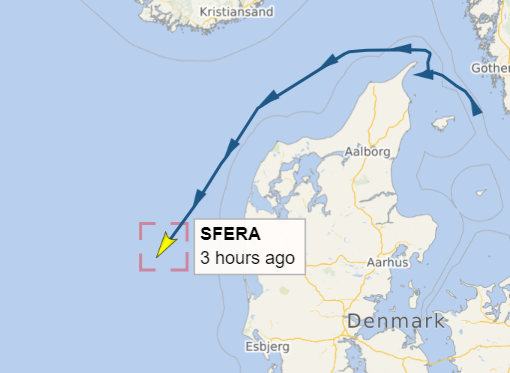 Shipping Co. v. Farenco Shipping PTE, Ltd., which produced the best mootness argument of all time — a case about the seizure of a marine vessel became moot once the ship had sailed.
Shipping Co. v. Farenco Shipping PTE, Ltd., which produced the best mootness argument of all time — a case about the seizure of a marine vessel became moot once the ship had sailed.
The M/V OCEAN SHANGHAI, recently renamed as SFERA, has avoided the Fifth Circuit’s waters ever since; as of September 19, 2023, it had just entered the North Sea to the west of Denmark.
After an accident involving a failed tire, the remains of the tire were transported to the defendant’s trucking facility, after which they vanished. The Fifth Circuit held that the tire’s disappearance created a jury question about bad faith based on “the following circumstantial evidence:”
Prime destroyed the most crucial piece of evidence just weeks after learning that its tire may have caused a car accident; Prime cannot explain why it transported the tire to its Salt Lake facility or what happened to the tire following the accident; and Prime cannot demonstrate it had any formal preservation or retention policy for its equipment, like tires, that may have caused an injury. These circumstances create a fact question on bad faith, necessitating a jury determination.
Van Winkle v. Rogers, No. 22-30638 (Sept. 15, 2023).
A recent Fifth Circuit panel produced three opinions on an organizational-standing issue in Louisiana Fair Housing Action Center, Inc. v. Azalea Garden Props., LLC.
Top-notch legal-writing expert Ross Guberman wrote an insightful LinkedIn post about Judge Elrod’s distinction of authority in her dissenting opinion – I recommend you give it a read!
 The Chitimacha Indian tribe owns a casino. The casino’s former CFO sued the tribe for allegedly violating his civil rights by reporting him to law enforcement. He sued in state court, the defendants removed, and the district judge both denied the CFO’s motion to remand and dismissed the case with prejudice, citing the tribe’s sovereign immunity.
The Chitimacha Indian tribe owns a casino. The casino’s former CFO sued the tribe for allegedly violating his civil rights by reporting him to law enforcement. He sued in state court, the defendants removed, and the district judge both denied the CFO’s motion to remand and dismissed the case with prejudice, citing the tribe’s sovereign immunity.
The Fifth Circuit reversed, noting that the controlling statute (28 USC § 1447(c)) requires that a removed case “shall be remanded” if the court lacks subject matter jurisdiction. Because that language “admits of no exceptions,” it “requires remand even when the district court thinks it futile” (here, because the district court concluded that the same immunity problems would also bar state-court litigation against the tribe.
Further, the dismissal should not have been with prejudice–“it’s precisely because the jurisdiction-less court cannot reach the merits that it also cannot issue with-prejudice dismissals that would carry res judicata effect.” Montie Spivey v. Chitimacha Tribe of Louisiana, No. 22-30436 (Aug. 16, 2023).
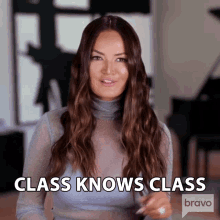 In re Jefferson Parish involved a mandamus petition about the interplay between a putative class action (“Ictech-Bendeck“) with a 500-plaintiff mass action (“Addison“). The Fifth Circuit denied relief, as the opinion’s introduction deftly summarizes:
In re Jefferson Parish involved a mandamus petition about the interplay between a putative class action (“Ictech-Bendeck“) with a 500-plaintiff mass action (“Addison“). The Fifth Circuit denied relief, as the opinion’s introduction deftly summarizes:
… This mandamus proceeding arose because the defendants object to the district court’s scheduling of a small group of Addison plaintiffs for trial before Ictech-Bendeck will finish its class certification process, which the defendants have repeatedly delayed.
Petitioners ask us to stop the Addison trial and to order the district court to rule on class certification in Ictech-Bendeck before allowing any further proceedings in Addison. Petitioners raise the novel theory that under Rule 23 of the Federal Rules of Civil Procedure, the filing of a putative class action bars any possible class members from reaching the merits of their own, separate suits until class certification proceedings conclude in the putative class action. …
… Rule 23 establishes a mechanism for plaintiffs to pursue their claims as a class. It does not cause the filing of a putative class action to universally estop all separate but related actions from proceeding to the merits until the class-certification process concludes in the putative class action, after years of motions practice.
No. 23-30243 (Aug. 24, 2023).
In Louisiana Fair Housing Action Center, Inc. v. Azalea Garden Properties, LLC, “a nonprofit entity with a mission to eradicate housing discrimination in Louisiana” sued when a “tester” used by that entity experienced allegedly unlawful behavior at an apartment complex.
A Fifth Circuit panel (notably, the same panel that found standing in the high-profile mifepristone case) found that the entity lacked standing, but offered three different analyses of that issue:
- The majority opinion found no cognizable injury had been pleaded, remanding with instructions to dismiss without prejudice;
- A concurrence offered additional thoughts about how cognizable injury could be established on remand (either with new allegations, or by adding individual plaintiffs);
- A dissent saw the standing issue as controlled by a 1982 Supreme Court case about a similarly situated housing nonprofit.
No 22-30609 (Sept. 14, 2023).
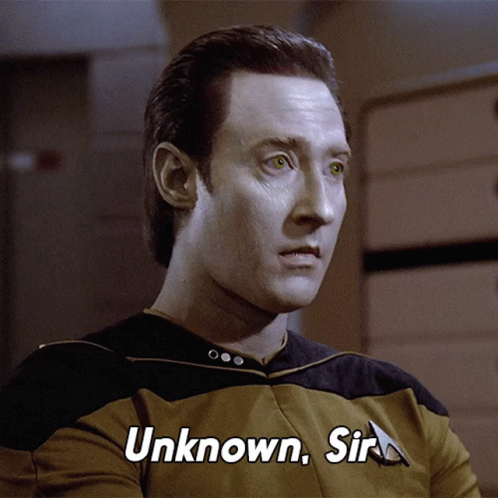 A frustrated district court imposed sanctions in Ben E. Keith Co. v. Dining Alliance, Inc., citing the persistent failure of defendant Dining Alliance LLC to identify its members (and thus, allow resolution of the question whether the federal courts had diversity jurisdiction). The sanction included a dismissal with prejudice.
A frustrated district court imposed sanctions in Ben E. Keith Co. v. Dining Alliance, Inc., citing the persistent failure of defendant Dining Alliance LLC to identify its members (and thus, allow resolution of the question whether the federal courts had diversity jurisdiction). The sanction included a dismissal with prejudice.
The defendant protested that the district court lacked jurisdiction to do so (an awkward position, given that the entire problem arose from the defendant’s difficulty with jurisdictional infomation). The Fifth Circuit disagreed:
“A case-dispositive sanction does not require the district court to assess a claim’s merits, weigh the evidence proffered in support of or against them claim, or decide an issue that bears on the claim’s legal substance. It is a purely procedural order.”
The Court observed that Rule 41(b) refers to “the merits,” but noted Supreme Court authority holding that “the phrase on the merits ‘has come to be applied to some judgments … that do not pass upon the substantive merits of a claim.” No. 22-10340 (Sept. 12, 2023).
 CAFA allows remand of a case, otherwise removable under that statute, if the plaintiffs establish that the “local controversy” exception applies. Am element of that exception is that the plaintiffs seek “significant relief” from an in-state defendant.
CAFA allows remand of a case, otherwise removable under that statute, if the plaintiffs establish that the “local controversy” exception applies. Am element of that exception is that the plaintiffs seek “significant relief” from an in-state defendant.
A recurring problem in remedies law is whether “irreparable injury” is shown (and injunctive relief thus justified) when a defendant is insolvent. State of Louisiana v. i3 Verticals, Inc. presents a simlar problem because the in-state party was “a defunct shell with no assets, facilities, business, or employees ….”
The majority held: “The interpretation of the ‘significant relief’ prong is an issue of first impression in our circuit. We begin where we always do—with the text. And all the text requires is that ‘significant relief is sought’ from an in-state defendant. It says nothing about the in-state defendant’s ability to pay.” (citation omitted). The dissent saw that holding as inconsistent with CAFA’s discouragement of artful pleading. No. 22-30553 (Sept. 1, 2023).
 In Self v. BPX Operating Co., the Fifth Circuit confronted a claimed conflict between Louisiana’s forced-pooling laws and a civilian doctrine called “negotiorum gestio,” andi certified (over a dissent) the question to the Louisiana Supreme Court. I was unfamiliar with the doctrine and the case offers this summary for the uninformed attorney from a common-law tradition:
In Self v. BPX Operating Co., the Fifth Circuit confronted a claimed conflict between Louisiana’s forced-pooling laws and a civilian doctrine called “negotiorum gestio,” andi certified (over a dissent) the question to the Louisiana Supreme Court. I was unfamiliar with the doctrine and the case offers this summary for the uninformed attorney from a common-law tradition:
On the other hand, negotiorum gestio—or management of affairs—“is a typically civilian institution that derives from the Romanist tradition and is found in all civil codes.” La. Civ. Code art. 2292 cmt. (a). Negotiorum gestio applies when a person, the manager or gestor, acts 1) without authority, 2) to protect the interests of another, and 3) in the reasonable belief that the owner would approve of the action if made aware of the circumstances. La. Civ. Code art. 2292. The gestor must have “undertake[n] the management with the ‘benefit’ of the owner in mind” and not have “act[ed] in [its] own interest or contrary to the actual or presumed intention of the owner.” Id. cmts. (c)-(d) … Only if all these requirements are met does a person qualify as a gestor such that “[t]he owner whose affair has been managed is bound to fulfill the obligations that the manager has undertaken as a prudent administrator and to reimburse the manager for all necessary and useful expenses.” La. Civ. Code art. 2297. Negotiorum gestio is “rooted in altruism,” and its purpose is to “encourage people to assist friends and neighbors in need.”
No. 22-30243 (Sept. 8, 2023).
Rex Real Estate, a commercial real estate broker, sued Rex Exchange, a facilitator of online home sales. The defendant won judgment as a matter of law at trial, after which the Fifth Circuit affirmed in part and reversed in part. In its opinion, the Court sought to “unconfuse” its precedent about confusion in trademark-infringement cases, reviewing the holdings of its cases and applying the resulting framework to that aspect of the case:
Plaintiff’s anecdotal proof of confusion does not involve swayed customer purchases or initial interest confusion that can result in swayed business. It also does not involve “potential customer[s] considering whether to transact business with one or the other of the parties.” But it has presented instances of potential customers of each respective company mistakenly contacting the other. . These instances are relevant, but their weight is lessened by Plaintiff’s and Defendant’s high volume of business and extensive advertising. Nevertheless, because Plaintiff has presented some relevant evidence of actual confusion, a reasonable jury could conclude that this digit weighs in its favor.
Rex Real Estate I, LP v. Rex Real Estate Exchange, Inc., No. 22-50405 (Sept. 6, 2023) (citations omitted).
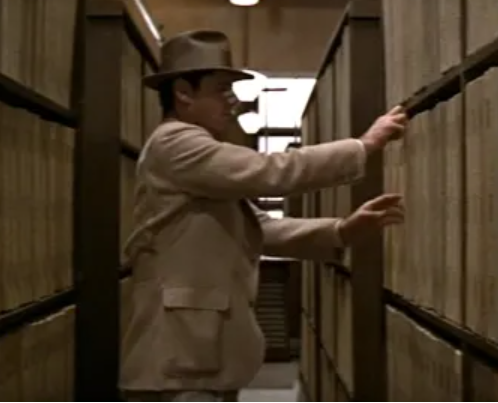 After the matter ended, a health care economist sought to intervene in a qui tam case about medical billing, wanting to challenge a protective order that covered documents in which he had professional interest.
After the matter ended, a health care economist sought to intervene in a qui tam case about medical billing, wanting to challenge a protective order that covered documents in which he had professional interest.
The Fifth Circuit did not rule that he had the right to intervene, but did reverse the district court’s denial of his petition, finding that it had erred on points of law in evaluating his standing, his “claim or defense” that justified intervention, and the timeliness of his petition. U.S. ex rel Hernandez v. Team Finance LLC, No. 22-40707 (Aug. 31, 2023).
The Fifth Circuit reversed the trial court’s dismissal of a case under Fed. R. Civ. P. 19, for problems with party joinder, in PHH Mortgage Co. v. Old Republic Nat’l Title Ins. Co.
The key distinction that led to reversal was this: “The [Texas] trespass-to-try-title statute applies only when ‘the claimant is seeking to establish or obtain the claimant’s ownership or possessory right in the land at issue,'” while “a breach of contract claim against a title insurance company ‘invokes the insurer’s obligation to pay the claim or defend title to the property, and this claim is separate and distinct from the claim of ownership.'” No. 22-50930 (citations omitted).
In Whirlpool Corp. v. Shenzhen Sanlida Elec. Tech. Co., the plaintiff obtained a preliminary injunction against sale of a kitchen mixer that allegedly infringed on the “KitchenAid” design. Shenzen, a China-based manufacturer, objected to the issuance of an injunction before service of process (although its counsel appeared at the preliminary-injunction hearing and argued about the merits, and Shenzen did not dispute that jurisdiction would exist upon completion of service).
The Fifth Circuit rejected this argument, noting:
- Text. “Federal Rule of Civil Procedure 65[(a)(1)] states that a court ‘may issue a preliminary injunction only on notice to the adverse party..”
- Circuit precedent. “[A]s we stated in Corrigan Dispatch Co. v. Casa Guzman, S.A., ‘Rule 65(a) does not require service of process,’ but rather requires ‘notice to the adverse party.’ 569 F.2d 300, 302 (5th Cir. 1978).
- Practicality. “[B]ecause ‘formal service of process under the Hague Convention . . . can take months,’ adopting Shenzhen’s position could result in the ‘unfortunate effect of immunizing most foreign defendants from needed emergency injunctive relief.'” (citation omitted).
No. 22-40376 (Aug. 25, 2023).
 Princeton Excess & Surplus Lines Ins. Co. v. A.H.D. Houston, Inc. addresses – coverage – in strip clubs, holding that the clubs are – exposed.
Princeton Excess & Surplus Lines Ins. Co. v. A.H.D. Houston, Inc. addresses – coverage – in strip clubs, holding that the clubs are – exposed.
As with Jan Tiffany’s burlesque act of the 1950s (right), matters “largely turn[ed] on whether the … coverage should be viewed as one ‘umbrella’ of coverage or carved into subcategories … .”
The specific issue involved insurance coverage for damages arising from unauthorized use of models’ photos, and turned on construction of the policies’ exclusions to “advertising injury” coverage. A dissent would certify the issue to the Texas Supreme Court. No. 22-20473 (Aug. 25, 20230.
 After going to see Oppenheimer, you can read State of Texas v. Nuclear Regulatory Commission.
After going to see Oppenheimer, you can read State of Texas v. Nuclear Regulatory Commission.
The failure of the Yucca Mountain repository for spent nuclear fuel led the NRC to explore “a consent-based approach for siting nuclar waste storage facilities.” With encouragment from the governors of Texas and New Mexico, it authorized such a facility in Andrews County–a remote location at the heart of the Permian Basin oil fields. Texas changed its mind, enacting a statute that made the storage of high-level waste illegal in the state.’
This lawsuit resulted. The Fifth Circuit found that the plaintitfs (Texas, a state environmental agency, an oil producer, and an oil-industry group) had constitutional and statutory standing to challenge the NRC’s license, and from there, concluded that the NRC had overstepped its statutory authority. No. 21-60743 (Aug. 25, 2023).
I had an op-ed in today’s Dallas Morning News about recent friction between the Supreme Court and Fifth Circuit on standing in some high-profile constitutional/administrative-law cases.
In last week’s Texas Lawbook, I reported on an experiment with an AI competitor of ChatGPT called Claude. It’s not ready to be a virtual law clerk yet, but its surprisingly powerful.
The Satanic Temple–an enthusiastic, if not particularly coherent, litigant–appealed the denial of a preliminary injunction that it sought as to several Texas abortion laws. The Fifth Circuit thoroughly reviewed the principles that govern when a preliminary-injunction appeal can become moot with time, and concluded that they applied here to require dismissal of this particular appeal:
Plaintiffs have already appealed the dismissal of their claims; that appeal is docketed as No. 23-20329. To the extent that plaintiffs want to litigate further any issues that were raised in the preliminary injunction motion and remain live, they may do so in their appeal from the district court’s final judgment.
No. 22-20459 (Aug. 18, 2023) (footnote omitted).
 The quesions in Louisiana Newpack Shrimp Co. v. Longhai Indigo Seafood Partners, Inc. was whether Louisiana Newpack (an importer and seller of seafood) owed $995,188.03 to Longhai (a crabmeat exporter) for three orders of crabmeat.
The quesions in Louisiana Newpack Shrimp Co. v. Longhai Indigo Seafood Partners, Inc. was whether Louisiana Newpack (an importer and seller of seafood) owed $995,188.03 to Longhai (a crabmeat exporter) for three orders of crabmeat.
A properly-instructed jury found that the parties did not have a contract, but did have an enforceable “open account” as recognized by Louisiana law. The district court entered judgent for Longhai, but then amended the judgment under Fed. R. Civ. P. 59 to award it nothing.
The Fifth Circuit reversed, noting that Rule 59(e) requires the movant to “clearly establish … a manifest error of law or fact.’ Noting “conflicting case law” in Louisiana on the question whether an open-account claim requires the existence of a contract, the Fifth Circuit held “that it was not a manifest error of law to allow Lonhai to recover on its open account claim.” No. 22-30653 (Aug. 17, 2023, unpublished) (emphasis in original).
A few years ago, I examined en banc opinons in the Dallas Court of Appeals, and concluded that they tended to be either: (1) “error correction” of panel opinions that had become out of step with the rest of the state and/or the supreme court; (2) “successful failure” cases where en banc review became moot when the supreme court took the case; and (3) “Goldilocks” cases that involve significant issues, but not of such importance that supreme-court review is guaranteed.
The Fifth Circuit’s en banc cases fit that general taxonomy (Brackeen and the FHFA case qualifying as “successful failures”), with the recent opinion in Hamilton v. Dallas County an example of error-correction. The majority opinion summarized:
[T]he panel concluded that it was “bound by this circuit’s precedent, which requires a Title VII plaintiff” to have “suffered some adverse employment action by the employer” and which says that “adverse employment actions include only ultimate employment decisions such as hiring, granting leave, discharging, promoting, or compensating.” Because “the denial of weekends off is not an ultimate employment decision,” the panel affirmed the district court’s dismissal. The panel concluded by urging the full court to “reexamine our ultimate-employment-decision requirement” in light of our deviation from Title VII’s plain text. We granted rehearing en banc to do so.
No. 21-10133 (Aug. 18, 2023) (en banc) (footnotes omitted).
The Fifth Circuit’s mifepristone opinion has been released (although the trial court’s order remains stayed by an earlier ruling from the U.S. Supreme Court) – of particular interest is the panel majority deciding not to address the issue presented about the Comstock Act:
I discuss the importance of this point in a recent article in Slate, as does Professor Mary Ziegler in another Slate piece.
 A boat sank during a hurricane, leading to an insurance-coverage dispute about whether the boat was in not located in the place warranted by the insured.
A boat sank during a hurricane, leading to an insurance-coverage dispute about whether the boat was in not located in the place warranted by the insured.
The insurance policy at issue had two “incorporation” clauses. “The first provides that ‘[t]his insuring agreement incorporates in full [Gray Group’s] application for insurance[.]’ The second states that ‘[t]his is a legally binding insurance document between [Gray Group] and [Great Lakes], incorporating in full the application form signed by [Gray Group].'”
The Fifth Circuit agreed with the district court that these clauses were ambiguous as to what specific documents were referenced. Unfortunately for the plaintiff, though, the extrinsic evidence showed that the parties intended “application for insurance” to include a document about the boat’s location–and thus, made a warranty that the boat would be in New Orleans during hurricane season. Great Lakes Ins. v. Gray Group Investments, LLC, No. 22-30041 (Aug. 1, 2023).
 The Financial Times sought access to a sealed sentencing record in a high-profile criminal case about international bribery. In United States v. Ahsani, No. 23-20097, the Fifth Circuit held: “[W]e acknowledge numerous procedural irregularities in the district court, we ultimately affirm its denial of the intervenors’ motion to unseal.”
The Financial Times sought access to a sealed sentencing record in a high-profile criminal case about international bribery. In United States v. Ahsani, No. 23-20097, the Fifth Circuit held: “[W]e acknowledge numerous procedural irregularities in the district court, we ultimately affirm its denial of the intervenors’ motion to unseal.”
Two issues in particular were presented.
- Notice and an opportunity to be heard before sealing. The Fifth Circuit found material errors by the district court in how it handled sealing of the sentencing proceeding. Unfortunately for the Times, those errors did not require unsealing of the hearing as a remedy, and other aspects of the record justified its continued sealing.
- Legal error. After reviewing the requirements of the common-law and First Amendment rights of public access to court records, the Court held: “[T]he order denying intervenors’ motion to unseal included sparse detail when read in isolation, but it did contain specific, substantive findings sufficient to permit our review, given the facts. Although its articulation of the governing legal principles could have been more detailed, the court applied the proper legal standards. … The interests it identified are compelling and implicated by the sealed information. Those interests may abate in the future, but for now, they remain salient enough to justify the sealing of the documents at issue, including the transcript of the sealed sentencing proceeding. Finally, the court properly considered the alternative of redaction and permissibly found that it was inappropriate.”
Biology teaches that form follows function; similarly, Crown Castle Fiber v. City of Pasadena teaches that “aesthetic design standards incorporating spacing and undergrounding requirements” cannot flout federal telecommunications law, anymore than a tax on federally-protected commercial activity could.
Specificaly, the Fifth Circuit held that the Federal Telecommunications Act preempted local regulations that effectively prohibited the installation of small cell nodes needed for 5G networks. As for standing, “[e]ven though § 253 does not confer a private right [of action], a plaintiff is not prevented from gaining equitable relief on preemption grounds.” And on the merits, the “spacing and undergrounding” regulations were not reasonable or competitively neutral under the FTA’s safe harbor provision. No. 22-20454 (Aug. 4, 2023).
Chavez v. Plan Benefit Services, returning to the Fifth Circuit, addressed two class-action issues.
- Standing. The Court evaluated two competing approaches to class standing. One requires named plaintiffs to establish their own individual standing, then separately analyzes class certification under Rule 23. The second examines named plaintiffs’ standing to raise claims of absent class members before applying Rule 23. As in Angell v. GEICO, 67 F.4th 727 (5th Cir. 2023), the Court avoided choice between the two by finding them both satisfied on this record.
- Certification. The district court found the overarching question of whether the defendants owed fiduciary duties by managing the benefit trusts was both significant and dispositive of the class’s claims. The Court agreed that this issue, along with the question whether any fiduciary duty was breached, outweighed individualized inquiries into each plan’s fees or structure.
No. 22-50368 (April 11, 2023).
I’m on a summer vacation road trip, blog posts will resume upon my return next week! I hope you are having an enjoyable summer with quality air conditioning. I also recommend that you see “Oppenheimer” — with or without seeing “Barbie” — as it offers some powerful insights about civil procedure run amok in Oppenheimer’s security-clearance hearings.
After a well-publicized debacle in New York involving “research” in which ChatGPT invented nonexistent cases, the phenomenon of “hallucinatory” generative AI has arrived in Texas. The Waco Court of Appeals recently faulted a lawyer for providing a brief with three nonexistent cases (and, like the New York counsel, not responding when the problem was pointed out by the appellee). While there is nothing wrong with using ChatGPT to help with legal analysis and writing, uncritical acceptance of purported caselaw found “on the Internet” is always risky.
The Fifth Circuit found that fact issues about the plaintiff’s discovery of his potential claims precluded summary judgment in Bruno v. Biomet, Inc.:
On the one hand, a jury could reasonably determine that contra non valentem tolled the prescription period until September 2019—given Bruno’s consultations with his doctor, a medical professional. But on the other hand, a jury could just as reasonably determine that contra non valentem tolled prescription until some point in time before September 2019. It is unclear whether Bruno stopped suffering complications from infections after the removal, such that his recovery after the device’s removal would have put him on notice of any fault of Biomet’s before the letter was received.
No. 22-30405 (July 21, 2023).
Hogan v. Southern Methodist University presented, inter alia, the question whether Texas’s Pandemic Liability Protection Act – enacted in 2021 – bars a student’s complaint about SMU moving to an all-virtual learning environment in 2020.
The student argued that this backward-looking application of the law violated the Texas Constitution’s prohibition of “retroactive” laws — a unique feature of that instrument that, like the “open courts” provision, has no counterpart in the U.S. Constitution. SMU, supported by the Texas AG, argued otherwise.
The Fifth Circuit certified this issue to the Texas Supreme Court, noting its importance and the dearth of caselaw on the point to date. No. 20-10433 (July 20, 2023).
The plaintiffs in Clarke v. Commodity Futures Trading Commission sought a preliminary injunction, alleging that their business (the “Predictit Market,” where users can trade on the potential outcomes of future events) would fail after the CFTC changed position on an earlier no-action letter.
Two judges agreed that a preliminary injunction was required as a matter of law–but agreed on little else, as the concurrence noted: “Plaintiffs’ theory of final agency action admittedly conflicts with the precedents of our sister circuits. To my knowledge, no circuit has held that a no-action letter or its withdrawal is sufficient to constitute ‘final agency action’ under the Administrative Procedure Act. And some have held the
opposite.”
A dissent was so unpersuaded on the issue of final agency action that it would not have required a preliminary injunction. No. 22-51124 (July 21, 2023).
Missouri v. Biden, No. 23-30445, presents a high-profile dispute about coordination betwen the federal government and social media platforms to address misinformation. A district court in Louisiana issued an injunction against such coordination and the federal government appealed. That appeal, as do many significant constitutional disputes, implicated the division of responsibility between an initial “administrative stay,” a later “stay pending appeal,” and the resolution of the merits of the appeal. For this case, a Fifth Circuit panel resolved that matter with this order:
The arbitration award in Amberson v. McAllen said:
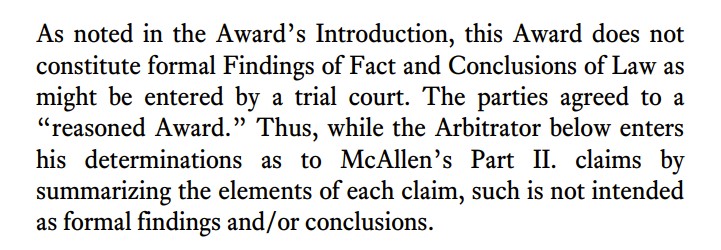 along with some additional explanation of the difference between a “reasoned award” and “Findings of Fact and Conclusions of Law.” The Fifth Circuit rejected the argument that the arbitrator’s drawing of this distinction kept the award from having collateral-estoppel effect. No. 22-50788 (July 12, 2023).
along with some additional explanation of the difference between a “reasoned award” and “Findings of Fact and Conclusions of Law.” The Fifth Circuit rejected the argument that the arbitrator’s drawing of this distinction kept the award from having collateral-estoppel effect. No. 22-50788 (July 12, 2023).
A&R Engineering sued the Texas Attorney General, complaining about a state law forbidding boycotts of Israel by municipal contractors, and arguing that his enforcement of the law made it lose a valuable contract with the City of Houston. The Fifth Circuit held that A&R lacked standing, concluding:
- Injury in fact. “The lost opportunity is connected to a financial loss. And the loss isn’t speculative. A&R retained records of how much it made in previous contracts ….”
- Traceablity. “The economic harm and lost opportunity are traceable to the City. The City after all is the party responsible for contracting with A&R. But it’s unclear how A&R can trace its economic injury to the Attorney General. Traceability is particularly difficult to show where the proffered chain of causation turns on the government’s speculative future decisions regarding whether and to what extent it will bring enforcement actions in hypothetical cases.”
- Redessability. “[T]he City’s conduct severs any link between A&R’s economic injury and the Attorney General. The City told the district court it would follow state law and include the provision. But the City never attributed its actions to any enforcement or threatened enforcement by the Attorney General. A&R’s injury depended on the ‘unfettered,’ ‘independent’ choices of the City, ‘whose exercise of broad and legitimate discretion [we] cannot presume either to control or to predict,’ so the injury isn’t traceable to the Attorney General.”
A&R Engineering v. Scott, No. 22-20047 (July 10, 2023) (all citations omitted). (The Court’s analysis of redressability echoes Justice Gorsuch’s recent analysis of a similar issue in his concurrence for United States v. Texas, No. 22-58 (U.S. June 23, 2023)).
Loy v. Rehab Synergies, LLC allowed a dispute about overtime pay to proceed as a collective action, when the 22 plaintiffs were subject to a similar program that required 90% productivity,” for which “a therapist needed to record 54 minutes of billable time for every hour on-the-clock, leaving the equivalent of just six minutes per hour to complete non-billable tasks.” Given that shared foundation, the Fifth Circuit found no abuse of discretion by the district court in its assessment of the relevant factors. No. 22-40411 (June 21, 2023).
While the Supreme Court issued several opinions in Mallory v. Norfolk Southern Railway, No. 21–1168 (U.S. June 27, 2023), the part joined by a five-justice majority is straightforward. A condition for registering to do business in Pennsylvania is consent to be sued there, and the Court held that condition did not raise a due-process concern, reaffirming the validity of much older precedent on the point. Justice Jackson’s concurrence helpfully distinguishes the concepts of waiver and “minimum contacts.” No. 21-1168 (U.S. June 27, 2023).
 Jeanty was arrested, and then released, after Big Bubba’s Bail Bonds posted a surety bond on his behalf. He was then re-arrested after Big Bubba’s complained to the trial court that Jeanty had failed to maintain contact as required by their contract.
Jeanty was arrested, and then released, after Big Bubba’s Bail Bonds posted a surety bond on his behalf. He was then re-arrested after Big Bubba’s complained to the trial court that Jeanty had failed to maintain contact as required by their contract.
Jeanty sued for false imprisonment and Big Bubba’s obtained a Rule 12 dismissal.
Providing a straightforward example of an Erie analsis, the Fifth Circuit reversed. It began with the precedent of the Texas Court of Criminal Appeals about the relevant statute, continued by reviewing more recent intermediate-court opinions and finding they were consistent with the earlier precedent, and giving little weight to an advisory opinion from the Texas Attorney General.
Jeanty v. Big Bubba’s Bail Bonds, No. 22-40241 (June 29, 2023).
Just a few days before the Supreme Court’s opinion in 303 Creatiive, a Fifth Circuit panel reached a similar result in a related setting (here, the hiring and workpace practices of a church and a “Christian business”):
[W]e decide that RFRA requires that Braidwood, on an individual level, be exempted from Title VII because compliance with Title VII post-Bostock would substantially burden its ability to operate per its religious beliefs about homosexual and transgender conduct. Moreover, the EEOC wholly fails to carry its burden to show that it has a compelling interest in refusing Braidwood an exemption, even post-Bostock.
Braidwood Management v. EEOC, No. 22-10145 (June 20, 2023).
During a tour of a “24 Hour Fitness” facility, Mr. Sauls fell into an empty hot tub and suffered severe injuries. He and his wife won a verdict for over $1.5 million in damages. But the district court granted judgment as a matter of law under Fed. R. Civ. P. 50(b) for the defendants, concluding that the hot tub was an “open and obvious” hazard.
The Fifth Circuit reversed, noting, inter alia: “Mr. Sauls is a 79-year-old man with a hearing impediment. The totality of the particular circumstances Mr. Sauls faced included no prior knowledge of the facility or the location of the hot tub, no warning as to the fact that the hot tub would be empty and located approximately five feet away from the door, and his attention was simultaneously diverted away from the hot tub by 24 Hour Fitness’ tour guide.” Sauls v. 24 Hour Fitness, No. 22-10182 (July 7, 2023) (footnotes omitted).
In May 2022, a Fifth Circuit panel held in Jarkesy v. SEC that the Seventh Amendment’s right to civil jury trial extends to an SEC enforcement action. The full Fifth Circuit later denied en banc review of the matter.
Critics of the administrative state celebrated the ruling as an important limit on agency power; others questioned whether “originalism” was fairly applied to an agency and a set of statutes that did not exist in 1792.
On June 30 of this year, the Supreme Court granted review of Jarkesy, which will be a fascinating addition to the next term of that court:
The question in Allstate Fire & Casualty Co. v. Love was whether “the amount of an insurancy policy or the underlying claim determines the amount in controversy to establish diversity jurisdiction ….” The Court addressed, and clarified, earlier Circuit precedent on that generaly topic, and went on to hold that in this case: “where the claim under the policy exceeds the value of the policy limit, courts … should ask whether there is a legal possibility that the insurer could be subject to liability in excess of the policy limit” (a Stowers claim having been made in this dispute). No. 22-20405 (June 22, 2023).
 In United States v. Texas, last Friday, the Supreme Court reversed a Fifth Circuit judgment because Texas had no standing to bring a particular claim about immigration policy. The case echoes the proceedings in California v. Texas, a 2021 matter in which the Supreme Court also reversed a Fifth Circuit judgment for lack of standing — in that case, an issue about the enforceability of the Affordable Care Act.
In United States v. Texas, last Friday, the Supreme Court reversed a Fifth Circuit judgment because Texas had no standing to bring a particular claim about immigration policy. The case echoes the proceedings in California v. Texas, a 2021 matter in which the Supreme Court also reversed a Fifth Circuit judgment for lack of standing — in that case, an issue about the enforceability of the Affordable Care Act.
As Texas’s Attorney General, Greg Abbott famously quipped: “I go into the office in the morning. I sue Barack Obama, and then I go home.” In a recent interview, I suggest that these opinions are a yellow light for that approach to public-law litigation; Mark Stern makes a similar point in more colorful language for Slate. Time will tell whether that traffic signal is heeded.
Two New York lawyers filed a brief with “fake law” in it, having accepted at face value a “hallucination” by ChatGPT abouot several cases that did not in fact exist. The district court has now sanctioned them. The opinion is of broad general interest, given the great influence of generative AI in its few short months of widespread public availability. And it’s also of broad general interest in avoiding sanctions–the lawyers had at least one good chance, and maybe even two, of coming clean about their error, but instead “doubled down” with purported screenshots of the nonexistent cases.
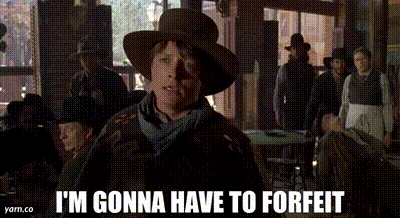 In a recent analysis of a sanctions order, the Fifth Circuit provided an instructive example of an argument that withstood a forfeiture objection:
In a recent analysis of a sanctions order, the Fifth Circuit provided an instructive example of an argument that withstood a forfeiture objection:
“Ticket argues that CEATS forfeited the bad-faith argument by failing to assert it in the district court. While it is true that we tend not to entertain arguments that a party asserts for the first time on appeal, ‘an argument is not [forfeit]ed on appeal if the argument on the issue before the district court was sufficient to permit the district court to rule on it.’ Here, CEATS told the district court that a discovery violation ‘must be committed willfully or in bad faith for the court to award the severest remedies available under Rule 37(b).’ CEATS also argued that it did not violate the Protective Order willfully or in bad faith, because the ‘communications … were clearly inadvertent.’ That argument was enough to put the district court on notice that CEATS opposed any definition of ‘bad faith’ that includes inadvertent conduct.”
CEATS, Inc. v. TicketNetwork, Inc., No. 21-40705 (June 19, 2023) (citations and footnotes omitted). (This analysis has an interesting analog in the recent case of United Natural Foods, Inc. v. NLRB, where the majority and dissent disputed whether a particular issue was raised for purposes of the “party presentation” principle).
 TicketNetwork, an online ticket marketplace, sued CEATS, a non-practicing IP company, for declarations that Ticket’s business did not violate CEATS’s patents or a related license agreement.
TicketNetwork, an online ticket marketplace, sued CEATS, a non-practicing IP company, for declarations that Ticket’s business did not violate CEATS’s patents or a related license agreement.
CEATS won at trial, and while its claim for attorneys fees was pending, obtained an order allowing it to see a list of Ticket’s website affiliates. That order restricted access to certain designated in-house representatives.
CEATS’s CEO, who was not supposed to see the list, then sent Ticket’s CEO a settlement demand–attaching the list. After significant proceedings, the district court awarded (1) a 30-month injunction against any dealings with the companies on the list and (2) $500,000 against CEATS, its CEO, and two litigation consultants.
The Fifth Circuit, inter alia:
- Vacated the award against the individuals: “The Individuals did not receive notice that monetary sanctions were pending against them, and they did not receive a pre-deprivation opportunity to defend themselves at a hearing. By the time the district court heard their response, it had already decided against them. That was an abuse of discretion.”
- Vacated the injunction: “We also agree with CEATS that the district court did not make the bad-faith finding that is a prerequisite to litigation-ending sanctions under [Fed. R. Civ. P.] 37(b). Instead, the district court found that CEATS acted recklessly, and then it equated recklessness with bad faith. We have rejected that equivalence.”
- Vacated the fee award: “[T]here was a significant disparity between the rates that the first court approved when it awarded attorney fees to CEATS (at an earlier stage of litigation) versus the rates that it approved when it awarded attorney fees to Ticket (as part of the sanction against CEATS).”
CEATS, Inc. v. TicketNetwork, Inc., No. 21-40705 (June 19, 2023). The Court aptly summarized: “We AFFIRM in (small) part, VACATE in (large) part, and REMAND for further proceedings.”
In Norsworthy v. Houston ISD, the Fifth Circuit acknowledged a recent amendment to Fed. R. App. P. 3(c) about the requirements for a notice of appeal.
In this case, the appellant’s notice of appeal named its Rule 59 motion to alter amend, not the final judgment itself. Under the earlier rule, that language could have given rise to a waiver issue. But a 2021 amendment says that “a notice of appeal encompasses the final judgment,” so long as the notice designates an order named in Fed. R. App. P. 4(a)(4)(A), which lists the standard post-trial motions. No. 22-20586 (June 13, 2023).
The Fifth Circuit was unwilling to extend a bankruptcy court’s “core” or “related-to” jurisdiction to reach a settlement agreement when:
“[T]he settlements contradict the plan. Whereas the plan discharged debts unless a timely proof of claim was filed, the settlements require Chesapeake to pay the non-filing lessors a portion of their royalty claims far higher than other creditors’ timely filed general unsecured claims. Whereas the plan assumed that Chesapeake’s leases would ride through bankruptcy unaffected, the settlement requires a mandatory alteration in the terms of thousands of Pennsylvania leases. Far from merely enforcing the plan, the settlement accomplished a self-described ‘fundamental reset of Chesapeake’s relationship with its Pennsylvania lessors.'”
No. 21-20232 (June 8, 2023).
The high-profile police-shooting case of Edwards v. City of Balch Springs ended with an affirmance of dismissal on qualified-immunity grounds. Among other holdings, the opinion succinctly captures the challenge in scrutinizing official use-of-force policies in this setting:
“[A] written policy is not facially unconstitutional just because it leaves out ‘detailed guidance that might have averted a constitutional violation.’ If it were otherwise, a use-of-force policy would be facially constitutional only if it recited every jot and tittle of the applicable caselaw. Surmounting that logistical hurdle would produce a behemoth free of any practical use—less a policy than a treatise.”
No. 22-10269 (June 9, 2023). (The phrase “jot and tittle,” btw, has a Biblical origin related to pen strokes used to write Hebrew.)
Together with the able Raffi Melkonian from Houston, I presented the “Fifth Circuit Update” at the University of Texas appellate course last week; here is a copy of our PowerPoint.
An alleged requirements contract for a supply of auto parts did not satisfy the statute of frauds, when it did not say in writing that it was a requirements contract or otherwise establish a quantity, when:
- The email in question referenced a $10,000 credit limit (“Our credit manager is on the conservative side. He has given you a credit limit of $10K until he sees a credit history pattern. Your terms are net 30 days.t had a $10,000.”) The Fifth Circuit held: “The $10,000 figure is a credit limit; it is not a ‘specif[ication of] a quantity’ of goods that Wesden would buy from ITW.”
- The email attached a price list. The Court held: “Wesden contends that the attachment satisfies the quantity-term requirement because it shows that the parties agreed to an ‘”‘unlimited” quantity in writing, which is very specific.’ But this is not so. The attachment is an empty order form listing the per-unit price for each Auto Magic product. There is no quantity or exclusivity term in the price list.”
Wesdem LLC v. Illinois Tool Works, Inc., No. 22-50769 (June 9, 2023).
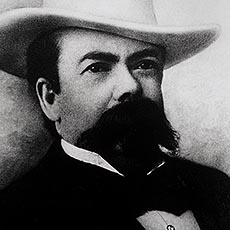 Jack Daniel’s v. VIP presented the question whether a dog toy, with the general appearance of a Jack Daniel’s bottle, infringed the Jack Daniel’s trademarks. The matter reached the Supreme Court because of a dispute over whether to (a) apply the customary likelihood-of-confusion factors under the Lanham Act, or (b) before applying those factors, apply “the Rogers test” that focuses on a First Amendent issue. The Supreme Court chose the simpler path and went straight to the factors:
Jack Daniel’s v. VIP presented the question whether a dog toy, with the general appearance of a Jack Daniel’s bottle, infringed the Jack Daniel’s trademarks. The matter reached the Supreme Court because of a dispute over whether to (a) apply the customary likelihood-of-confusion factors under the Lanham Act, or (b) before applying those factors, apply “the Rogers test” that focuses on a First Amendent issue. The Supreme Court chose the simpler path and went straight to the factors:
Without deciding whether Rogers has merit in other contexts, we hold that it does not when an alleged infringer uses a trademark in the way the Lanham Act most cares about: as a designation of source for the infringer’s own goods. VIP used the marks derived from Jack Daniel’s in that way, so the infringement claim here rises or falls on likelihood of confusion. But that inquiry is not blind to the expressive aspect of the Bad Spaniels toy that the Ninth Circuit highlighted.
No. 22-148 (U.S. June 8, 2023) (citation omitted).
Longrunning litigation between the Allen Stanford receiver and a substantial Stanford investor came to an end in Janvey v. GMAG LLC, with the conclusion that the investor’s setoff defense had been forfeited.
The Fifth Circuit considered, but did not rule on, an argument based on the pretrial order. Reminding that “[a] pretrial order supersedes all pleadings,” the Fifth Circuit noted precedent that “even issues of law should be included in the pretrial order or else they are waived.” It was reluctant to apply that precedent here, however, when a joint stipulation said only that setoff would not be argued “during the trial of this matter.” The investor contended that setof was a legal matter that only became relevant after verdict.
But, held the Court, forfeiture occurred when the investor did not raise setoff in opposition to the receiver’s motion for entry of final judgment. No. 22-10235 (May 30, 2023).
 Raskin v. Dallas ISD addresses whether a mother can sue, pro se, in federal court on behalf of her children under the Genetic Information Nondiscrimination Act. Acknowledging both the practical reality that many such actions must be brought pro se, and that the federal courts ordinarily require the professionalism of trained counsel, the majority opinion deftly read the relevant statutes to let the district court apply discretion to this issue on remand.
Raskin v. Dallas ISD addresses whether a mother can sue, pro se, in federal court on behalf of her children under the Genetic Information Nondiscrimination Act. Acknowledging both the practical reality that many such actions must be brought pro se, and that the federal courts ordinarily require the professionalism of trained counsel, the majority opinion deftly read the relevant statutes to let the district court apply discretion to this issue on remand.
A dissent favored an absolute rule allowing such pro se proceedings, noting, inter alia, customs about pro se representation when the Judiciary Act was adopted in 1789. (to be fair, though, women such as Ms. Raskin did not have the ability to sue about much of anything in 1789, pro se or otherwise).
A recent Texas Lawbook article considers a new standing order by Hon. Brantley Starr about reliance on language-model AI programs when writing briefs. Judge Starr’s point is well-taken and Rule 11 should probably be revised to include a specific reference to this issue, given how pervasive these programs will likely become in the near future.
I asked ChatGPT what it thought about the matter (specifically: “What are the pros and cons of requiring attorneys to certify to the accuracy of court fiings made with the assistance of language-model AI programs, such as yourself?”) and here is what it had to say:
______
Introducing a requirement for attorneys to certify the accuracy of court filings made with the assistance of AI language models like GPT-4 could have several pros and cons. Here are some:
Pros:
- Responsibility and Accountability: Requiring certification ensures that attorneys review the generated content thoroughly before submitting it, increasing the reliability and accuracy of the information presented. It also maintains responsibility with the attorney, discourishing the misuse of AI and ensuring ethical conduct.
- Increased Accuracy: By requiring attorneys to certify accuracy, any incorrect or misleading information generated by AI can be corrected, minimizing the risk of procedural or factual errors that could potentially affect a case’s outcome.
- Improved Understanding: Since an attorney must certify the accuracy of the filing, they’re incentivized to understand the nuances of the AI-generated content better, making sure they can defend it in court.
Cons:
- Additional Burden: This requirement could add to the workload of attorneys, who are already often busy. While AI systems can increase efficiency, the certification process may negate some of this advantage.
- Potential Liability Issues: There might be concerns about the increased legal liability for attorneys. If an error from an AI system slips through, the attorney could be held responsible, which could lead to professional consequences or disciplinary actions.
- Complexity of AI Outputs: AI language models can generate vast amounts of complex content. While they can be extremely useful, it might be challenging for attorneys to verify all details accurately, especially given the complexity of the legal language and the high stakes involved.
- Possible Overreliance: There is a risk that attorneys might rely too heavily on AI-generated content and miss important aspects of a case that the AI, which lacks a deep understanding or context, may not catch. While certification could theoretically mitigate this, the added responsibility may be insufficient.
Ultimately, the success of such a certification requirement will depend on the balance between leveraging the benefits of AI assistance and ensuring the maintained quality, accuracy, and ethical use of legal filings. As AI evolves, it’s crucial to continually reassess such policies to ensure they meet the needs and challenges of the legal profession.
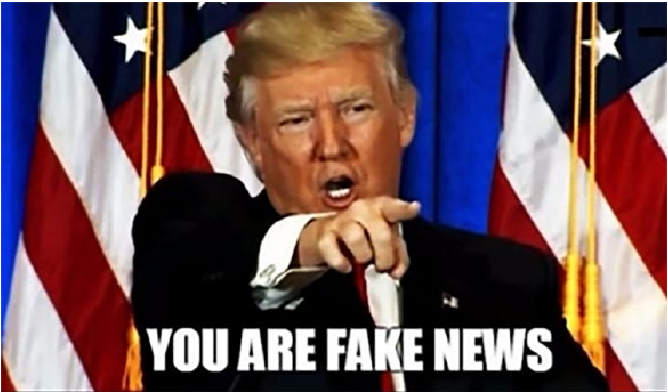 Literature is filled with nonexistent books, such as the “Necronomicon” in the works of H.P. Lovecraft, the “Treatise on the Binomial Theorem” written by Sherlock Holmes’s menace, Professor James Moriarty, etc.
Literature is filled with nonexistent books, such as the “Necronomicon” in the works of H.P. Lovecraft, the “Treatise on the Binomial Theorem” written by Sherlock Holmes’s menace, Professor James Moriarty, etc.
To that collection, we can now add Varghese v. China South Airlines, Ltd., 925 F.3d 1339 (11th Cir. 2019).
ChatGPT helpfully offered that opinion to a New York lawyer researching a technical limitations issue. Unfortunately for that lawyer, the opinion did not actually exist and neither did any of the cases that it purported to cite. An understandably vexed federal judge is now considering sanctions about the matter.
Language-model AI tools are extraordinarily powerful and making advances every day. But they aren’t designed to do legal research, and anything they say about a specific precedent needs to be verified (and not by asking ChatGPT to verify itself, as happened in the federal case cited above).
In Ortiz v. Jordan, 562 U.S. 180 (2011), the Supreme Court “held that an order denying summary judgment on sufficiency of the evidence grounds is not apealable after a trial …. a party who wants to preserve a sufficiency challenge for appeal must raise it anew in a post-trial motion.”
In Dupree v. Younger, No. 22-210 (May 25, 2023): “The question presented in this case is whether this preservation requirement extends to a purely legal issue resolved at summary judgment. The answer is no.
That distinction makes sense and should help avoid unnecessary disputes about preservation. There will, however, be disputes about “sufficiency” questions that turn on points of law; as illustrated by the longstanding definition of a “no evidence” appeal issue in Texas state practice:
“No evidence” points must, and may only, be sustained when the record discloses one of the following situations: (a) a complete absence of evidence of a vital fact; (b) the court is barred by rules of law or of evidence from giving weight to the only evidence offered to prove a vital fact; (c) the evidence offered to prove a vital fact is no more than a mere scintilla; (d) the evidence establishes conclusively the opposite of the vital fact.
City of Keller v. Wilson, 168 S.W.3d 802 (Tex. 2005).
The complex trial-court system in Texas led to Tex. Civ. Prac. & Rem. Code § 16.065, which suspends limitations for 60 days after a dismissal for lack of jurisdiction. Simple enough, in theory. But in Sanders v. The Boeing Co., the Fifth Circuit showed the deceptive complexity of that statute when it certified these two issues about the statute to the Texas Supreme Court
1) Does Texas Civil Practice & Remedies Code § 16.064 apply to this lawsuit where Plaintiffs could have invoked the prior district court’s subject matter jurisdiction with proper pleading?
2) Did Plaintiffs file this lawsuit within sixty days of when the prior judgment became “final” for purposes of Texas Civil Practice & Remedies Code § 16.064(a)(2)?
(The second issue arose from the specific question “whether Texas law would deem dht flight attendants’ tolling savings-statute deadline as running from the time the district court entered judgment or the time [the Fifth Circuit] affirmed that judgment.”) No. 22-20317 (May 25, 2023).
 The Fifth Circuit affirmed the certification of a class of GEICO car-insurance policyholders in Angell v. GEICO Adv. Ins. Co., holding, inter alia:
The Fifth Circuit affirmed the certification of a class of GEICO car-insurance policyholders in Angell v. GEICO Adv. Ins. Co., holding, inter alia:
- 3 ways to breach 1 contract = 1 injury. “GEICO’s failure to remit any of the three Purchasing Fees amounts to the same harm—a breach of the Policies. Whether GEICO is liable to Plaintiffs for any of the Purchasing Fees is dependent on an interpretation on the same language in the Policies and how the Policies to support the standing approach …. Although each of the Purchasing Fees may accrue differently, e.g., through the acquisition of a vehicle or upon the expiration of a vehicle’s registration, the complained injury stems from GEICO’s failed remittance, not the costs as assessed by the State.”
- 1 injury = typicality. “The course of conduct here is virtually the
same across the alleged deprivations of each Purchasing Fee, i.e., whether
GEICO breached the Policies.” - 1 injury = predominance. “[T]he need for individual calculation here is relatively minor when compared to the common issues that predominate. And Plaintiffs articulate a reasonably ascertainable formula. Sales tax is equivalent to 6.25% of [Adjusted Vehicle Value], and Plaintiffs contend that it can be calculated for almost 97% of the class without resort to individualized review.”
No. 22-20093 (May 12, 2023) (all citations omitted).
It was a busy week for legislative privilege; after an opinion involving the latest dispute about the Jackson airport, the Fifth Circuit again ruled in favor of legislative-privilege claims in LULAC v. Hughes. The Court held that such matters were appropriately raised by interlocutory appeal, and on the merits observed:
“The privilege log shows that the legislators did not send privileged documents to third parties outside the legislative process; instead they brought third parties into the process. That decision did not waive the privilege. The very fact that Plaintiffs need discovery to access these documents shows that they have not been shared publicly. On the other hand, if the legislators had shared the documents publicly, then they could not rely on the privilege to prevent Plaintiffs from introducing those documents as evidence. But here, where the documents have been shared with some third parties—but haven’t been shared publicly—the waiver argument fails.”
No. 22-50435 (May 17, 2023) (emphasis in original).
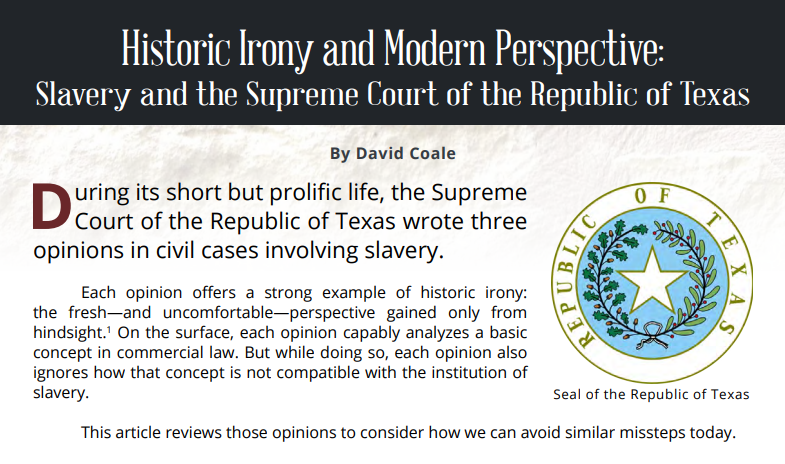 Back during the pandemic, I got a copy of “Dallam’s Decisions.” It’s a one-volume work with the opinions of the short-lived Supreme Court of the of Texas (1840-45, give or take). It’s fascinating stuff, some of that court’s work is terrible, and some is really insightful.
Back during the pandemic, I got a copy of “Dallam’s Decisions.” It’s a one-volume work with the opinions of the short-lived Supreme Court of the of Texas (1840-45, give or take). It’s fascinating stuff, some of that court’s work is terrible, and some is really insightful.
I wrote down some notes about how that court dealt with slavery, and recently turned those notes into a short article.
It just came out in the “Journal of the Texas Supreme Court Historical Society,” and you can read it starting at page 75 of this link. As you can see, I think those cases offer some good insights about our world, as well as that of the 1840s.
In response to an April 27 letter from Senator Charles Schumer expressing concern about case-assignment practices in the Northern District of Texas (which, while well-intentioned, also notably misspells “Abilene” as “Abeline”), Chief Judge David Godbey wrote back yesterday to defend the District’s practices: “In addition to the fair administration of justice, we must also consider: the number and type of civil and criminal cases filed in a division, which varies significantly from division to division; the convenience of the jurors, witnesses, parties, and attorneys; the desire of communities to have local judges; the burden of travel on court personnel; and the need to provide judicial support for divisions without a resident district judge.”
 Complex litigation about the settlement of a patent dispute led to two straightforward jurisdictional holdings in National Oilwell Varco, LP v Auto-Dril, Inc.:
Complex litigation about the settlement of a patent dispute led to two straightforward jurisdictional holdings in National Oilwell Varco, LP v Auto-Dril, Inc.:
- Res judicata still applies. While “[p]arties may not waive the issue of subject matter jurisdiction,” it is also true that “[a] party that has had an opportunity to liitgate the question of subject-matter jurisdiction may not … reopen that question in a collateral attack upon an adverse judgment.” That principle disposed of an argument that, in the earlier case where the settlement was reached, the district court lacked jurisdiction because of problems with the underlying patent.
- “‘Interpretation’ means — interpretation. In that earlier case, the district court’s order implementing the settlement said that it retained jurisdiction “in the event of a dispute concerning that agreement, to interpret and enforce the agreement, if necessary.” That langugage did not extend to subject-matter jurisdiction over a fraudulent-inducement claim, as that “is a tort claim falling outside the scope of the district court’s retained jurisdiction.”
No. 21-40648 (May 12, 2023).
 Contentious litigation about the governance of the Jackson Municipal Airport again reached the Fifth Circuit in Jackson Municipal Airport Auth. v. Harkins, No. 21-60312 (May 10, 2023). The Court accepted jurisdiction in a document-production dispute for reasons unique to governmental privilege, but its waiver reasoning is instructive more broadly:
Contentious litigation about the governance of the Jackson Municipal Airport again reached the Fifth Circuit in Jackson Municipal Airport Auth. v. Harkins, No. 21-60312 (May 10, 2023). The Court accepted jurisdiction in a document-production dispute for reasons unique to governmental privilege, but its waiver reasoning is instructive more broadly:
As relevant here, communications with third parties outside the legislature might still be within the sphere of “legitimate legislative activity” if the communication bears on potential legislation. Consequently, some communications with third parties, such as private communications with advocacy groups, are protected by legislative privilege when they are “a part and parcel of the modern legislative procedures through which legislators receive information possibly bearing on the legislation they are to consider.” Thus, we disagree with the district court’s broad pronouncement that the Legislators waived their legislative privilege for any documents or information that had been shared with third parties.
No 21-60312 (May 10, 2023) (citations omitted).
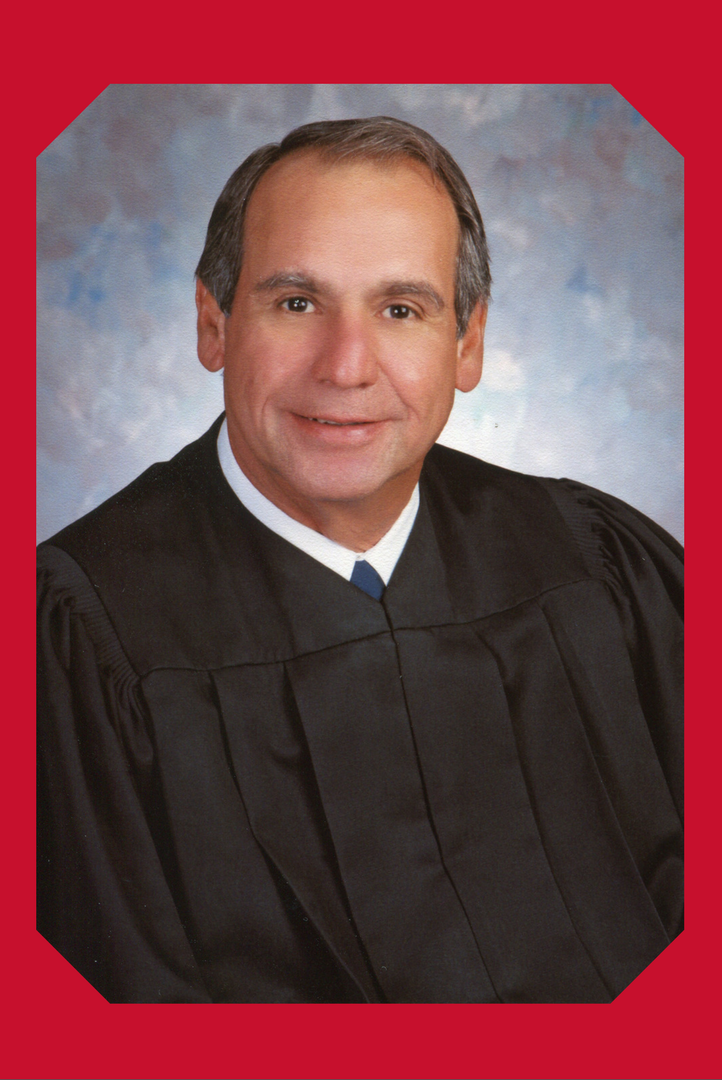 A judge at every level of the Texas state system, as well as the U.S. Court of Appeals for the Fifth Circuit, Hon. Fortunato “Pete” Benavides recently passed away. His life of dedicated public service is well described in this obituary.
A judge at every level of the Texas state system, as well as the U.S. Court of Appeals for the Fifth Circuit, Hon. Fortunato “Pete” Benavides recently passed away. His life of dedicated public service is well described in this obituary.
Among other issues presented by an unsuccessful attempt to relitigate an unsuccessful state-court takings claim in federal court, the Fifth Circuit reminded rhat the word “final” can have many meanings: “[A]lthough the rights of ‘all’ parties often need to be resolved before a judgment is ‘final’ for appeal, a ‘judgment may be final in a res judicata sense as to a part of an action although the litigation continues as to the rest.'” Tejas Motel LLC v. City of Mesquite, No. 22-10321 (March 22, 2023).
Sidestepping questions of equitable mootness, in Texxon Petrochemicals LLC v. Getty Leasing, Inc., No. 22-40357 (May 3, 2023), the Fifth Circuit affirmed the lower courts’ conclusions that this two-email exchange did not establish a contract to sell a North Austin gas station:
Despite skepticism in other opinions about vaccination programs in response to the COVID pandemic (especially when religious-liberty issues are in play), the Fifth Circuit reversed and rendered judgment for a prison doctor who administered an antipsychotic drug to a dangerous prisoner. The Court reasoned, inter alia: “[E]mergency circumstances justify the abbreviation or elimination of pre-deprivation procedures like hearings.” Pinkston v. Kuiper, No. 21-60320 (May 4, 2023) (per curiam).
 Owners of a yacht sued in Texas about an insurance-coverage issue. The Fifth Circuit affirmed the dismissal of the case because of a forum-selection clause requiring suit in England, noting;
Owners of a yacht sued in Texas about an insurance-coverage issue. The Fifth Circuit affirmed the dismissal of the case because of a forum-selection clause requiring suit in England, noting;
- Standard. When the parties have a valid forum-selection clause, the general forum non conveniens factors are modified in two ways. “‘First, the plaintiff’s choice of forum merits no weight’ because, by contracting for a specific forum, ‘the plaintiff has effectively exercised its “venue privilege” before a dispute arises.'” And “[s]econd, the private-interest factors ‘weigh entirely in favor of the preselected forum’ ….” (citations omitted).
- Limitations? Plaintiffs were concerned about how an English court would apply the statute of limitations. But the case law says that “dismissal of a suit ‘when the plaintiff has violated a contractual obligation by filing suit other than the one specified in a valid forum-seleciton clause … works no injustice on the plaintiff.'” (citation omitted).
Noble House LLC v. Certain Underwriters at Lloyd’s, London, No. 22-20281 (May 1, 2023).
 Restaurant Law Center v. U.S. Dep’t of Labor presented an appeal from the denial of a preliminary injunction about a new minimum-wage rule. The dispute was the district court’s conclusion that the plaintiff did not establish irreparable injury.
Restaurant Law Center v. U.S. Dep’t of Labor presented an appeal from the denial of a preliminary injunction about a new minimum-wage rule. The dispute was the district court’s conclusion that the plaintiff did not establish irreparable injury.
The panel majority faulted the district judge for not considering Circuit precedent that “the nonrecoverable costs of complying with a putatively invalid regulation typically constitute irreparable harm.” The majority also observed that the face of the regulation imposed certain administrative requirements, and that “[s]tringently insisting on a precise dollar figure reflects an exactitude our law does not require.”
The dissent, emphasizing the standard of review, faulted the majority for “reasoning that because some employers will be harmed by the Rule’s wide net, Plaintiffs via their member restaurants will inevitably by caught in the seine” (an observation about standing that bears on a central question in the upcoming mifepristone argument). No. 22-50145 (April 28, 2023).
 Ganpat v. Eastern Pacific Shipping PTE presented a clash between international antisuit injunctions, and produced diametrically opposed opinions about those proceedings and the appropriate judicial response to them.
Ganpat v. Eastern Pacific Shipping PTE presented a clash between international antisuit injunctions, and produced diametrically opposed opinions about those proceedings and the appropriate judicial response to them.
Majority and dissent agreed on this much:
- Ganpat, an Indian citizen who served on a ship managed by Eastern Pacific, sued in New Orleans about a nasty case of malaria that he caught while serving.
- Eastern Pacific then sued Ganpat in India, won an anti-suit injunction against the American case, and aggressively enforced that order against Ganpat, ultimately getting him jailed in India.
- These events prompted the New Orleans federal court to issue an anti-suit injunction against Eastern Pacific proceeding further with the Indian case.
But from there, the opinions–both, considerably detailed–went in opposite directions in almost every way. The majority affirmed the injunction, calling the Indian proceedings “bizarre” and saying that Eastern Pacific “evaded service,” while the dissent saw “the district court’s rulings as an attempt to compel domestic jurisdiction over a suit with highly tenuous domestic connections.”
The substantial divide between the opinions aptly frames the first sentence in the dissent’s footnote, referring to the Fifth Circuit having “take[n] a more permissive approach to foreign antisuit injunctions than many of our sister circuits: “This approach is probably wrong and should be reconsidered at an appropriate time.” No. 22-30168 (April 28, 2023) (Judge Ho (writing) and Wilson in the majority, Judge Jones dissenting).
United Natural Foods, Inc. v. NLRB, No. a seemingly dry dispute about whether NLRB’s general counsel could withdraw an unfair labor practice complaint, produced a spirited clash between majority and dissent about how the “party presentation” principle applied to the arguments advanced in that case (see United States v. Sineneng-Smith, 140 S.Ct. 1575 (2020)). No. 21-60532 (April 24, 2023).
Despite that clash, all panel members agreed that simply throwing shade at Chevron was insufficient to present an issue for appellate review:
 Turtle Island Foods (d/b/a Tofurky) makes plant-based food products, such as plant-based burgers, sausages, etc. It sued the Louisiana Agriculture Commissioner because of concerns about liability under that state’s Truth in Labeling of Food Products Act, which imposes civil penalties for “representing a food product as meat .. when the food product is not derived” from an animal.
Turtle Island Foods (d/b/a Tofurky) makes plant-based food products, such as plant-based burgers, sausages, etc. It sued the Louisiana Agriculture Commissioner because of concerns about liability under that state’s Truth in Labeling of Food Products Act, which imposes civil penalties for “representing a food product as meat .. when the food product is not derived” from an animal.
The Fifth Circuit held as follows:
- Standing. Tofurky had standing. It did not have to “establish that it openly intends to violate the Act”; only that “its intended action–continuing with its ‘plant-based’ labels that use meat-esque words–is arguably proscribed.”
- Merits. Louisiana argued that by its terms, the law “applies only to ‘persons who intentionally misbrand or misrepresent” facts about a food product. In the context of a facial challenge, the Court was “required ‘to accept a narrowing construction of a state law in order to preserve its constitutionality.'”
With the issue so framed, the Court ruled for the state and reversed the trial court’s injunction against enforcement of the law. Turtle Island Foods v. Strain, No. 22-30236 (April 12, 2023) (citations omitted).
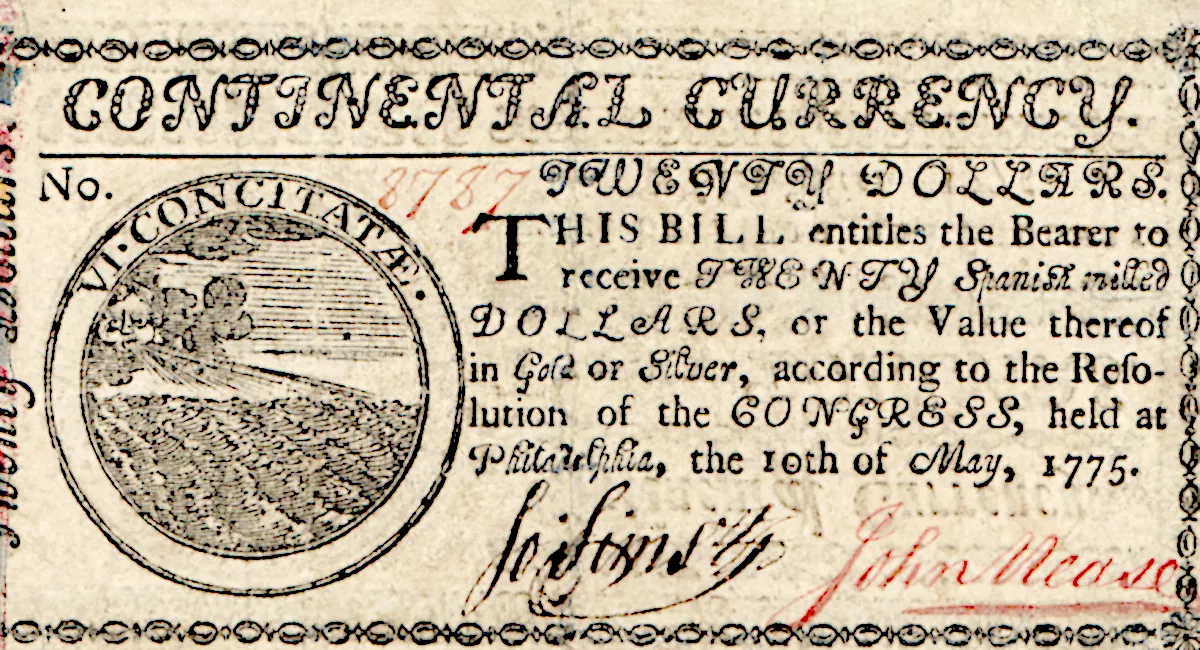 In review of a court-supervised sale of real property in a bankruptcy case, the Fifth Circuit provided a deft summary of how bankruptcy came to be an area of concern to the framers of the Constitution:
In review of a court-supervised sale of real property in a bankruptcy case, the Fifth Circuit provided a deft summary of how bankruptcy came to be an area of concern to the framers of the Constitution:
Federal bankruptcy provisions date to the Founding, embedded into our Constitution as a core tenet of the country’s economic vitality. And with good reason: “[d]ebt was an inescapable fact of life in early America . . . [that] cut across regional, class, and occupational lines,” and debtor’s prisons were antithetical to the new democratic ideal. So, in parallel with the industrialization and modernization of our markets, the Bankruptcy Code matured, its execution shifting to an independent court staffed by an array of able judges selected by merit and expert in the field, giving bankruptcy courts with their new status a crucial role in freeing the entrepreneurial energy indispensable to our nation’s economy.
SR Construction, Inc. v. Hall Palm Springs LLC, No. 21-11244 (April 17, 2023) (citations omitted).
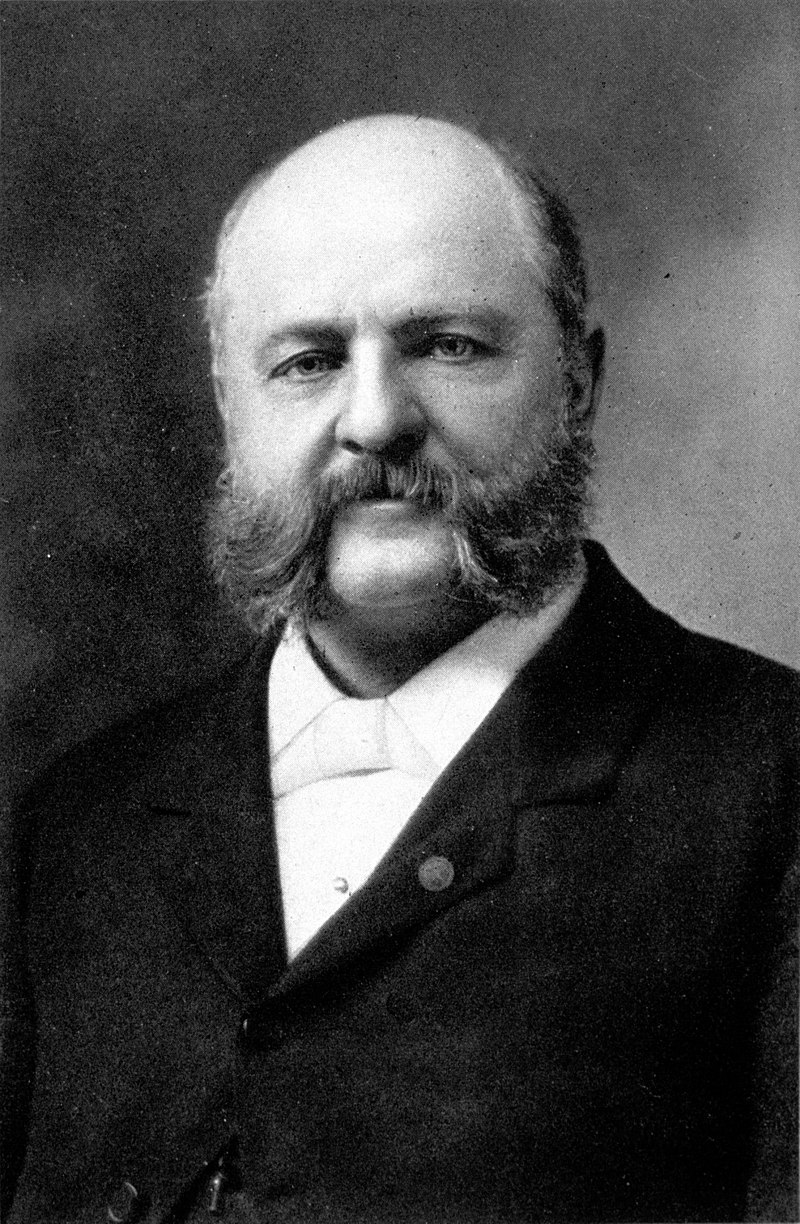 After the Supreme Court’s stay ruling yesterday, a Fifth Circuit panel will proceed wth oral argument on May 17 in New Orleans. (Information about the audio livestream may be found in that link.)
After the Supreme Court’s stay ruling yesterday, a Fifth Circuit panel will proceed wth oral argument on May 17 in New Orleans. (Information about the audio livestream may be found in that link.)
While the Supreme Court’s order said very little, the votes of seven Justices were consistent with the position of Judge Haynes when the stay issue was before the Fifth Circuit, and no Justice indicated agreement with the analysis of the per curiam panel majority. (I recently observed in Slate that the “Dobbs-era Supreme Court is well aware of the judicial strand of conservative thought, as well as the political.”).
The plaintiffs in Spano v. Whole Foods, Inc. contended that a child with severe allergies was injured after eating a mislabeled cupcake. The district court dismissed the claims as preempted by the Federal Food, Drug, and Cosmetic Act, and the Fifth Circuit reversed, stating that “[t]he question is whether Appellants have pled tort claims which have an independent state law basis,” and concluding that “[t]ey have”:
Each of their tort claims is ‘a recognized state tort claim’ rather than ‘a freestanding federal cause of action based on violation of the FDA’s regulations.’ Appellants ably lay out in their brief that each of their allegations is based in state law. In response, Whole Foods contends that “[e]very one of the … causes of action is specifically based on federally mandated allergen warnings under the FDCA.” While each of the causes of action does reference violations of FDA regulations, violations can only be, and only are, presented as evidence to “prove [Whole Foods’] breach of the state duty by showing that [Whole Foods] violated the FDA’s [food labeling] regulations.’ If, as the case develops, it becomes clear that there is no independent state duty upon which the Spanos can hang a particular claim, that claim will be preempted. On the pleadings, none appear to contain that fault.”
No. 22-50593 (April 14, 2023) (citations omitted).
A copyright action is governed by a three-year statute of limitations. In Martinelli v. Hearst Newspapers, LLC, the Fifth Circuit confirmed that recent Supreme Court decisions did not overruled Circuit precedent that applies a discovery rule to that statute. No. 22-2033 (April 13, 2023).
President Biden has nominated Hon. Irma Ramirez, a long-serving magistrate judge from the Dallas area, for the vacant seat on the Fifth Circuit created by the resignation of Gregg Costa. More detail is in the coverage by the Dallas Morning News.
 The motions panel ruled in Alliance for Hippocratic Medicine v. FDA, No. 23-10362 (April 12, 2023). In a nutshell, the panel majority concludes that (1) the plaintiffs have standing based on the percentage of mifepristone users who have side effects, (2) the plaintiffs’ challenge to FDA’s original approval of mifepristone for use in medication abortions is likely time-barred, and (3) FDA did not meet its burden, as the party seeking a stay, to show that plaintiff’s other challenges to FDA’s regulation of mifepristone were time-barred or otherwise fatally flawed. Judge Haynes would have granted an administrative stay and otherwise deferred to the merits panel (who is, in fact, not constrained by any of (1)-(3)). Further proceedings in the Supreme Court appear likely.
The motions panel ruled in Alliance for Hippocratic Medicine v. FDA, No. 23-10362 (April 12, 2023). In a nutshell, the panel majority concludes that (1) the plaintiffs have standing based on the percentage of mifepristone users who have side effects, (2) the plaintiffs’ challenge to FDA’s original approval of mifepristone for use in medication abortions is likely time-barred, and (3) FDA did not meet its burden, as the party seeking a stay, to show that plaintiff’s other challenges to FDA’s regulation of mifepristone were time-barred or otherwise fatally flawed. Judge Haynes would have granted an administrative stay and otherwise deferred to the merits panel (who is, in fact, not constrained by any of (1)-(3)). Further proceedings in the Supreme Court appear likely.
Valuable 600Camp merchandise can be yours if you identify the distinguished-looking gentleman to the right.
In Abdullah v. Paxton, a former state employee sued about potential future injuries, resulting from a state law that requires certain retirement funds to divest from companies that boycott Israel. The Fifth Circuit affirmed the dismissal of his suit on standing grounds, reminding:
The only way Abdullah could demonstrate he will “actually” suffer future economic harm is if he plausibly alleged that, as a result of § 808’s constraints, the Systems will not be able to pay out his benefits at all when he reaches retirement. Abdullah tries his hand at this argument, urging that the Systems are underfunded, so there is a credible threat the fund will fail. But we are unconvinced—this theory is simply too speculative (and also ignores Texas’s ability to obtain funds by taxes, fees, assessments, etc.).
No. 22-50315 (April 11, 2023) (citations omitted).
Longrunning litigation about pretrial bail in Texas criminal cases came to an end with a second en banc opinion, Daves v. Dallas County, No. 18-11368 (March 31, 2023). It held by a substantial majority that legislative changes to the relevant laws had mooted the case, and (8-7) that Younger abstention should have barred the case from proceeding in federal court in the first instance. The breakdown of votes and opinions is as follows:
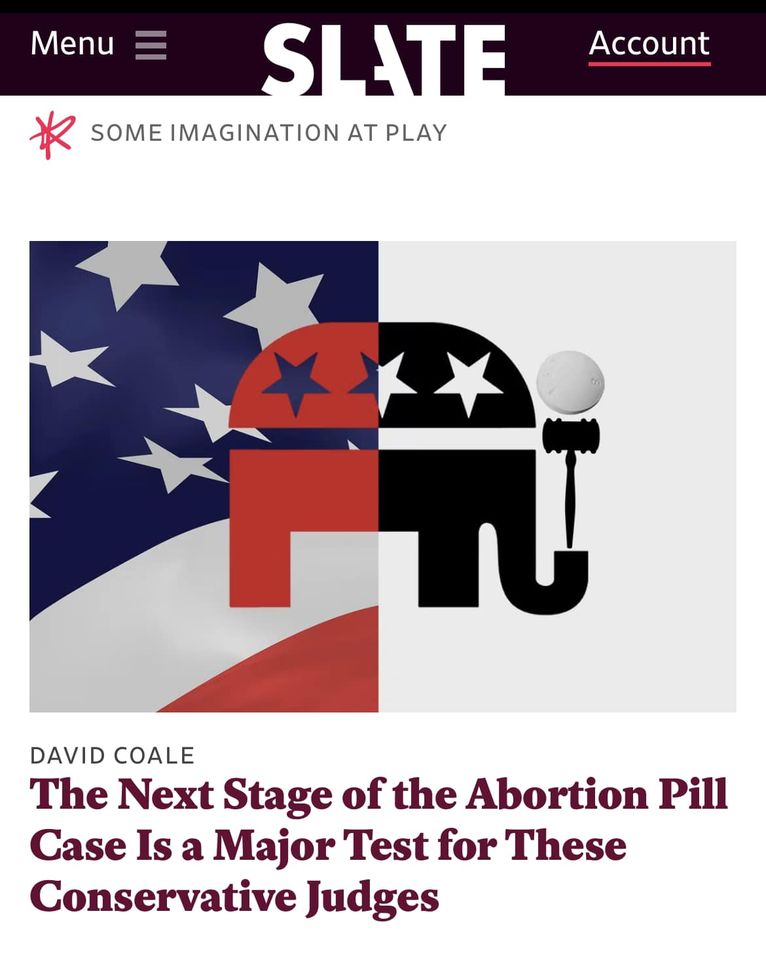 I have an article in Slate today about a challenge presented by the appeal of the medication-abortion decision. The case presents a “politically” conservative outcome (restricted abortion access), that rests on a standing argument that is not “judicially” conservative because of the amount of speculation it requires.
I have an article in Slate today about a challenge presented by the appeal of the medication-abortion decision. The case presents a “politically” conservative outcome (restricted abortion access), that rests on a standing argument that is not “judicially” conservative because of the amount of speculation it requires.
 Austin’s regulation of large freeway billboards returned to the Fifth Circuit after an earlier opinion was reversed by the Supreme Court; on remand, a 2-1 majority cut to the chase and concluded: “Municipalities have traditionally been given wide discretion in the domain of sign regulations. Austin is entitled to that latitude. AFFIRMED.” A dissent read the signs given by the Supreme Court differently. Reagan National Adv. of Austin, Inc. v. City of Austin, No. 19-50354 (March 30, 2023).
Austin’s regulation of large freeway billboards returned to the Fifth Circuit after an earlier opinion was reversed by the Supreme Court; on remand, a 2-1 majority cut to the chase and concluded: “Municipalities have traditionally been given wide discretion in the domain of sign regulations. Austin is entitled to that latitude. AFFIRMED.” A dissent read the signs given by the Supreme Court differently. Reagan National Adv. of Austin, Inc. v. City of Austin, No. 19-50354 (March 30, 2023).
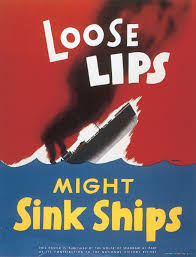 In Direct Biologics, LLC v. McQueen, a preliminary-injunction case involving a noncompetition agreement, the Fifth Circuit found no abuse of discretion when the district court declined to presume irreparableharm. Among other factors reviewed by the Court, it considered:
In Direct Biologics, LLC v. McQueen, a preliminary-injunction case involving a noncompetition agreement, the Fifth Circuit found no abuse of discretion when the district court declined to presume irreparableharm. Among other factors reviewed by the Court, it considered:
- “[I]t is unclear whether federal courts should apply a state-law ‘presumption of irreparable harm’ when determining whether a preliminary injunction should issue in federal court.
- “The district court did not abuse its discretion by declining to presume irreparable injury based on McQueen’s breach of his non-compete covenants. As previously explained, the Employment Agreement broadly prohibited him from providing “similar” services to Vivex that he provided to DB. The Operating Agreement covenant was even broader. Thus, McQueen could have breached these covenants even without actually using or disclosing DB’s confidential information or trade secrets.“
- “[T]he district court could have found the presumption rebutted by Vivex’s evidence that McQueen was not in fact competing with DB through his work for Vivex.”
No. 22-50442 (April 3, 2023).
The abortion-medication opinion has been issued, staying the FDA’s approval of mifepristone, and staying itself for seven days to allow appeal.
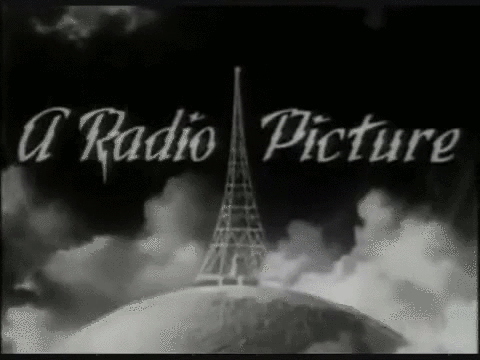 Without reference to the Federalist Papers or the records from the Constitutional Convention, the Fifth Circuit held in Consumers’ Research v. FCC that the six criteria in 47 U.S.C. § 254(b) gave the FCC “intelligible principles” to guide its regulation of communication, unlike the “total absence of guidance” identified last year in Jarkesy v. SEC, 34 F.4th 446 (5th Cir. 2022). No. 22-60008 (March 24, 2023).
Without reference to the Federalist Papers or the records from the Constitutional Convention, the Fifth Circuit held in Consumers’ Research v. FCC that the six criteria in 47 U.S.C. § 254(b) gave the FCC “intelligible principles” to guide its regulation of communication, unlike the “total absence of guidance” identified last year in Jarkesy v. SEC, 34 F.4th 446 (5th Cir. 2022). No. 22-60008 (March 24, 2023).
The original panel opinion in Devillier v. State of Texas, No. 21-40750 (Nov. 28, 2022) (footnotes omitted), said that in federal court “the Fifth Amendment Takings Clause as applied to the states through the Fourteenth Amendment does not provide a right of action for takings claims against a state,” but in state court, “[t]he Supreme Court of Texas recognizes takings claims under the federal and state constitutions, with differing remedies and constraints turning on the character and nature of the taking ….” Devillier v. State of Texas, No. 21-40750 (Nov. 28, 2022) (footnotes omitted).
The panel revised its opinion in January to say only: “The State of Texas appeals the district court’s decision that Plaintiffs’ federal Taking Clause claims against the State may proceed in federal court. Because we hold that the Fifth Amendment Takings Clause as applied to the states through the Fourteenth Amendment does not provide a right of action for takings claims against a state, we VACATE the district court’s decision and REMAND for further proceedings. Nothing in this opinion is intended to displace the Supreme Court of Texas’s role as the sole determinant of Texas state law.” A detailed footnote described the Texas Supreme Court’s holdings in this area.
An en banc vote proceeded, which produced an 11-5 vote against rehearing, released on March 23, 2023:
Following Pepi Corp. v. Galliford, 254 S.W.3d 457, 462 (Tex. App.—Houston [1st Dist.] 2007, pet. denied.), the Fifth Circuit summarized when a quantum meruit claim could be pursued even when an express contract applies:
“First, recovery in quantum meruit is allowed when a plaintiff has partially performed an express contract but, because of the defendant’s breach, the plaintiff is prevented from completing the contract. …
Second, “[r]ecovery in quantum meruit is sometimes permitted when a plaintiff partially performs an express contract that is unilateral in nature.” [and]
Third, “a breaching plaintiff in a construction contract can recover the reasonable value of services less any damages suffered by the defendant if the defendant accepts and retains ‘the benefits arising as a direct result of the plaintiff’s partial performance.’”
Credos Indus. Supplies & Rentals, LLC v. Targa Pipeline Mid-Cont. WestTex, LLC, No. 22-20480-CV (March 24, 2023).
